Forums
- Forums
- Axis And Allies Forum
- General Discussion
- Aviation News
Aviation News
Post a reply
- Go to Previous topic
- Go to Next topic
- Go to Welcome
- Go to Introduce Yourself
- Go to General Discussion
- Go to Screenshots, Images and Videos
- Go to Off topic
- Go to Works in Progress
- Go to Skinning Tips / Tutorials
- Go to Skin Requests
- Go to IJAAF Library
- Go to Luftwaffe Library
- Go to RAF Library
- Go to USAAF / USN Library
- Go to Misc Library
- Go to The Ops Room
- Go to Made in Germany
- Go to Campaigns and Missions
- Go to Works in Progress
- Go to Juri's Air-Raid Shelter
- Go to Campaigns and Missions
- Go to Works in Progress
- Go to Skinpacks
- Go to External Projects Discussion
- Go to Books & Resources
-
 Main AdminA Norwegian F-35 Lightning II, taxis off the runway June 29, 2017 at Luke Air Force Base, Ariz. The F-35 was flown approximately 1,000 miles from the factory in Fort Worth, Texas. (U.S. Air Force photo by Staff Sgt. Jensen Stidham)
Main AdminA Norwegian F-35 Lightning II, taxis off the runway June 29, 2017 at Luke Air Force Base, Ariz. The F-35 was flown approximately 1,000 miles from the factory in Fort Worth, Texas. (U.S. Air Force photo by Staff Sgt. Jensen Stidham)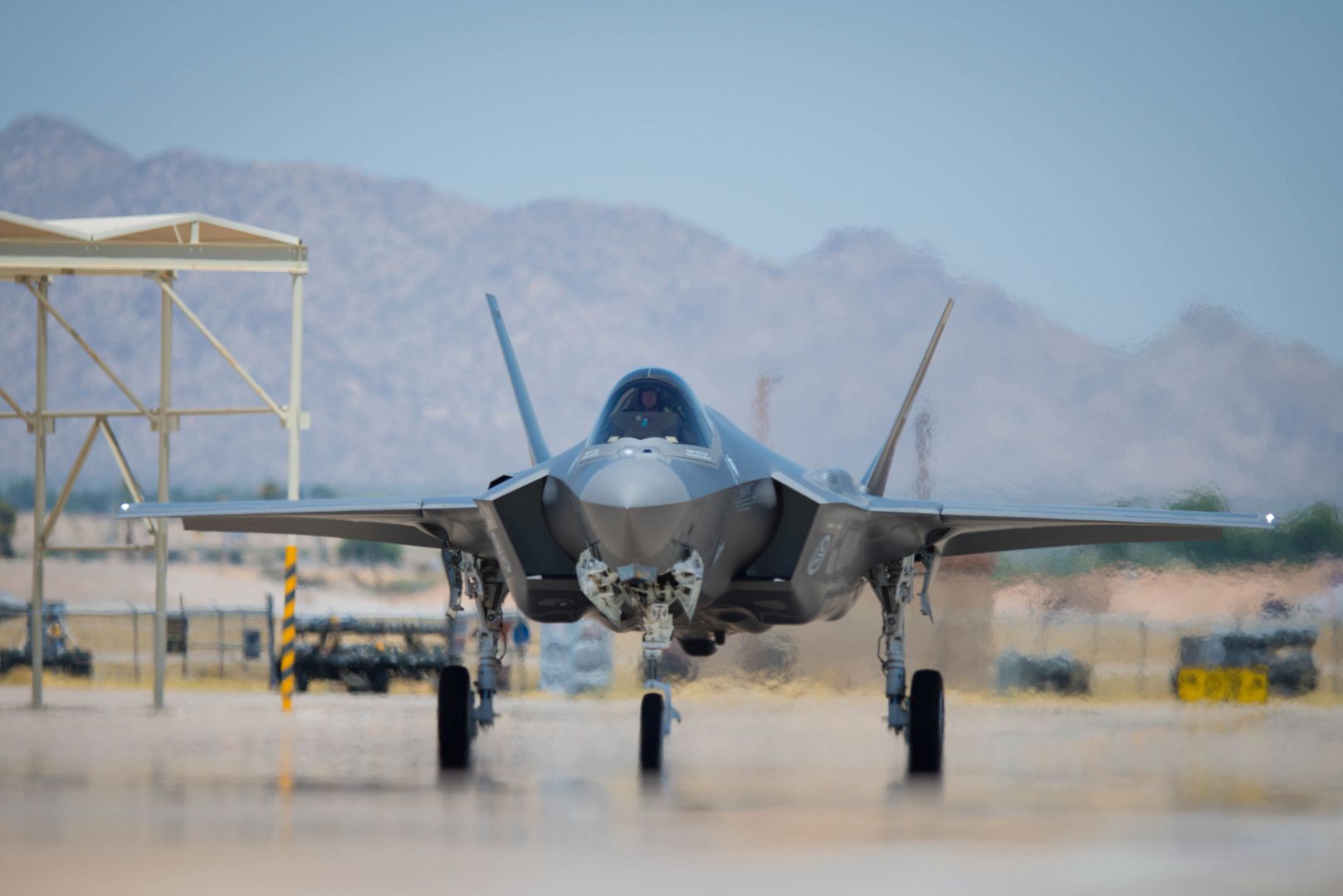
A Norwegian F-35 taxis in after landing on the runway June 29, 2017, at Luke Air Force Base, Ariz. This marks the seventh Norwegian F-35 to arrive at Luke. (U.S. Air Force photo by Airman 1st Class Alexander Cook)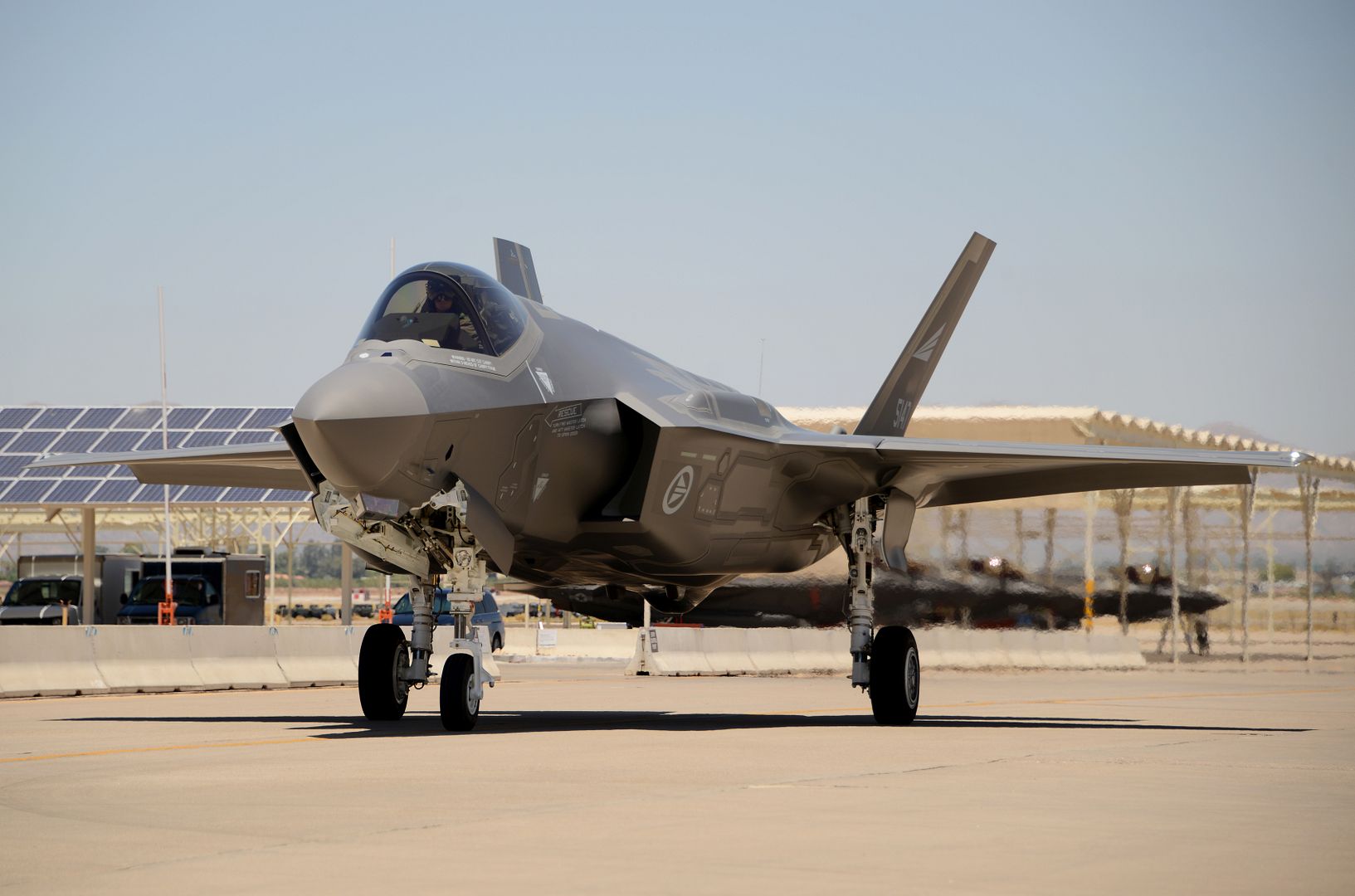
SULU SEA (June 28, 2017) Sailors assigned to the "Wildcards" of Helicopter Sea Combat Squadron 23 fly an MH-60S Seahawk with a .50 caliber machine gun during flight quarters aboard littoral combat ship USS Coronado (LCS 4). The U.S. and Philippine navies are conducting a coordinated counter-piracy patrol to protect maritime commerce and enhance maritime security in the region by enhancing both navies' ability to respond to transnational criminal and terror activity. (U.S. Navy photo by Mass Communication Specialist 3rd Class Deven Leigh Ellis/Released)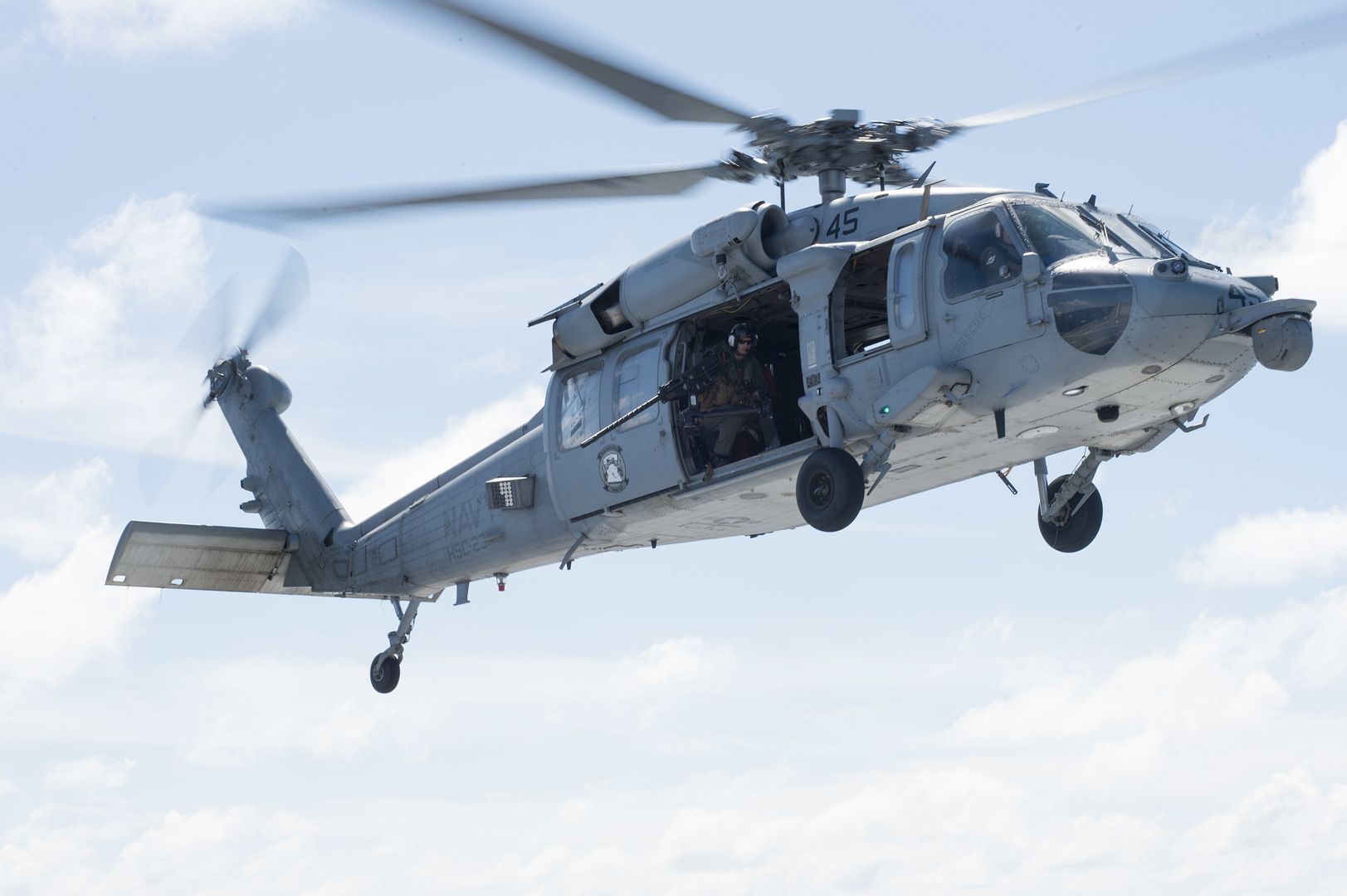
Brig. Gen. Charles S. Corcoran breaks away from a KC-10 Extender after refueling his F-22A Raptor during a sortie over Iraq, June 30, 2017. Corcoran flew his fini flight with U.S. Air Force Central Command Commander Lt. Gen. Jeffrey L. Harrigian in support of Combined Joint Task Force-Operation Inherent Resolve and the fight against ISIS. (U.S. Air Force photo by Staff Sgt. Marjorie A. Bowlden)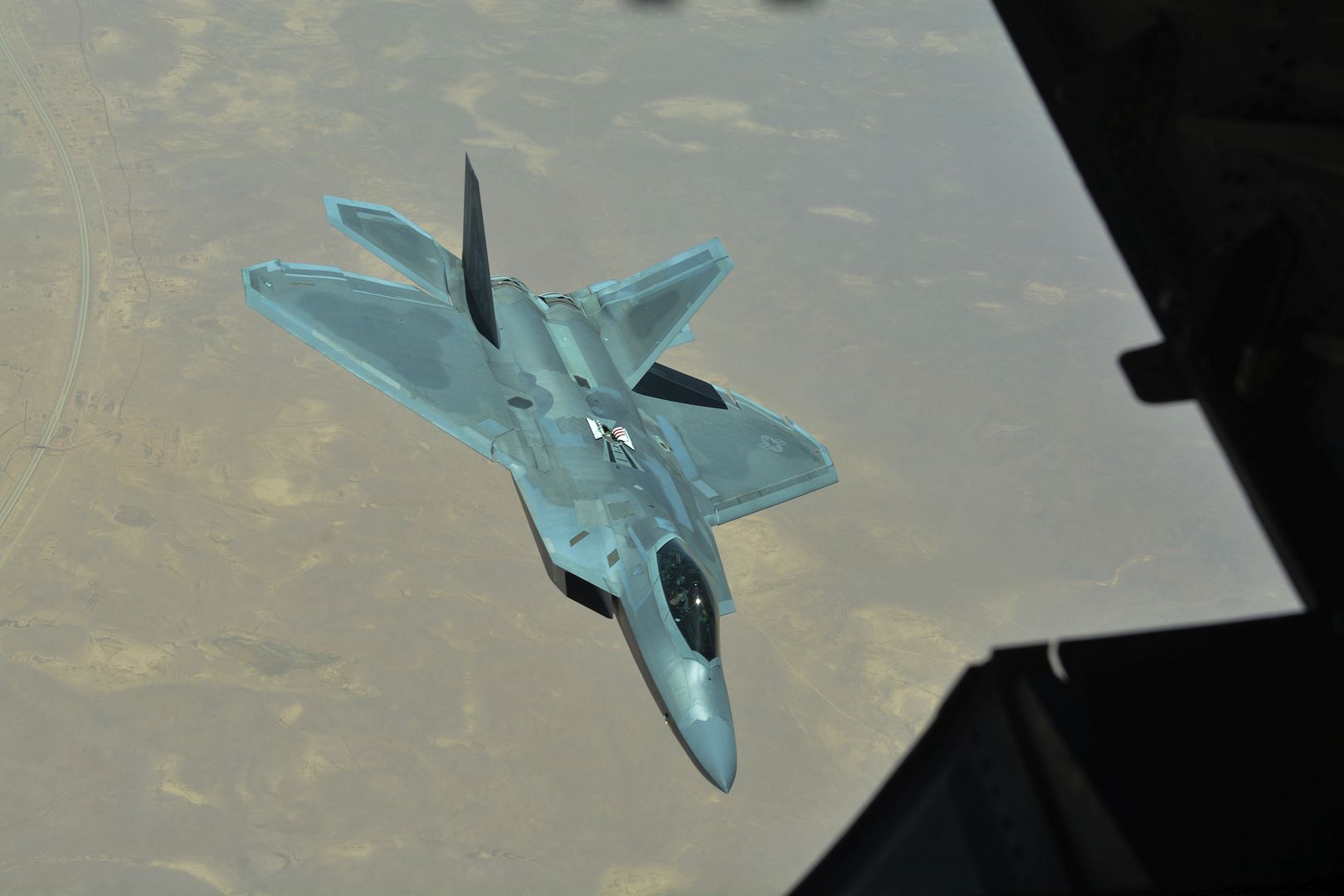
Lt. Gen. Jeffrey L. Harrigian, commander of U.S. Air Forces Central Command, refuels his F-22A Raptor from a KC-10 Extender over the Arabian Gulf, June 30, 2017. Harrigian served as the wingman of outgoing 380th Air Expeditionary Wing Commander Brig. Gen. Charles S. Corcoran during his fini-flight. The two generals flew in support of Combined Joint Task Force-Operation Inherent Resolve and the fight against ISIS. (U.S. Air Force photo by Staff Sgt. Marjorie A. Bowlden)
HUNTSVILLE, Ala., June 30, 2017 /PRNewswire/ -- The U.S. government and Sikorsky, a Lockheed Martin (NYSE: LMT) company, today signed a five-year contract for 257 H-60 Black Hawk helicopters to be delivered to the U.S. Army and Foreign Military Sales (FMS) customers. The multi-year contract will yield significant savings for the U.S. government compared with purchasing the same quantity across five separate annual agreements.
The "Multi-Year IX" contract for UH-60M Black Hawk and HH-60M MEDEVAC aircraft marks the ninth multiple-year contract for Sikorsky and the U.S. government for H-60 helicopters. The contract value for expected deliveries is approximately $3.8 billion and includes options for an additional 103 aircraft, with the total contract value potentially reaching $5.2 billion. Actual production quantities will be determined year-by-year over the life of the program based on funding allocations set by Congress and Pentagon acquisition priorities. The deliveries are scheduled to begin in October of this year and continue through 2022.
The UH-60M/HH-60M helicopters are the latest and most modern in a series of Black Hawk variants that Sikorsky has been delivering to the Army since 1978. They provide additional payload and range, advanced digital avionics, better handling qualities and situational awareness, active vibration control, improved survivability, and improved producibility.
"Four decades of production, strong program execution and delivery on behalf of the warfighter, coupled with great affordability for the taxpayer, have been the cornerstones of this program," said Sam Mehta, President, Defense Systems and Services, Sikorsky. "This contract allows us to continue supporting the important missions the Black Hawk performs as the workhorse utility and medical evacuation (MEDEVAC) helicopter in the U.S. Army inventory."
Colonel Billy Jackson, the Utility Helicopters Project Manager stated that, "This contract will provide our Army, sister services and allies with state-of-the-art modernized helicopters to complete crucial missions and save lives. Moreover, this effort will stabilize our manufacturing base and control long-term costs, and ultimately provide significant savings to the taxpayer."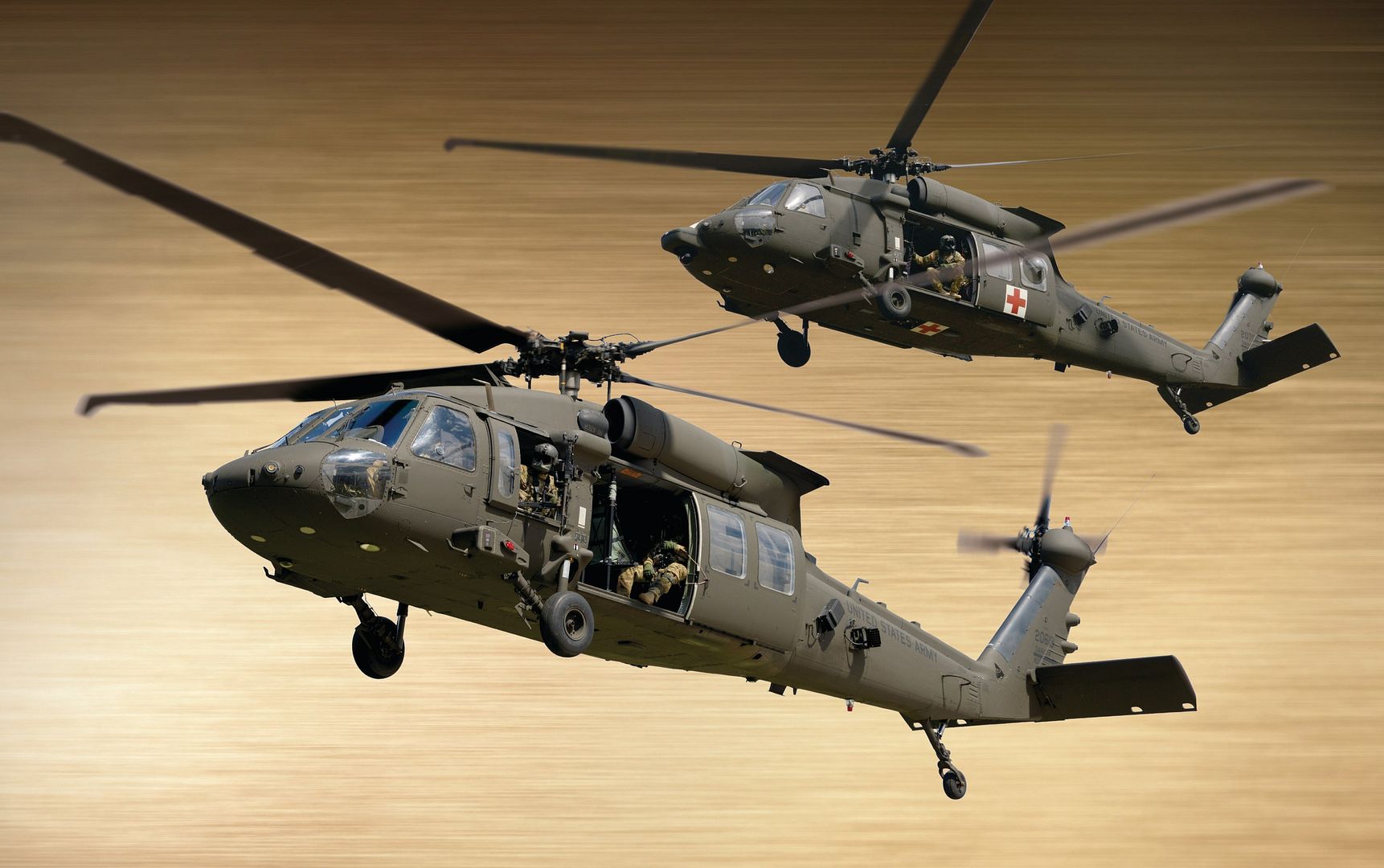
Swedish charter airline Novair, has taken delivery of its first A321neo on lease from Air Lease Corporation (ALC). The A321neo will join Novair?s existing Airbus fleet of two A320 Family aircraft.
The aircraft is equipped with comfortable 18 inch wide seats in a single class 221 passenger layout. Powered by CFM LEAP-1A engines, the A321neo will be based in Stockholm and operate charter flights from Sweden, Denmark and Norway to destinations in southern Europe and Egypt.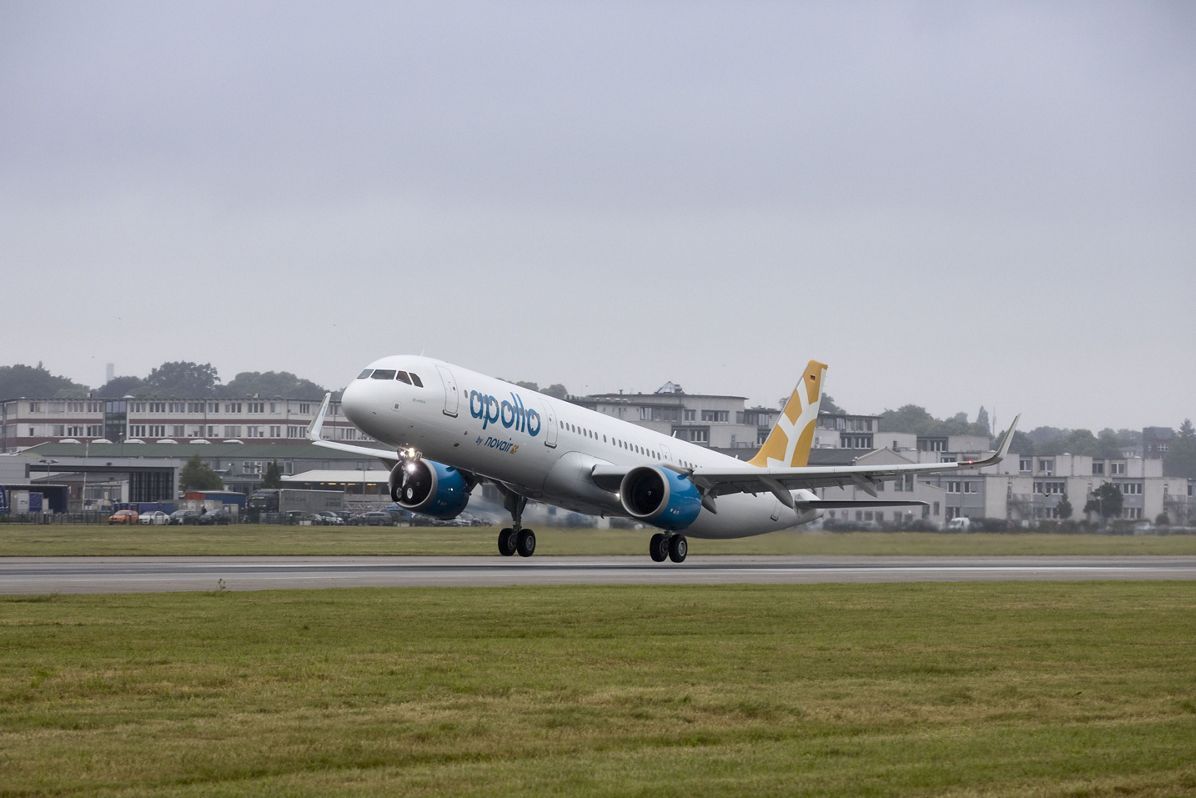
The A320neo Family incorporates the very latest technologies including new generation engines and Sharklets, which together deliver at least 15 percent fuel savings at delivery and 20 percent by 2020 as well as 50 percent noise reduction. With more than 5,000 orders received from 92 customers since its launch in 2010, the A320neo Family has captured some 60 percent share of the market.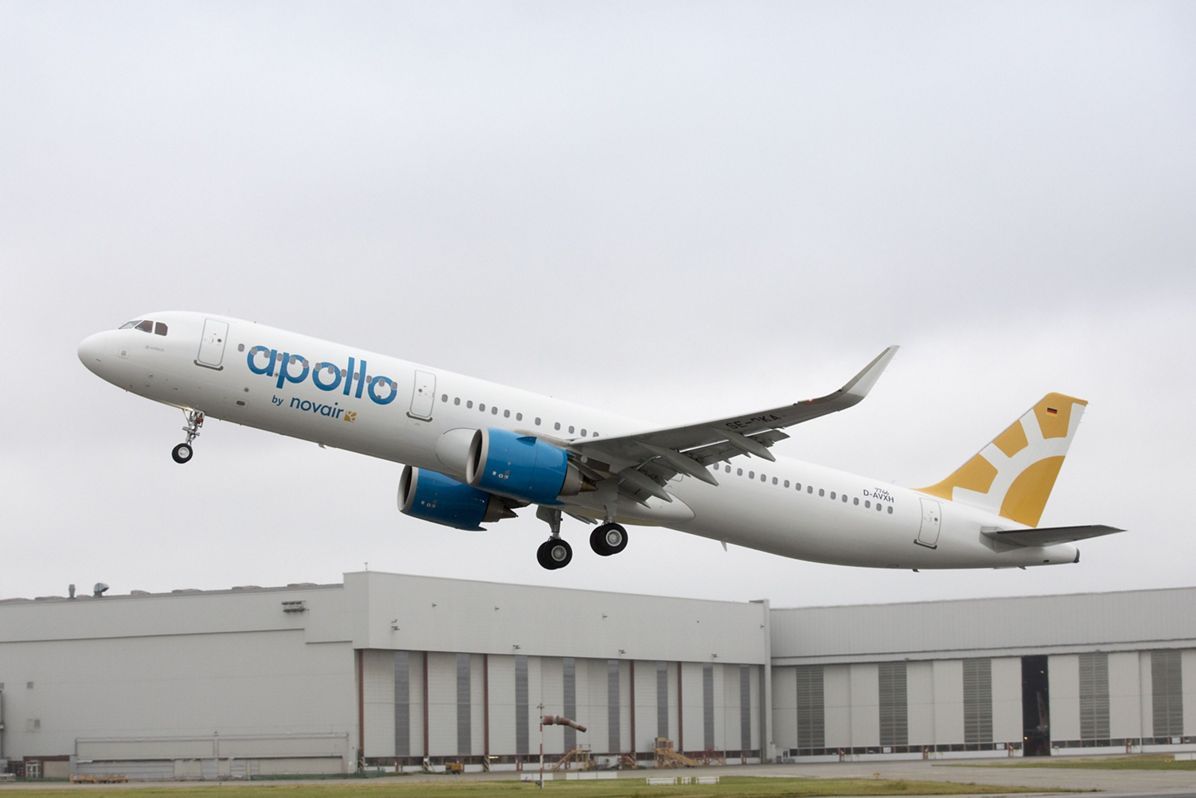
-
 Main AdminMadrid, 29 June 2017 ? Germany and Norway officially joined the European/NATO program to acquire Airbus A330 Multi-Role Tanker Transport aircraft along with Netherlands and Luxembourg.
Main AdminMadrid, 29 June 2017 ? Germany and Norway officially joined the European/NATO program to acquire Airbus A330 Multi-Role Tanker Transport aircraft along with Netherlands and Luxembourg.
The two nations committed to participating in the project through the signing of a Memorandum of Understanding at NATO HQ in Brussels today.
Known as the Multinational Multi-Role Tanker Transport Fleet (MMF) the programme was initiated by the European Defence Agency (EDA) in 2012. Europe?s organization for the management of cooperative armament programmes - OCCAR - manages the MMF acquisition phase as Contract Executing Agent on behalf of the NATO Support and Procurement Agency (NSPA). Following the acquisition phase, NSPA will be responsible for the complete life-cycle management of the fleet.
The Programme is funded by the four nations who will have the exclusive right to use these NATO?owned aircraft which will operate in a pooling arrangement. The aircraft will be configured for in-flight refuelling, the transport of passengers and cargo, and medical evacuation flights. The first two aircraft have already been ordered to be delivered from Airbus Defence and Space?s tanker conversion line at Getafe near Madrid in 2020. Five additional aircraft will now be ordered, and that order will include options for up to four further aircraft.
NSPA GM, Peter Dohmen said ?As NATO?s Support and Procurement Agency, we are proud to be a key enabler of this critical project to help European nations meet their air transport and refuelling requirements. The successful cooperation in this project - bringing together all our capabilities - bodes extremely well for further future NATO / EU collaboration.?
OCCAR Director, Arturo Alfonso-Meiri?o said: ?The MMF programme has broken new ground in bringing together the combined capabilities of the EDA, NSPA and OCCAR as one team, with each organisation working within its particular sphere of expertise. I very much welcome that this important initiative has now attracted additional partners to join, and it still includes options for the participation of even more countries.?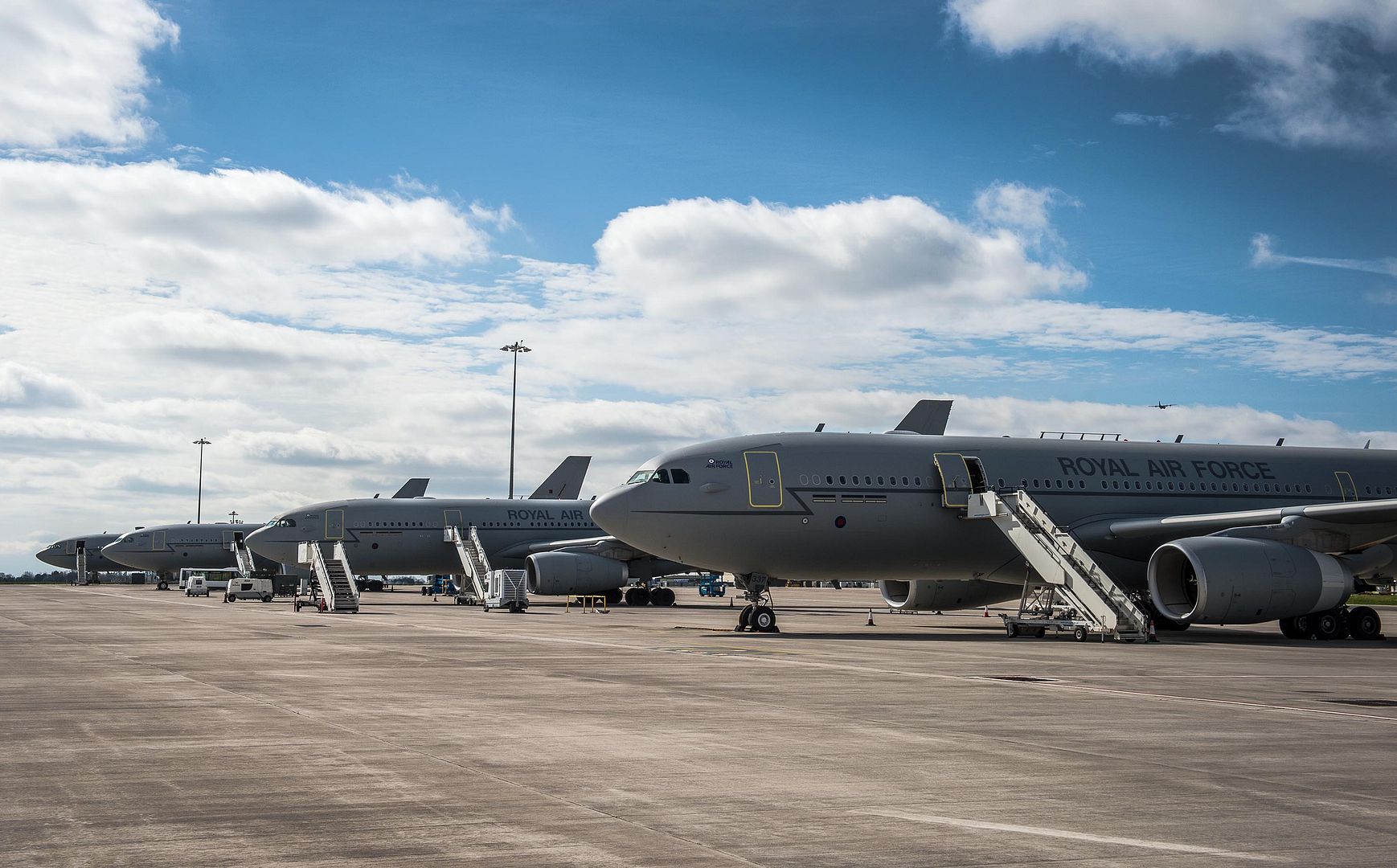
EDA Chief Executive Jorge Domecq said: ?The MMF is a prime example of European defence cooperation which shows that once a capability shortfall has been jointly identified, European nations can pull together, work on a common project aimed at filling the gap, and eventually deliver. It?s Pooling & Sharing at its best?.
Airbus Defence and Space Head of Military Aircraft Fernando Alonso said: ?The A330 MRTT has established itself firmly as the world?s premier tanker/transport aircraft. It is extremely satisfying to now see it adopted as the core asset of one of Europe?s most important cooperative defence programmes. We hope that this collaborative approach will serve as a model for future joint procurements.?
-
 Main AdminA Royal Australian Air Force F/A-18F Super Hornet departs after receiving fuel from a U.S. Air Force KC-135 Stratotanker assigned to 340th Expeditionary Air Refueling Squadron in support of Operation Inherent Resolve on July 1, 2017. The KC-135 Stratotanker provides aerial refueling support to U.S. and coalition aircraft 24/7 throughout the U.S. Air Forces Central Command area of responsibility. (U.S. Air Force photo by Tech. Sgt. Amy M. Lovgren)
Main AdminA Royal Australian Air Force F/A-18F Super Hornet departs after receiving fuel from a U.S. Air Force KC-135 Stratotanker assigned to 340th Expeditionary Air Refueling Squadron in support of Operation Inherent Resolve on July 1, 2017. The KC-135 Stratotanker provides aerial refueling support to U.S. and coalition aircraft 24/7 throughout the U.S. Air Forces Central Command area of responsibility. (U.S. Air Force photo by Tech. Sgt. Amy M. Lovgren)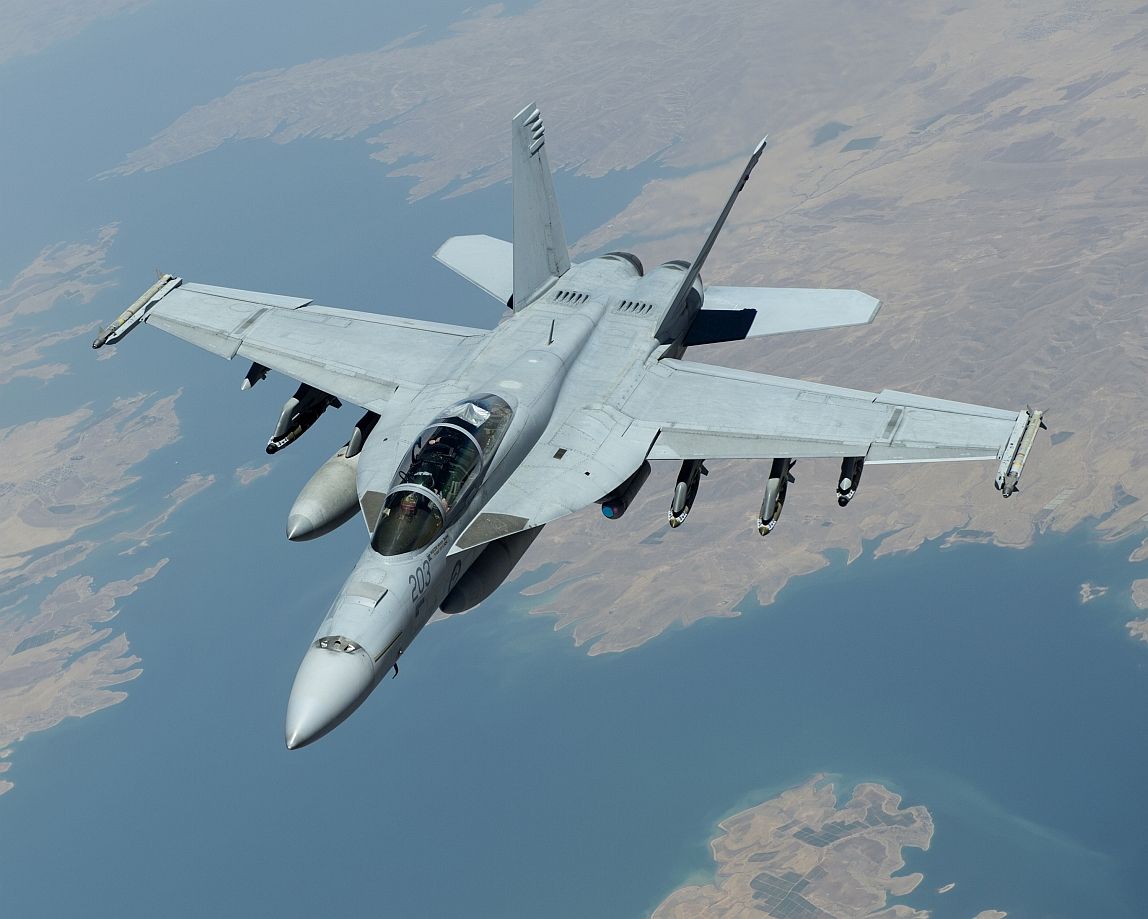
A U.S. Air Force A-10 Thunderbolt II dispenses a flare during a flight in support of Operation Inherent Resolve on July 1, 2017. The A-10 Thunderbolt II provides close air support to ground forces throughout the U.S. Air Forces Central Command area of responsibility. (U.S. Air Force photo by Tech. Sgt. Amy M. Lovgren)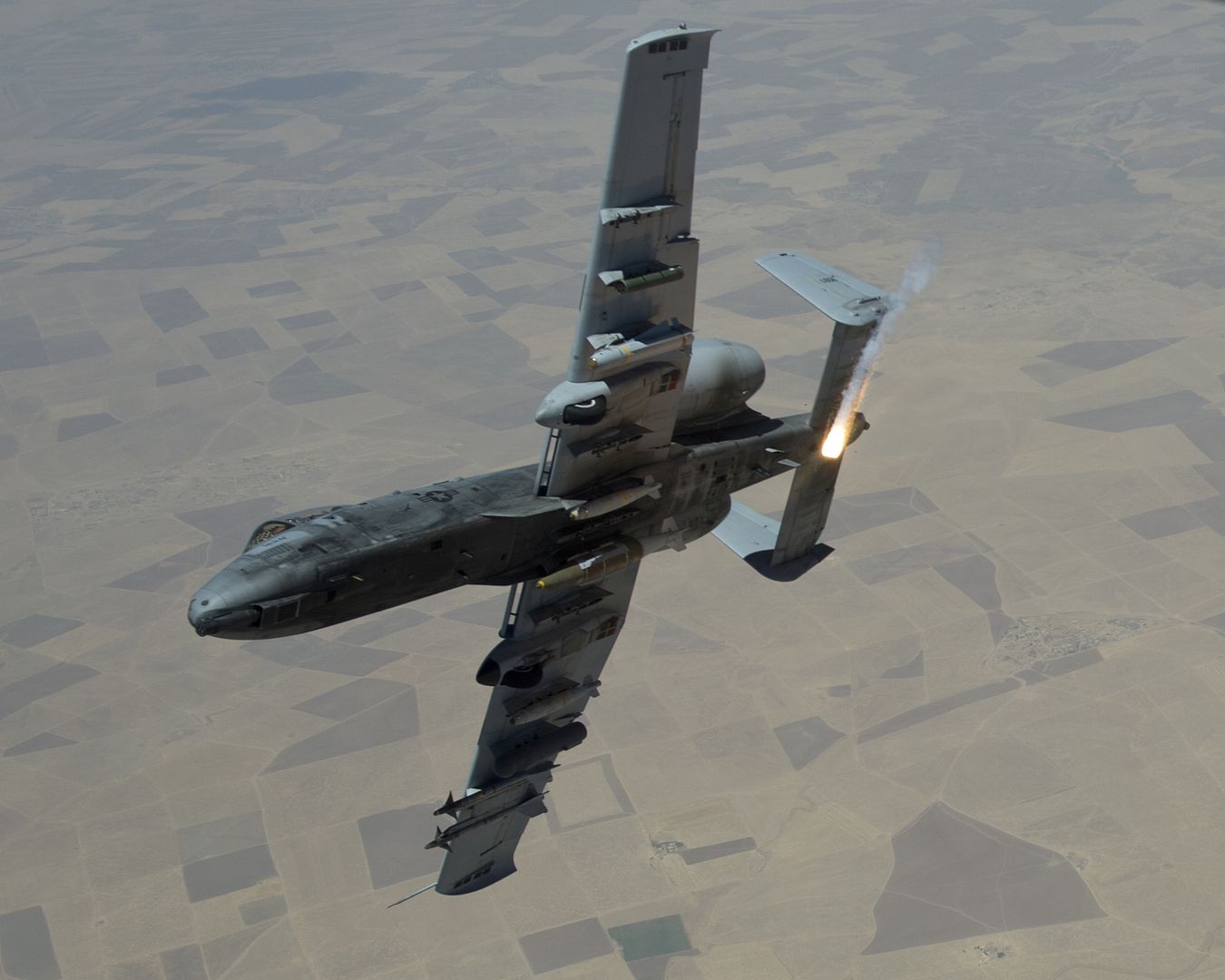
Zhuhai, China, The heavy twin H215 helicopter, a member of the world-renowned Super Puma family, is demonstrating its multi-mission capabilities for firefighting, power line missions, law enforcement, and passenger transportation as well as its excellent performance in high and hot conditions during its debut demo tour in China.
Kicking off the two-week long tour with demo flights today in Zhuhai, the H215 will then ferry flight to both Shenzhen and Lijiang. The H215 will cover more than 2,000 km across China, attesting in real time to its excellent long range capabilities, power, speed, and large useful payload.
?It is a pleasure for us to welcome the H215 for the first time in China, as we foresee a very strong future for this helicopter in the Chinese market,? said Marie Agnes V?ve, General Manager of Airbus Helicopters China. ?The H215 is perfectly suited to meet China?s growing demand for heavy helicopters as it prepares to build up its forest aerial surveillance and firefighting capabilities.?
Customers will be invited on-board the helicopter to appreciate its excellent performance, high reliability and advanced technologies. The H215 will also showcase its superior firefighting capabilities, performing a series of flight demonstrations using a Bambi Bucket to extinguish fires.
The H215 is a proven multipurpose helicopter, combining advanced avionics and a reliable platform for rugged multi-mission capabilities. Its baseline configuration has been optimized to offer extremely competitive direct operating and maintenance costs. Standard features include proven Makila 1A1 engines, the latest generation flight management system, and the most modern technologies, which include a glass cockpit avionics system and the renowned 4-axis autopilot from Airbus Helicopters? advanced H225 ? providing flight envelope protection, unrivalled precision and automatic hover stability in even the harshest operating conditions.
?The H215 will easily complement the current fleet of nearly 40 Super Puma aircraft already performing a wide range of missions in China, from oil & gas operations to aerial work to VIP transportation,? said Vincent Dufour, VP Commercial Airbus Helicopters China. ?This highly robust and versatile rotorcraft provides excellent performance and will be a real asset for the country as the demand for helicopters to protect its citizens and natural landscapes continues to increase.?
Airbus Helicopters is the leader in the civil turbine market in China with a market share of about 40%. For the first time in 2016, China became Airbus Helicopters? largest civil market in terms of annual bookings. The company has seen steady growth in the region and is poised for the trend to continue - Airbus Helicopters broke ground last month on its H135 Final Assembly Line (FAL) in Qingdao, becoming the first Western helicopter manufacturer to establish a FAL in the country.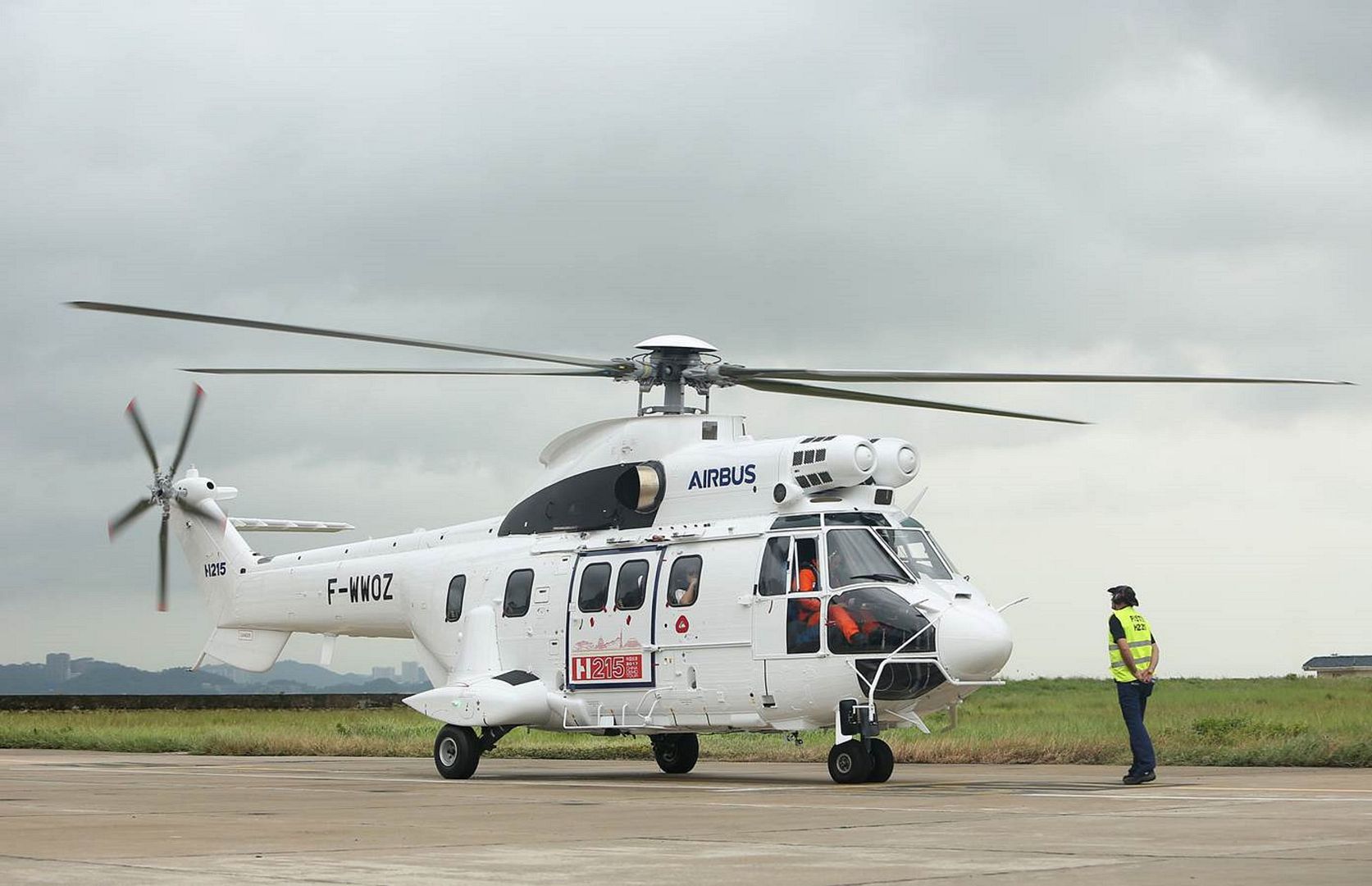
-
 Main AdminA French air force Rafale departs after receiving fuel from a U.S. KC-135 Stratotanker in support of Operation Inherent Resolve, July 1, 2017. The Rafale is a twin-engine fighter intended to perform air supremacy, interdiction, aerial reconnaissance, ground support, in-depth strike and anti-ship strike missions. (U.S. Air Force photo's by Staff Sgt. Michael Battles)
Main AdminA French air force Rafale departs after receiving fuel from a U.S. KC-135 Stratotanker in support of Operation Inherent Resolve, July 1, 2017. The Rafale is a twin-engine fighter intended to perform air supremacy, interdiction, aerial reconnaissance, ground support, in-depth strike and anti-ship strike missions. (U.S. Air Force photo's by Staff Sgt. Michael Battles)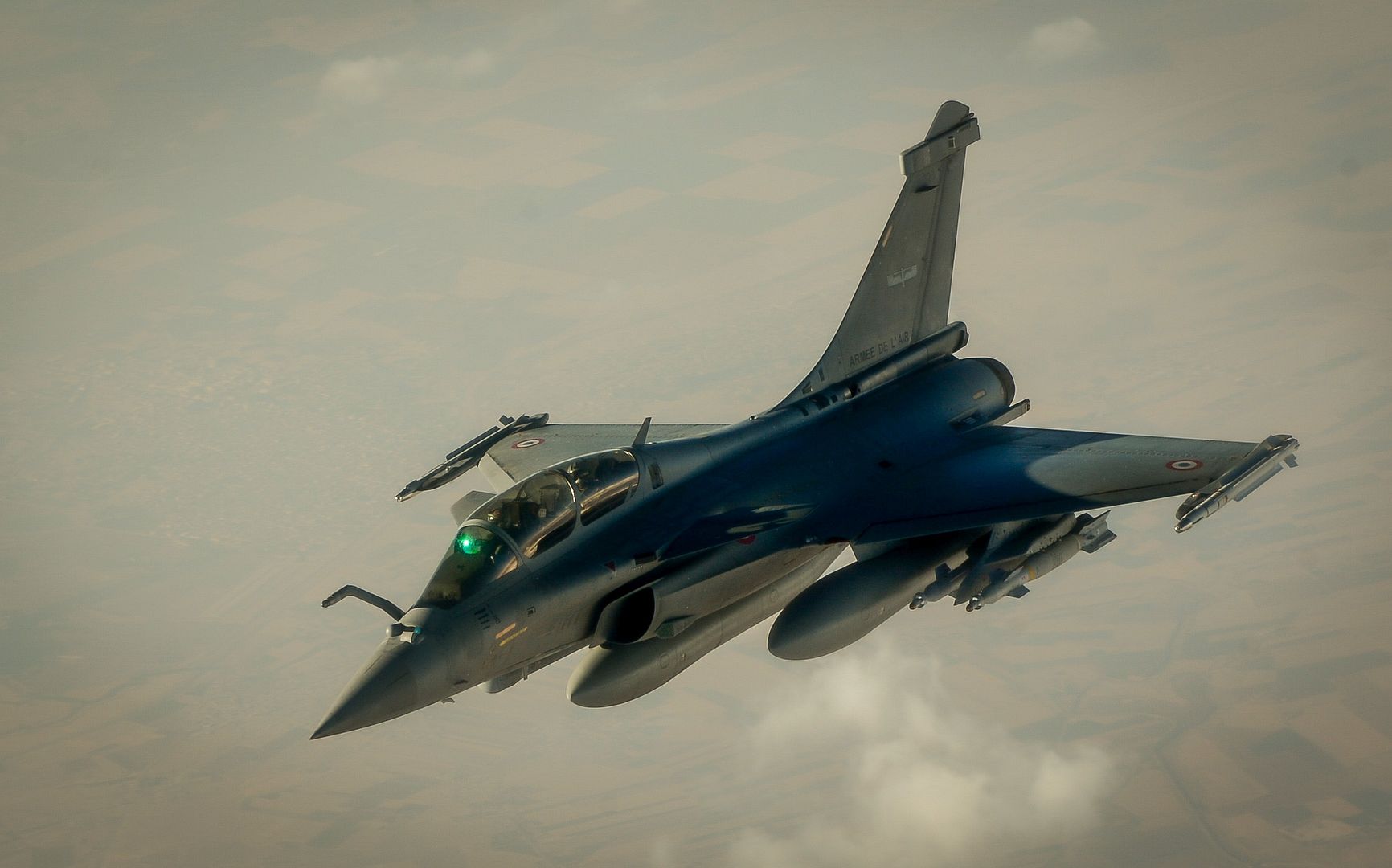
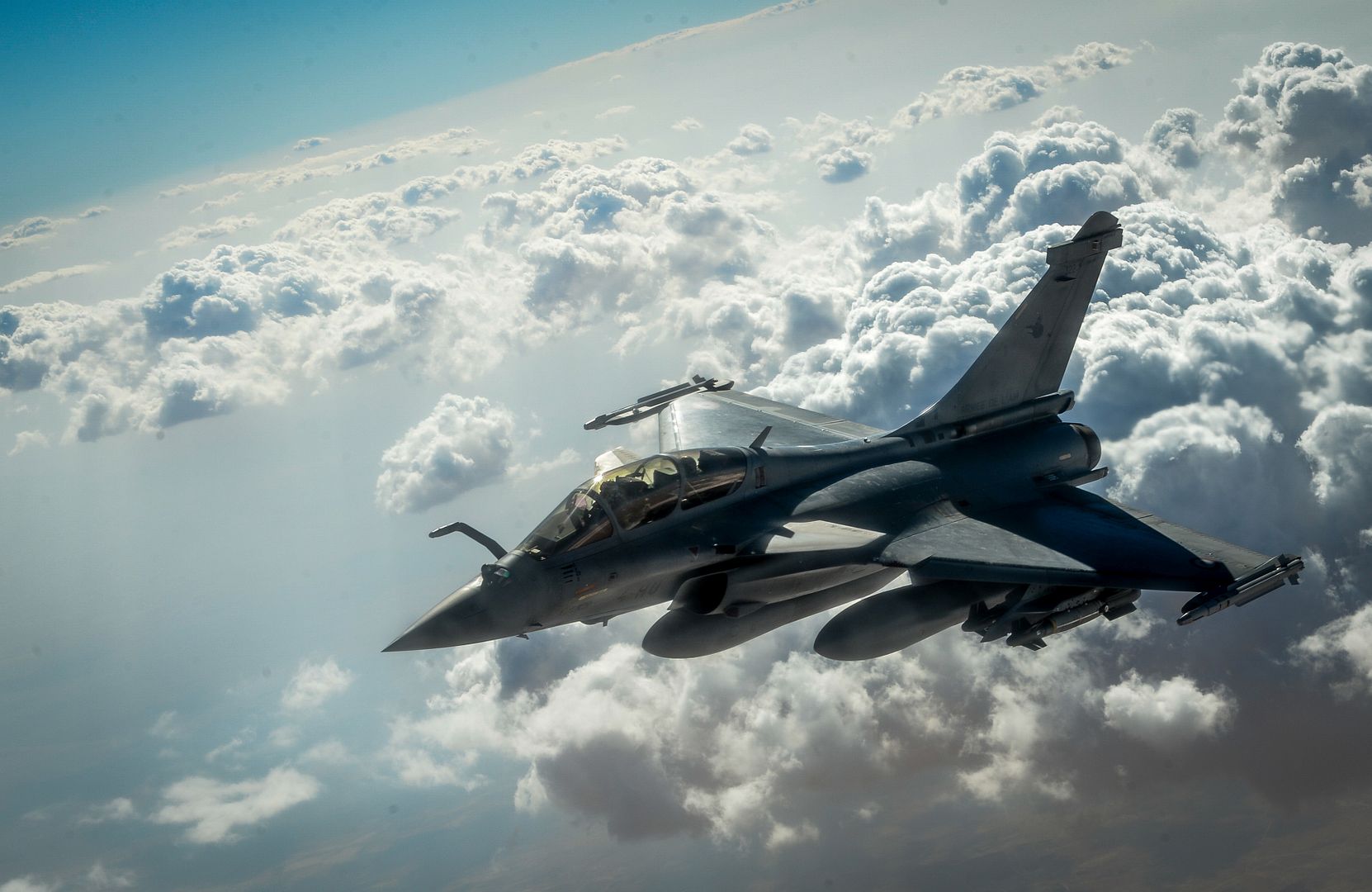
A U.S. Marine Corps EA-6B Prowler departs after receiving fuel from a 340th Expeditionary Air Refueling Squadron KC-135 Stratotanker in support of Operation Inherent Resolve, July 1, 2017. The Prowler provides an umbrella of protection to coalition aircraft and ground troops in the fight against ISIS by intercepting communications and denying the enemy's ability to communicate. (U.S. Air Force photo by Staff Sgt. Michael Battles)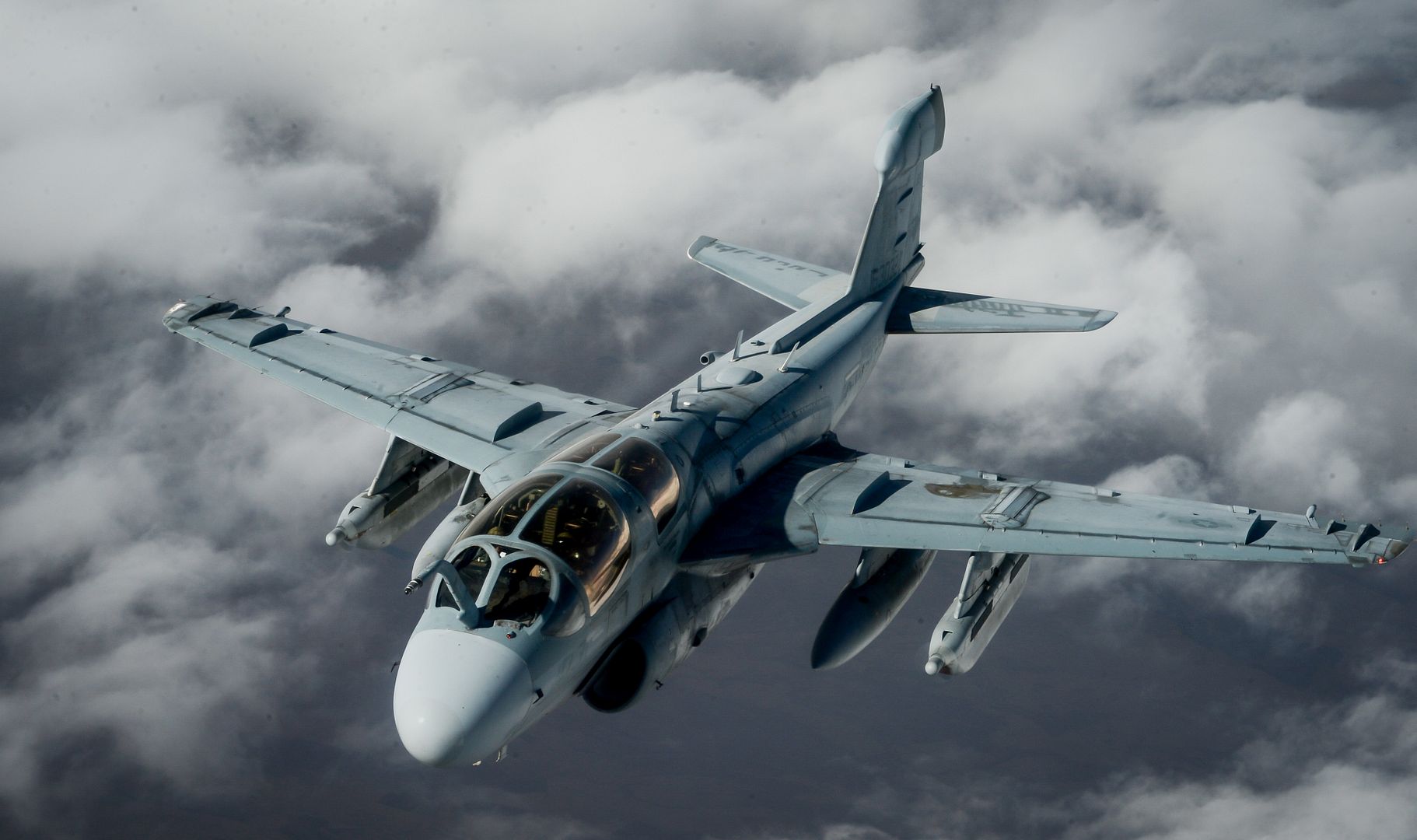
A U.S. Marine Corps EA-6B Prowler fires flares after receiving fuel from a 340th Expeditionary Air Refueling Squadron KC-135 Stratotanker in support of Operation Inherent Resolve, July 1, 2017. The Prowler provides an umbrella of protection to coalition aircraft and ground troops in the fight against ISIS by intercepting communications and denying the enemy's ability to communicate. (U.S. Air Force photo by Staff Sgt. Michael Battles)
-
 Main AdminA Royal Australian air force E-7A Wedgetail departs after receiving fuel from a 340th Expeditionary Air Refueling Squadron KC-135 Stratotanker in support of Operation Inherent Resolve, July 3, 2017. The E-7A can control the tactical battle space, providing direction for fighter aircraft, surface combatants and land based elements, as well as supporting aircraft such as tankers and intelligence platforms. (U.S. Air Force photo by Staff Sgt. Michael Battles)
Main AdminA Royal Australian air force E-7A Wedgetail departs after receiving fuel from a 340th Expeditionary Air Refueling Squadron KC-135 Stratotanker in support of Operation Inherent Resolve, July 3, 2017. The E-7A can control the tactical battle space, providing direction for fighter aircraft, surface combatants and land based elements, as well as supporting aircraft such as tankers and intelligence platforms. (U.S. Air Force photo by Staff Sgt. Michael Battles)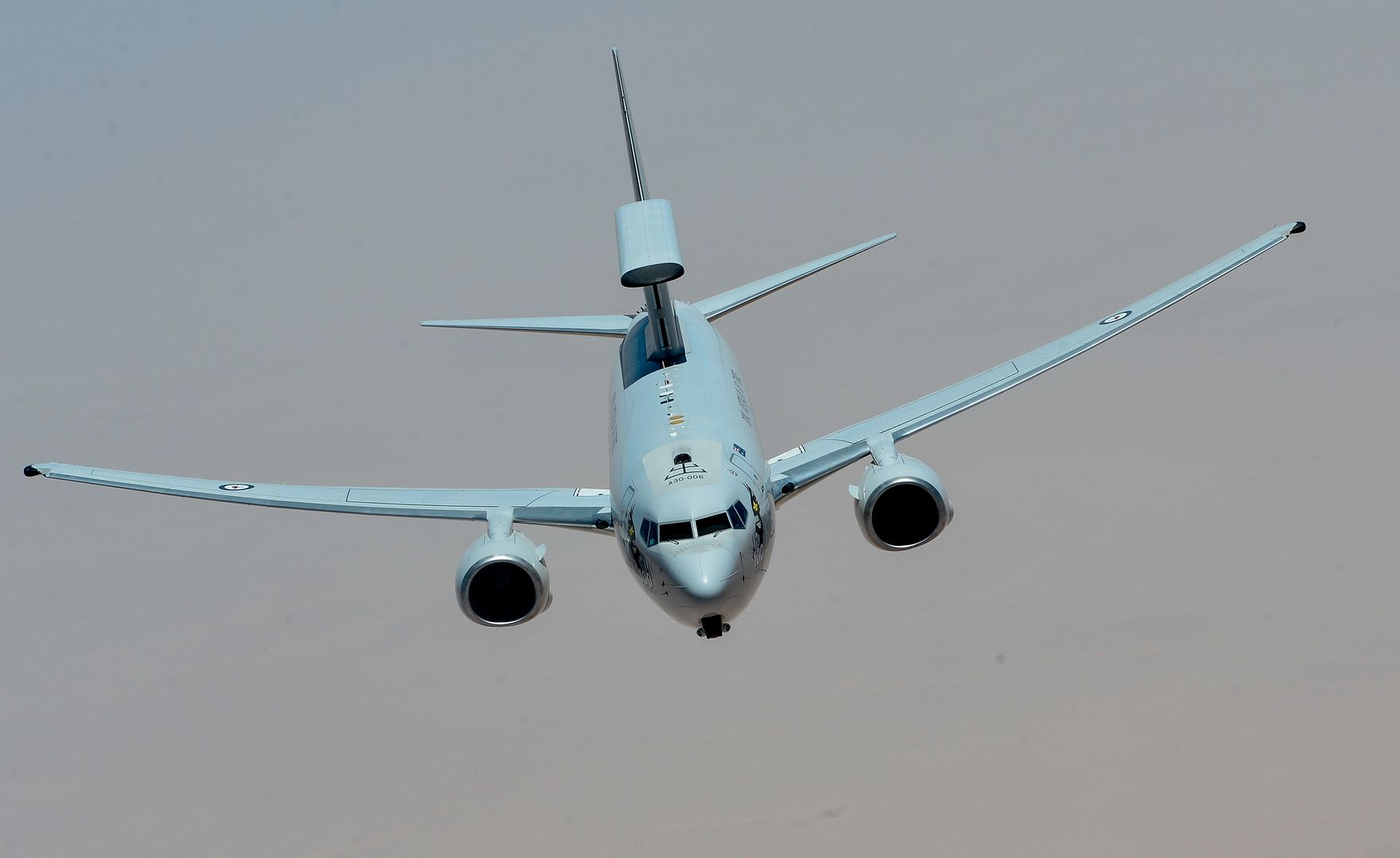
Marines with Marine Fighter Attack Squadron (VMFA) 211 ?Wake Island Avengers,? 3rd Marine Aircraft Wing, salute each other after an F-35B Lightning II pilot landed at Nellis Air Force Base, Nev., July 5. A total of 10 aircraft and more than 250 Marines with VMFA-211 will participate in Red Flag 17-3, a realistic combat training exercise involving the U.S. Air Force and its allies, to assess the squadron?s ability to deploy and support contingency operations using the F-35B. Red Flag 17-3 begins July 10 and ends July 28. (U.S. Marine Corps photo by Sgt. Lillian Stephens/Released)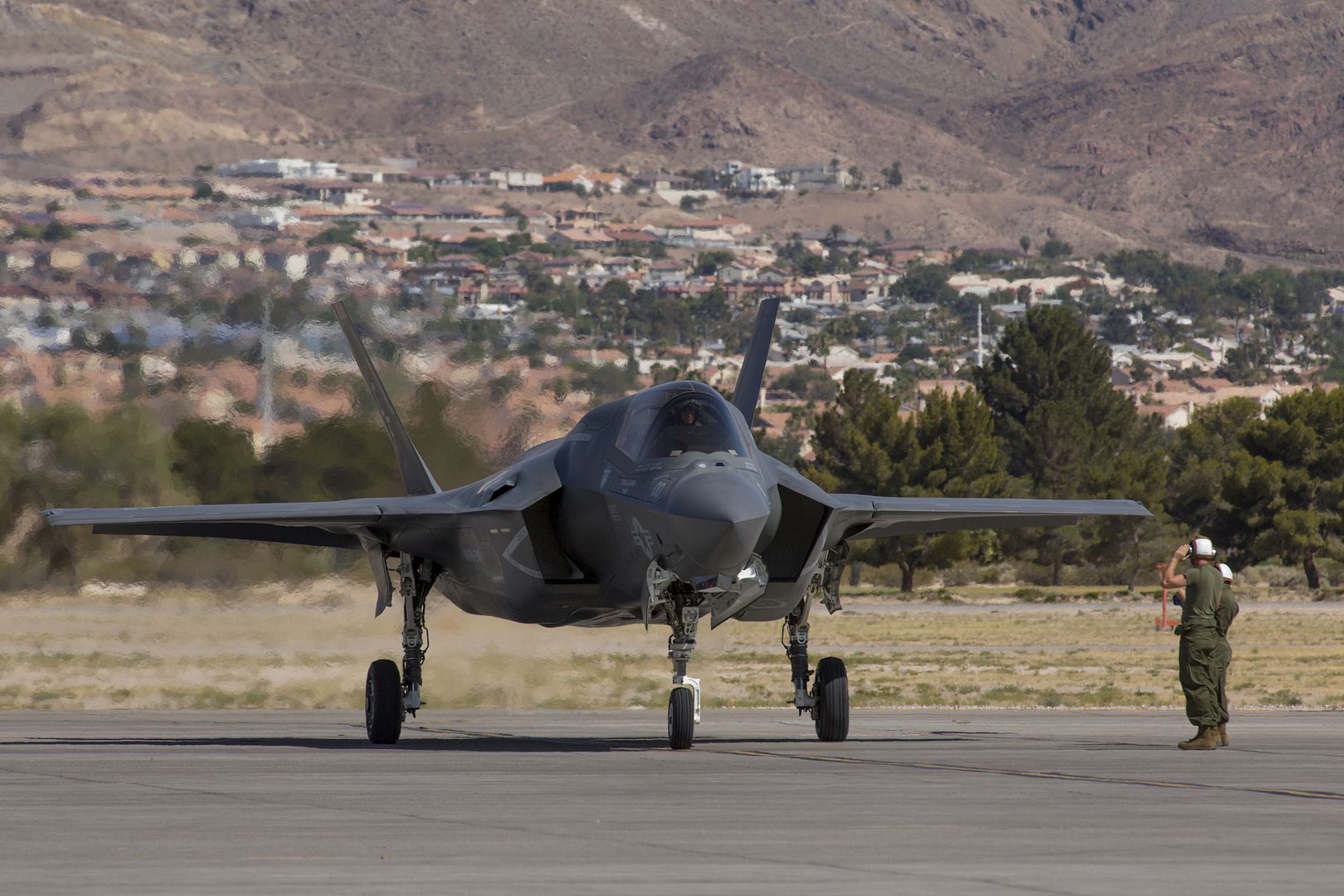
WATERS OFF GUAM (June 30, 2017) An F/A-18E Super Hornet, from the "Blue Diamonds" of Strike Fighter Squadron (VFA) 146, lands on the flight deck of the aircraft carrier USS Nimitz (CVN 68), June 30, 2017, in the Pacific Ocean. Nimitz is currently on deployment in the U.S. 7th Fleet area of operations. The U.S. Navy has patrolled the Indo-Asia Pacific routinely for more than 70 years promoting regional peace and security. (U.S. Navy photo by Mass Communication Specialist 3rd Class Ian Kinkead)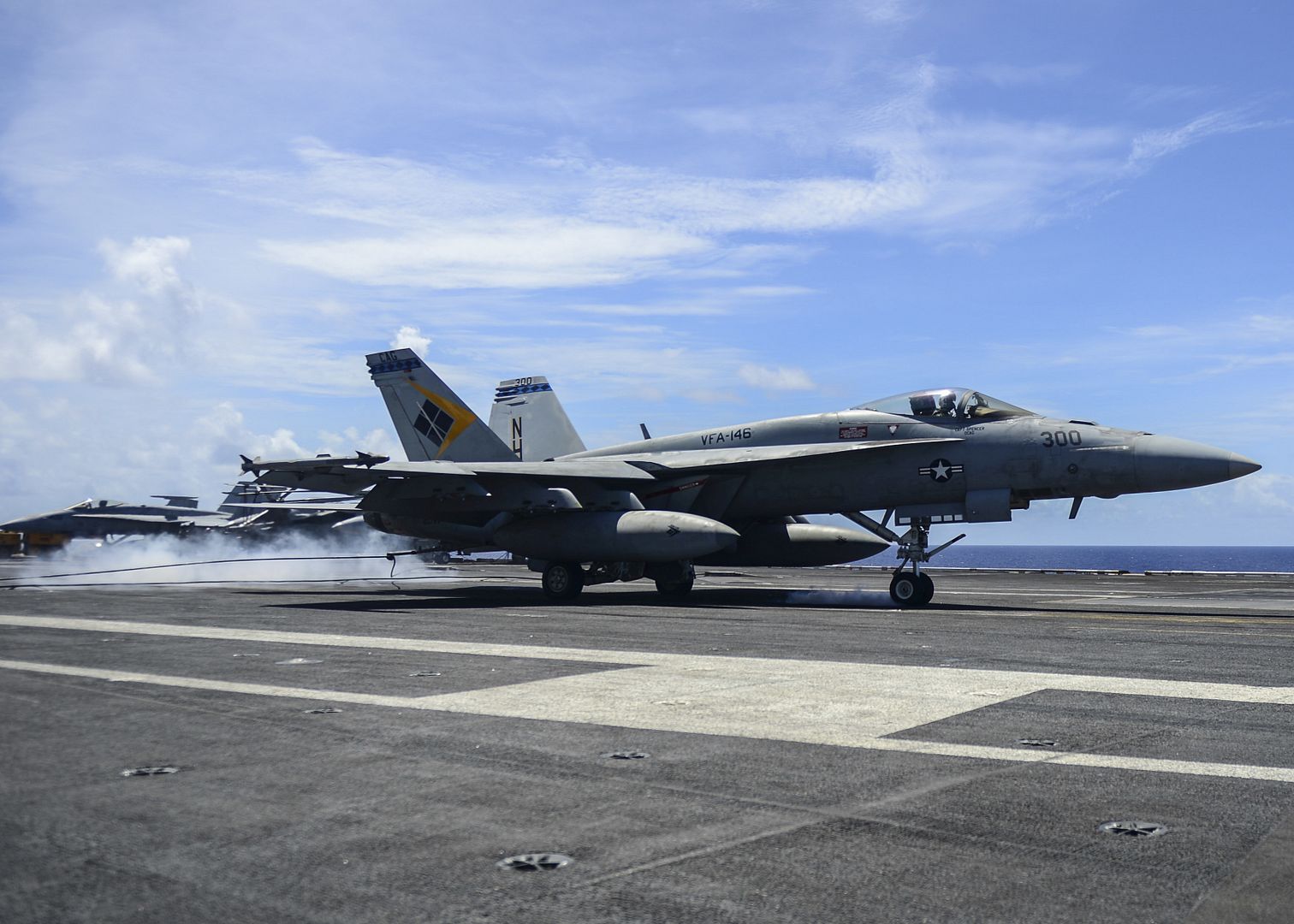
PACIFIC OCEAN (July 3, 2017) A C-2A Greyhound assigned the "Providers" of Fleet Logistics Support Squadron (VRC) 30 lands on the flight deck of the aircraft carrier USS Ronald Reagan (CVN 76). The Greyhound held the cremains of Julius H. Frey and wife, Jerry A. Frey. The cremains are scheduled for a burial-at-sea aboard Reagan July 15. Julius was a World War II veteran who fought in the Battle of Coral Sea on the aircraft carrier USS Lexington (CV 2). Ronald Reagan is the flagship of Carrier Strike Group 5, which is on patrol in the U.S. 7th Fleet area of operations in support of security and stability in the Indo-Asia-Pacific region. (U.S. Navy photo by Mass Communication Specialist 2nd Class Kenneth Abbate/Released)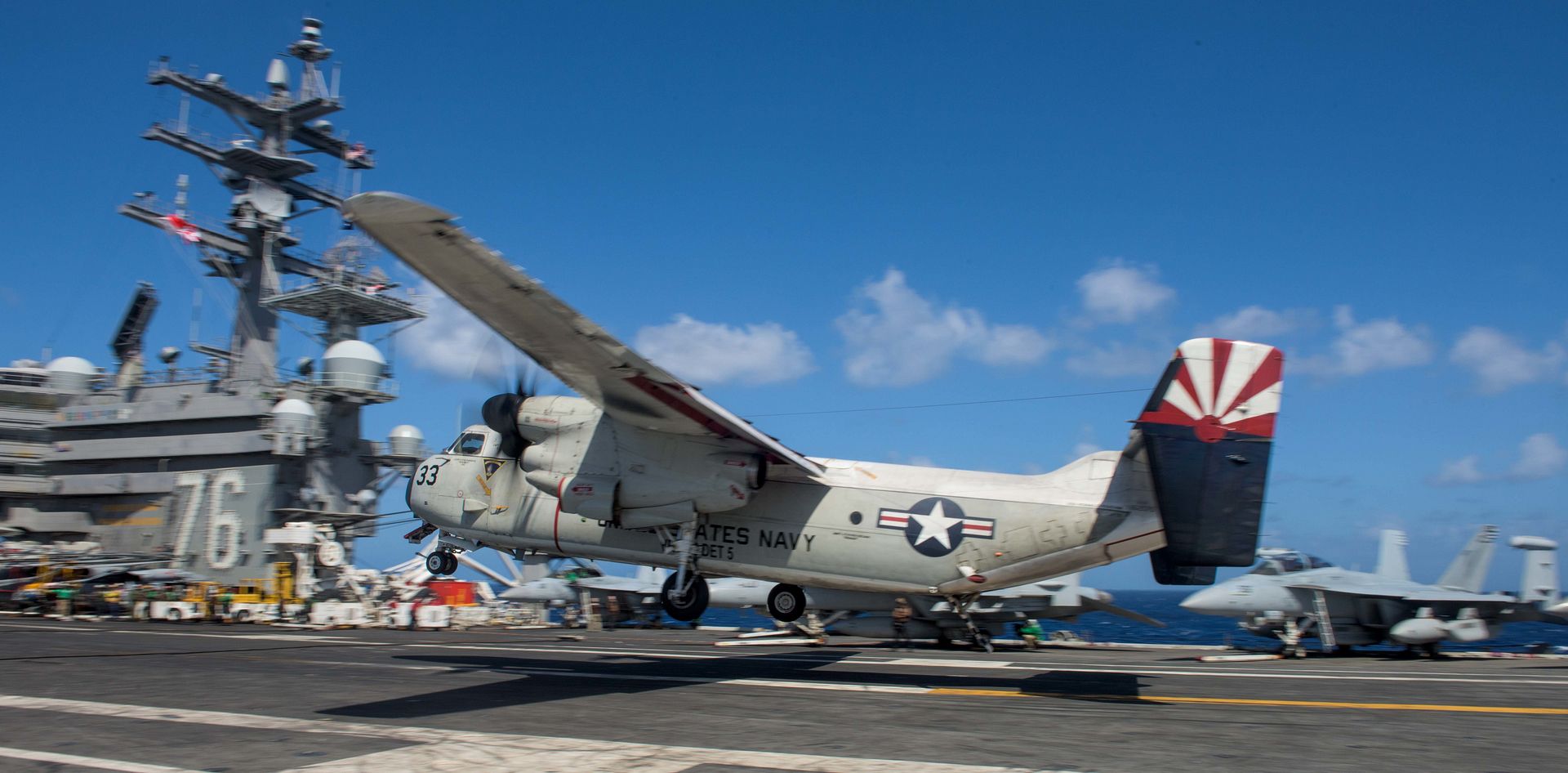
PATUXENT RIVER, Md., July 5, 2017 /PRNewswire/ -- Lockheed Martin (NYSE:LMT) today announced the CH-53K King Stallion program has successfully completed its first extended "cross country" flight from Sikorsky's West Palm Beach, Florida, facility to Naval Air Station Patuxent River, Maryland. This is the first of several such flights that will occur during 2017 and 2018 as the CH-53K flight test program transitions to the flight test facilities at Patuxent River (PAX).
The CH-53K helicopter flew on June 30 from Sikorsky's Development Flight Center in West Palm Beach to PAX, a distance of approximately 810 miles. Total flight time was six hours, with two en route fuel stops at Naval Air Station Mayport, Florida, and Marine Corps Air Station New River, North Carolina. View the video.
"This first movement of CH-53K flight testing to our customer's facility denotes that the aircraft have achieved sufficient maturity to begin transitioning the focus of the test program from envelope expansion to system qualification testing," said Dr. Michael Torok, Sikorsky Vice President, CH-53K Programs. "This has been the plan from the beginning and is another important step toward getting these fantastic aircraft into the hands of the U.S. Marine Corps."
The four CH-53K Engineering Development Model (EDM) aircraft have already completed more than 450 hours of flight testing at Sikorsky's Development Flight Center in West Palm Beach, and continue to drive to the edges of the operational envelope with both internal and external loads. The flight test program will continue to operate as it has from the beginning under an Integrated Test Team (ITT) that is comprised of Sikorsky, U.S. Navy Naval Air Systems Command (NAVAIR), and U.S. Marine Corps (USMC) personnel. Testing will continue in both locations, West Palm Beach and Patuxent River throughout the transition period.
"Bringing the CH-53K flight test program to PAX is an exciting milestone; many of the employees dedicated to its advancement now have the opportunity to work right down the street from it," said Col. Hank Vanderborght, U.S. Marine Corps program manager for the Naval Air Systems Command's Heavy Lift Helicopters program, PMA-261.
In April, the CH-53K King Stallion Program successfully passed its Defense Acquisition Board (DAB) and achieved a Milestone C decision that approves funding for low rate initial production.
The CH-53K provides unmatched heavy lift capability with three times the lift of the CH-53E that it replaces. With the increased payload capability and a 12-inch wider internal cabin compared to the predecessor CH-53E, the CH-53K's increased payload capability can take the form of a variety of relevant payloads ranging from multiple U.S. Air Force standard 463L pallets to an internally loaded High Mobility Multipurpose Wheeled Vehicle (HMMWV) or a European Fennek armored personnel carrier. In addition, the CH-53K can carry up to three independent external loads at once providing incredible mission flexibility and system efficiency.
The CH-53K offers enhanced safety features for the warfighter. Safety is enhanced with full authority fly-by-wire flight controls and mission management that reduces pilot workload and enables the crew to focus on mission execution because the CH-53K all but "flies itself." Features include advanced stability augmentation, flight control modes that include attitude command-velocity hold, automated approach to a stabilized hover, position hold and precision tasks in degraded visual environments, and tactile cueing that all permit the pilot to confidently focus on the mission at hand.
Further, the CH-53K has improved reliability and maintainability that exceeds 89 percent mission reliability with a smaller shipboard logistics footprint than the legacy CH-53E.
The U.S. Department of Defense's Program of Record remains at 200 CH-53K aircraft. The first six of the 200 Program of Record aircraft are under contract and scheduled to start delivery next year to the Marine Corps. Two additional aircraft, the first low rate initial production aircraft, are under long lead procurement for parts and materials, with deliveries scheduled to start in 2020. The Marine Corps intends to stand up eight active duty squadrons, one training squadron, and one reserve squadron to support operational requirements.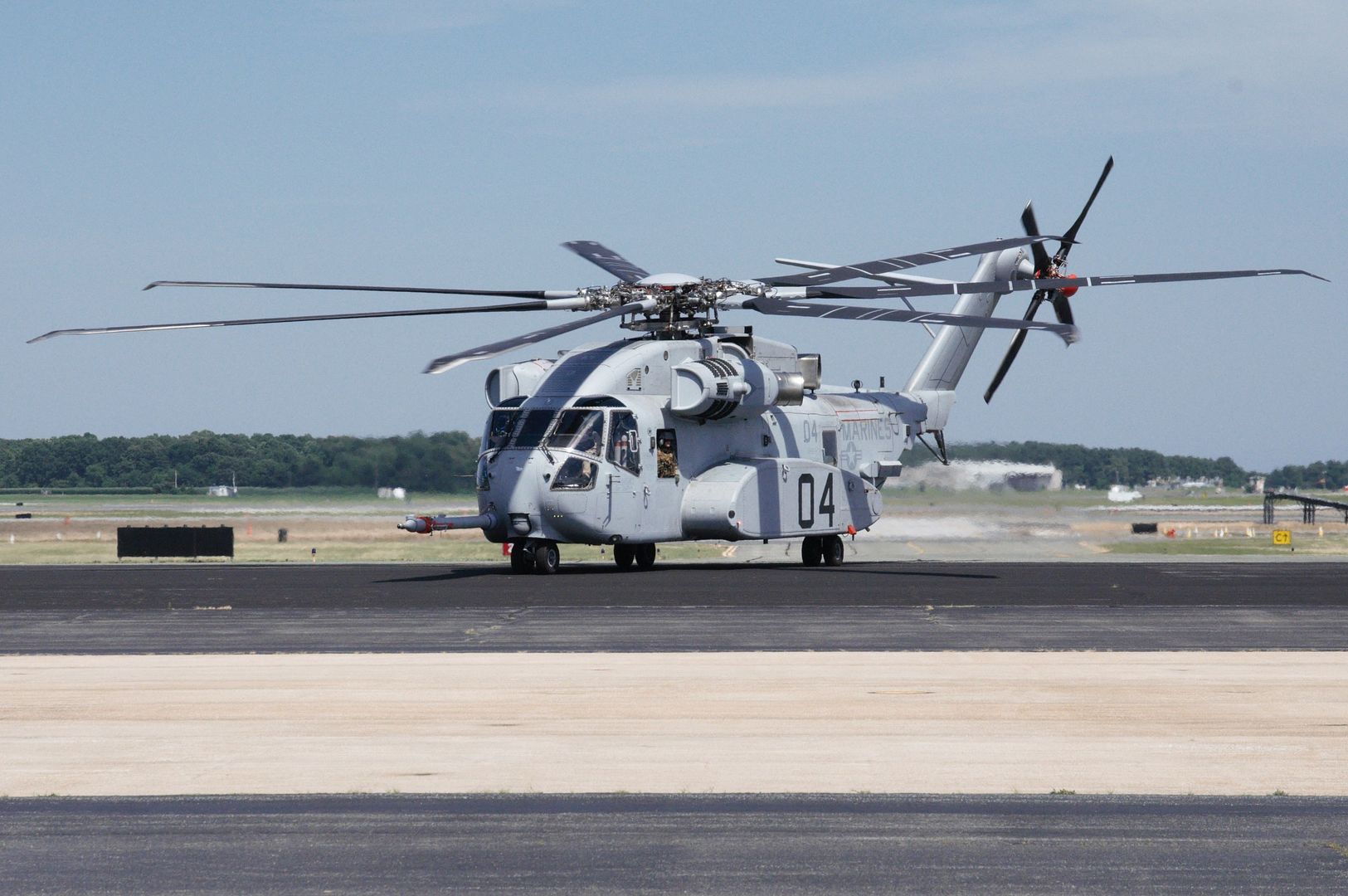
China Aviation Supplies Holding Company (CAS) has signed with Airbus a General Terms Agreement (GTA) for the purchase of a total of 140 aircraft. The agreement comprises of 100 A320 Family aircraft and 40 A350 XWB Family aircraft, reflecting the strong demand of Chinese airlines in all market segments including domestic, low cost, regional and international long haul.
The GTA was signed in Berlin by Tom Enders, Airbus CEO, and Sun Bo, Executive Vice President of CAS, in the presence of visiting Chinese President Xi Jinping and German Chancellor Angela Merkel.
?This is a great endorsement for our leading products in both single aisle and wide body segments?, said Tom Enders. ?China is today one of the world?s most important markets for aviation, and we are honoured to support the development and rapid growth of China?s civil aviation with our competitive product portfolio.?
The world?s passenger aircraft fleet above 100 seats is set to more than double in the next 20 years to over 40,000 planes as traffic is forecast to grow at 4.4 percent per year. Emerging markets such as China continue to be an engine for growth, with domestic traffic to become the world?s largest market, according to Airbus? latest Global Market Forecast 2017-2036.
By the end of May 2017, the in-service Airbus fleet with Chinese operators totaled some 1,440 aircraft, of which nearly 1,230 are A320 Family planes. The A350 XWB has received valuable endorsements from several Chinese customers. The unrivalled operational performance and cabin comfort of the A350 XWB will give Chinese airlines a competitive edge to attract more passengers on international routes.
The A320 Family is the world?s best-selling single aisle product line. To date, the Family has won over 13,000 orders and more than 7,600 aircraft have been delivered to some 400 customers and operators worldwide. With one aircraft in four sizes (A318, A319, A320 and A321), the A320 Family seats from 100 to 240 passengers. The Family features the widest cabin in the single aisle market with 18? wide seats in Economy as standard.
The A350 features the latest aerodynamic design and materials, including its carbon-fibre fuselage and wings. It is powered by new fuel-efficient Rolls-Royce Trent XWB engines. Together, these advanced technological features translate into unrivalled levels of operational efficiency, with a 25 per cent reduction in fuel burn and emissions in addition to significantly lower maintenance costs.
-
 Main AdminF-16 Fighting Falcon pilots with the 177th Fighter Wing, New Jersey Air National Guard, perform touch-and-go?s July 5, 2017, in Atlantic City, N.J. F-16 pilots practice scramble regularly to maintain air combat readiness and proficiency. (U.S. Air National Guard photo's by Airman 1st Class Cristina J. Allen/Released)
Main AdminF-16 Fighting Falcon pilots with the 177th Fighter Wing, New Jersey Air National Guard, perform touch-and-go?s July 5, 2017, in Atlantic City, N.J. F-16 pilots practice scramble regularly to maintain air combat readiness and proficiency. (U.S. Air National Guard photo's by Airman 1st Class Cristina J. Allen/Released)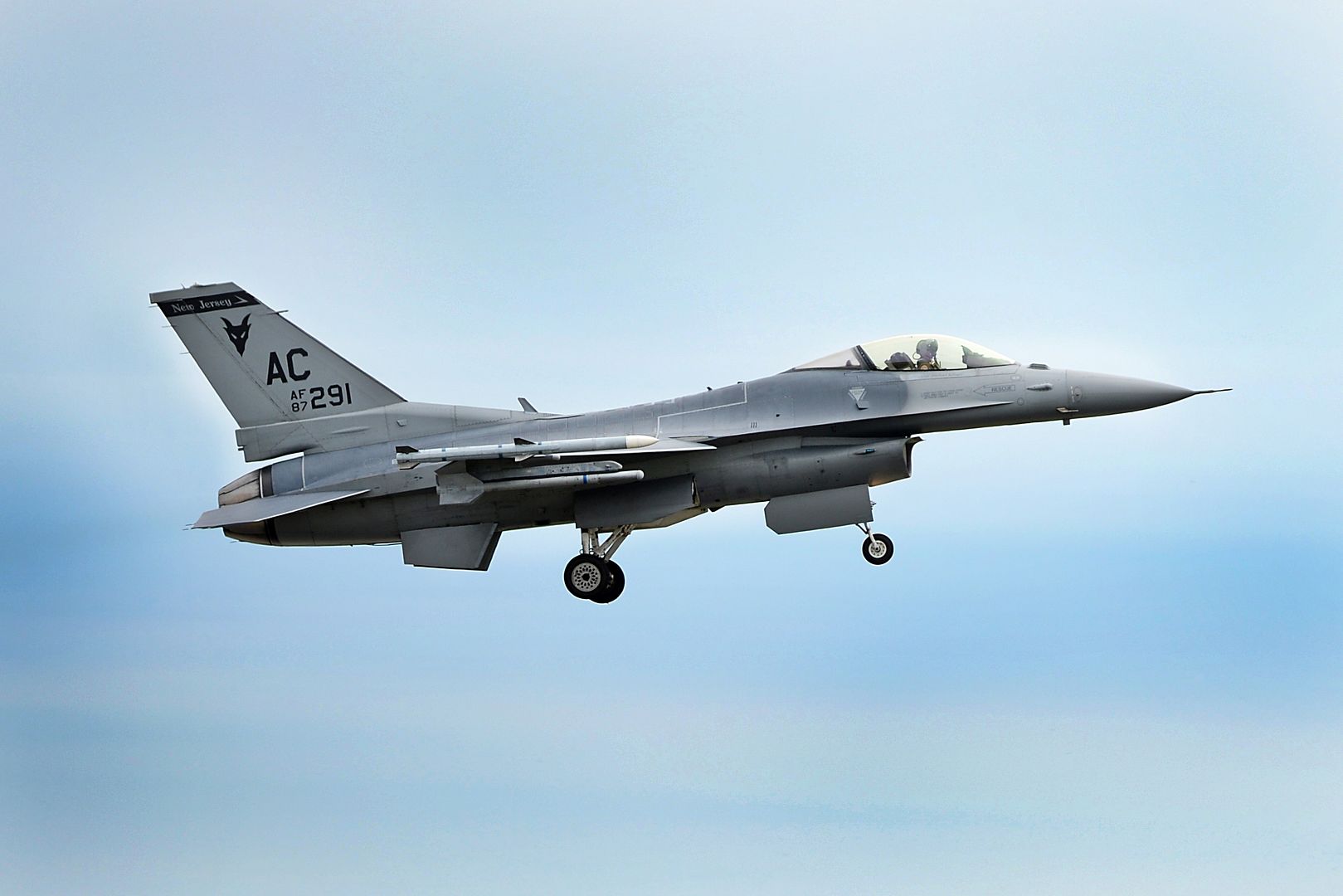

An F-35A Lightning II departs for Exercise Red Flag 17-3 July 6, 2017, at Eglin Air Force Base, Fla. The 33rd Fighter Wing sent 7 F-35As and more than 120 personnel to Nellis Air Force Base, Nev., for Exercise Red Flag 17-3. Red Flag is the Air Force's premier international air-to-air combat training exercise that provides a realistic environment to train a variety of domains: air, ground, space and cyberspace. (U.S. Air Force photo by Staff Sgt. Peter Thompson/Released)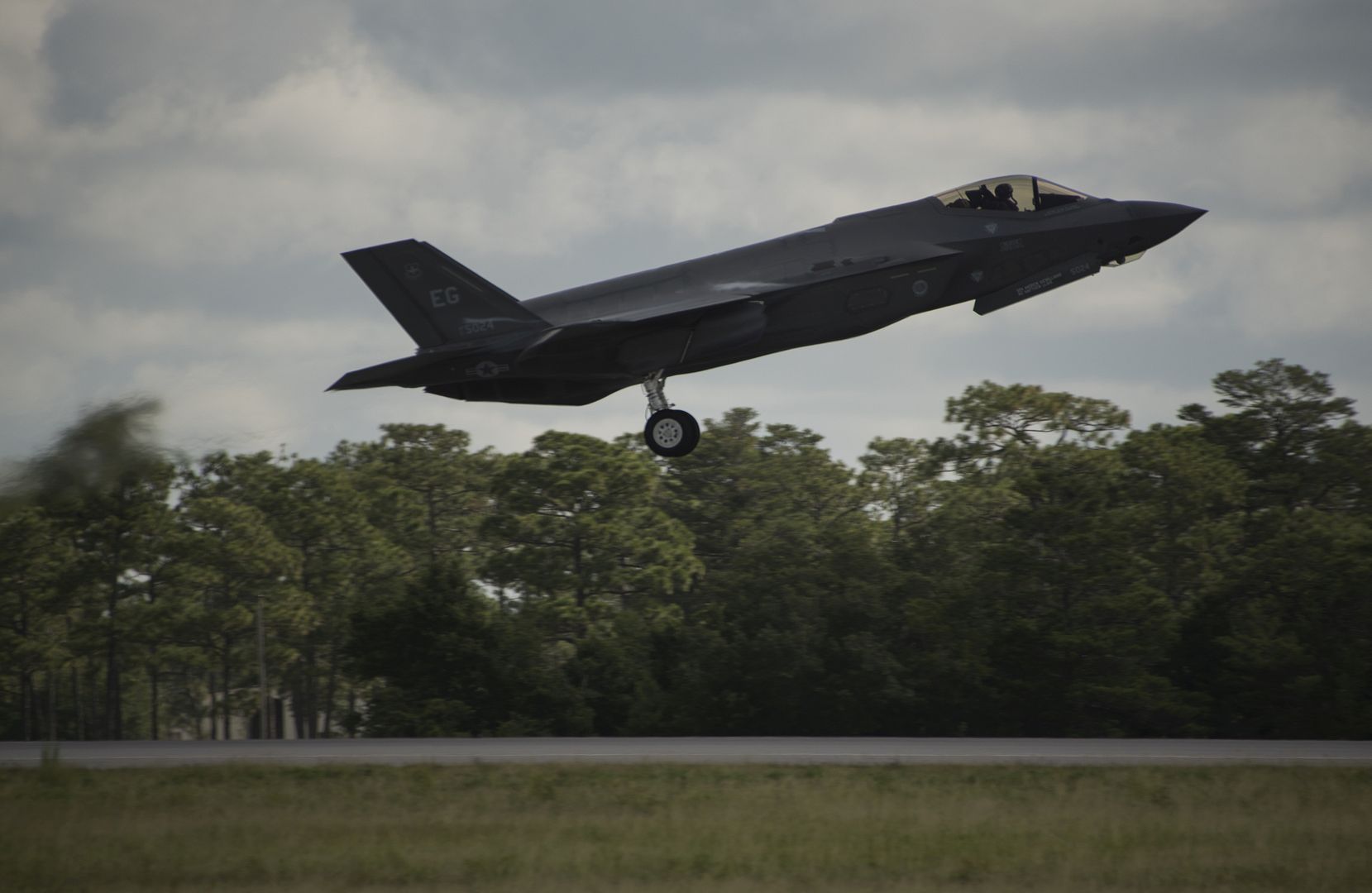
A U.S. Air Force B-1B Lancer assigned to the 9th Expeditionary Bomb Squadron, deployed from Dyess Air Force Base, Texas, prepares for take off from Andersen Air Force Base, Guam, to fly a bilateral mission with two Japan Air Self-Defense Force F-15?s over the East China Sea, July 6, 2017. The flight with Japan is a demonstration of the strength of the bilateral alliances between the United States and Japan, and the broadening bilateral cooperation and capability to defend against common regional threats. (U.S. Air Force photo's/Tech. Sgt. Richard P. Ebensberger)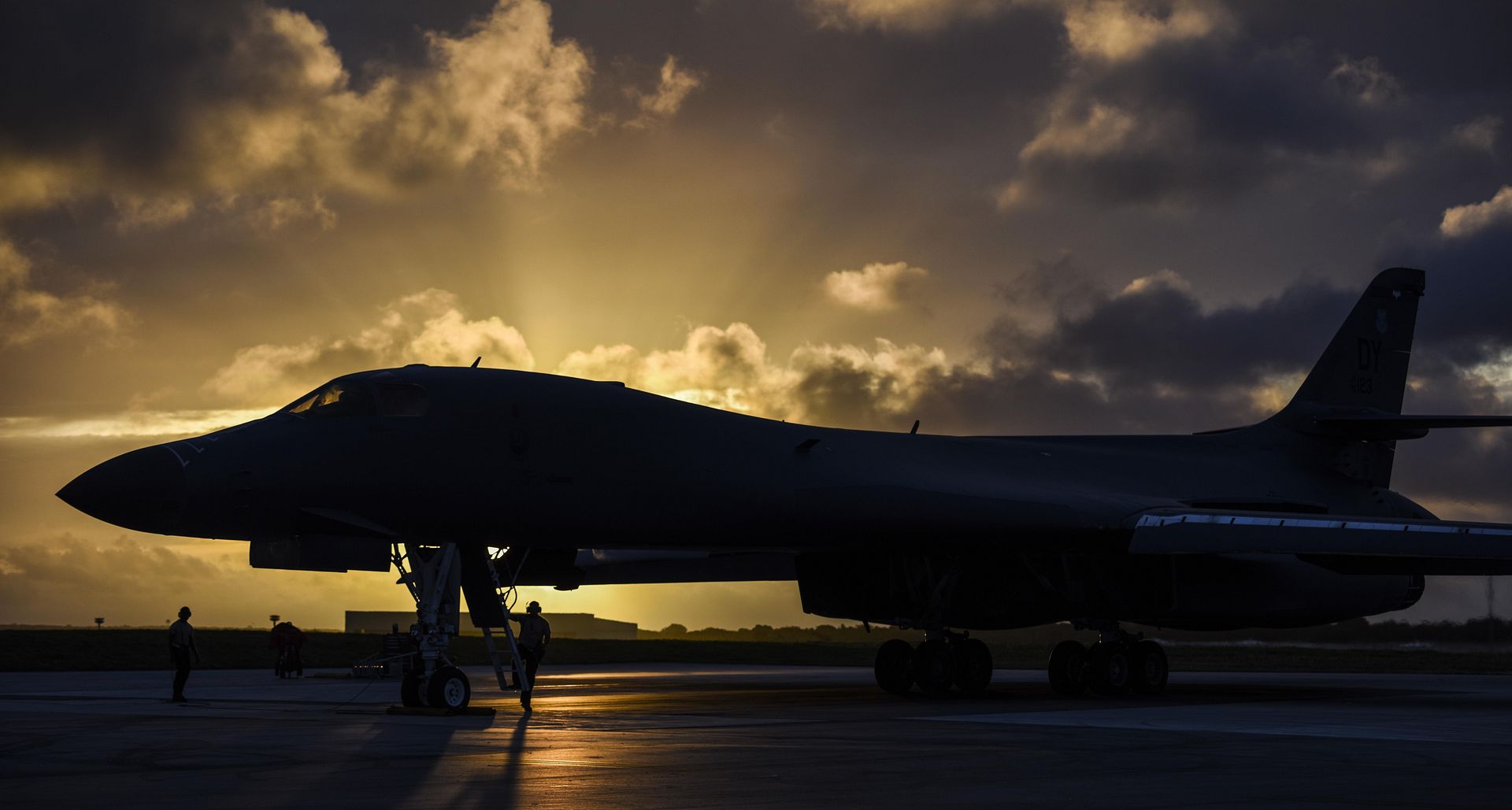

A U.S Marine Corps MV-22 Osprey assigned to Marine Medium Tiltrotor Squadron (VMM) 263, is positioned on the flight line after conducting flight operations at Marine Corps Air Station New River, July 5, 2017. VMM-263 conducted flight certification aboard USNS Lewis B. Puller prior to deployment. (U.S. Marine Corps photo by Cpl. Austin A. Lewis)
SURIGAO STRAIT (July 3, 2017) A Royal New Zealand Navy SH-2G Supersprite helicopter prepares to land on the flight deck of the aircraft carrier USS Nimitz (CVN 68) as U.S. Navy Sailors watch, July 3, 2017, in the Surigao Strait. Sailors from HMNZS Te Kaha (F77) and Carrier Strike Group (CSG) 11 are conducting a series of bilateral training operations designed to increase interoperability and readiness. (U.S. Navy photo by Mass Communication Specialist 3rd Class Cole Schroeder)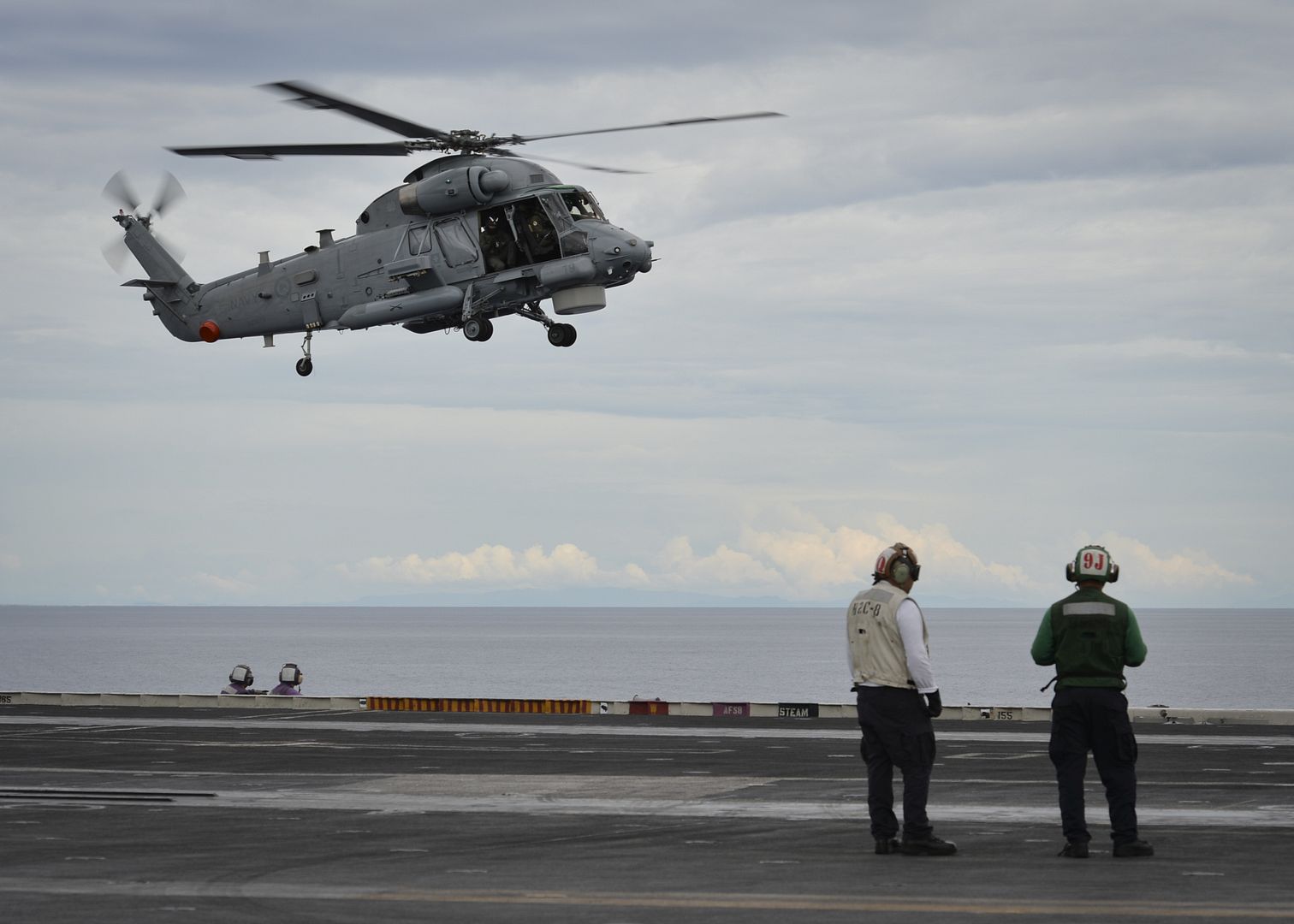
SEATTLE, July 6, 2017 /PRNewswire/ -- As part of the continuing effort to accelerate aerospace innovation, Boeing [NYSE: BA] and FedEx Express, a subsidiary of FedEx Corp. (NYSE: FDX) and the world's largest express transportation company, will work together to fly the next ecoDemonstrator. Starting in 2018, a new Boeing 777 Freighter made for FedEx Express will test emerging technologies, such as propulsion advancements and flight deck innovations.
The ecoDemonstrator program, now in its fifth iteration, serves as a series of flying testbeds designed to improve the environmental performance and safety of future airplanes.
"The ecoDemonstrator program is focused on harvesting exciting new technologies that will benefit our airline customers, the flying public and the environment," said Mike Sinnett, vice president of Boeing Commercial Airplanes Product Development.
The collaboration on the newest ecoDemonstrator project is the latest in a 38-year relationship between Boeing and FedEx.
"FedEx is committed to developing and implementing innovative solutions that connect the world responsibly and resourcefully," said David Cunningham, president & CEO, FedEx Express. "We're proud to work with Boeing and use our 777 Freighter to play a key role in bringing future benefits to the entire aviation industry."
This round of ecoDemonstrator testing includes installing a compact thrust reverser developed by Boeing designed to save fuel, flight deck improvements that can improve efficient operations in and out of busy airports, and flying prototype airplane parts using cutting-edge manufacturing techniques that reduce material waste.
Flight testing is scheduled to last approximately three months before the airplane returns to the FedEx fleet.
-
 Main AdminA UH-60 Black Hawk assigned to the 10th Combat Aviation Brigade, 10th Mountain Division, provides air medical evacuation during a training exercise at the Joint National Training Center in Cincu, July 8, 2017. Getica Saber 17 is a U.S-led fire coordination exercise and combined arms live fire exercise that incorporates six Allied and partner nations with more than 4,000 Soldiers. Getica Saber runs concurrent with Saber Guardian, a U.S. Army Europe-led, multinational exercise that spans across Bulgaria, Hungary and Romania with more than 25,000 service members from 22 Allied and partner nations. (U.S. Army photo by Sgt. Justin Geiger)
Main AdminA UH-60 Black Hawk assigned to the 10th Combat Aviation Brigade, 10th Mountain Division, provides air medical evacuation during a training exercise at the Joint National Training Center in Cincu, July 8, 2017. Getica Saber 17 is a U.S-led fire coordination exercise and combined arms live fire exercise that incorporates six Allied and partner nations with more than 4,000 Soldiers. Getica Saber runs concurrent with Saber Guardian, a U.S. Army Europe-led, multinational exercise that spans across Bulgaria, Hungary and Romania with more than 25,000 service members from 22 Allied and partner nations. (U.S. Army photo by Sgt. Justin Geiger)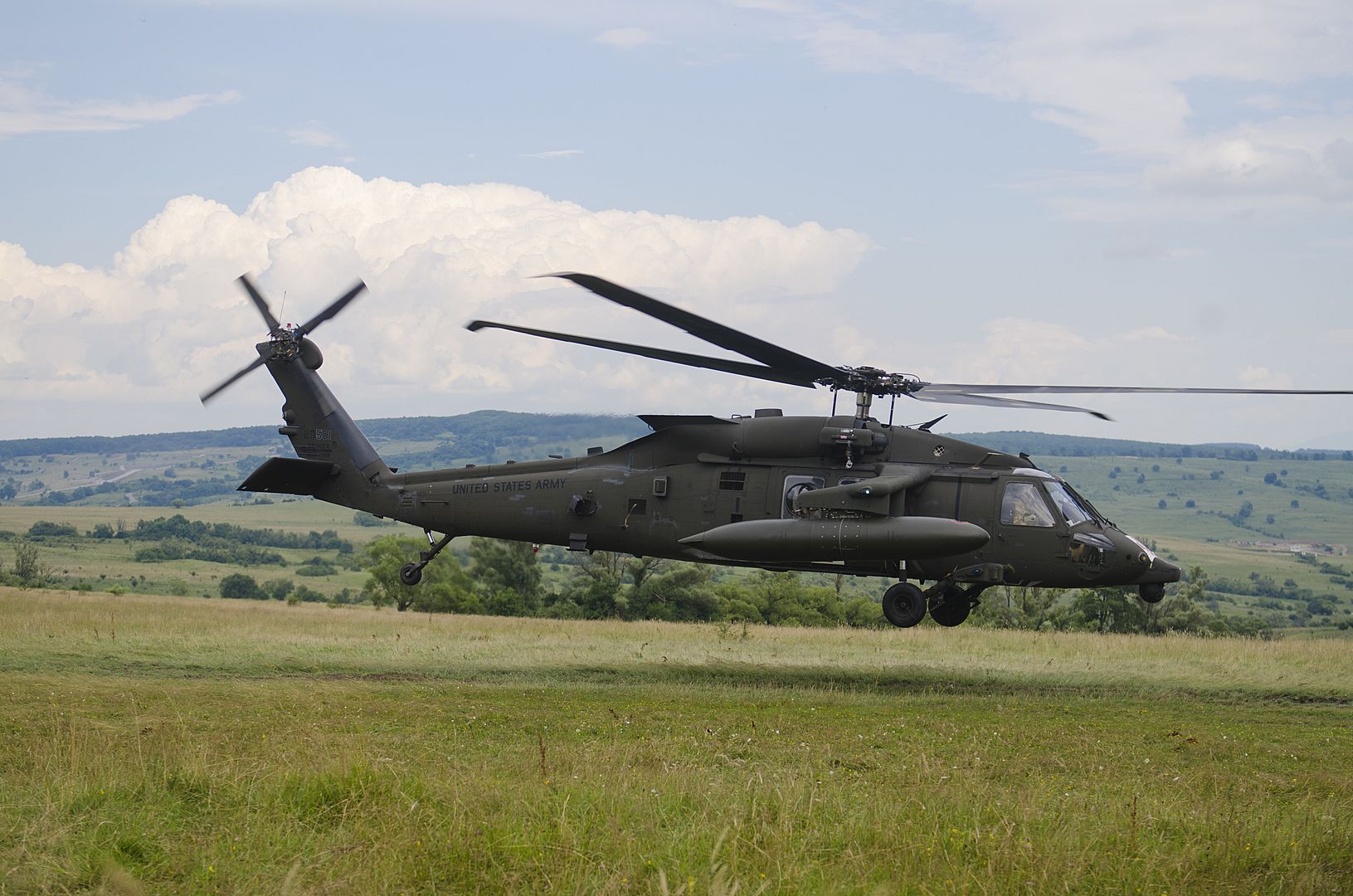
U.S. Air Force B-1B Lancer assigned to the 9th Expeditionary Bomb Squadron, deployed from Dyess Air Force Base, Texas, sit at Andersen Air Force Base, Guam before it conducts a sequenced bilateral mission with South Korean F-15 and Koku Jieitai (Japan Air Self-Defense Force) F-2 fighter jets, July 7. The mission is in response to a series of increasingly escalatory action by North Korea, including a launch of an intercontinental ballistic missile (ICBM) on July 3. (U.S. Air Force Photo's by Airman 1st Class Jacob Skovo)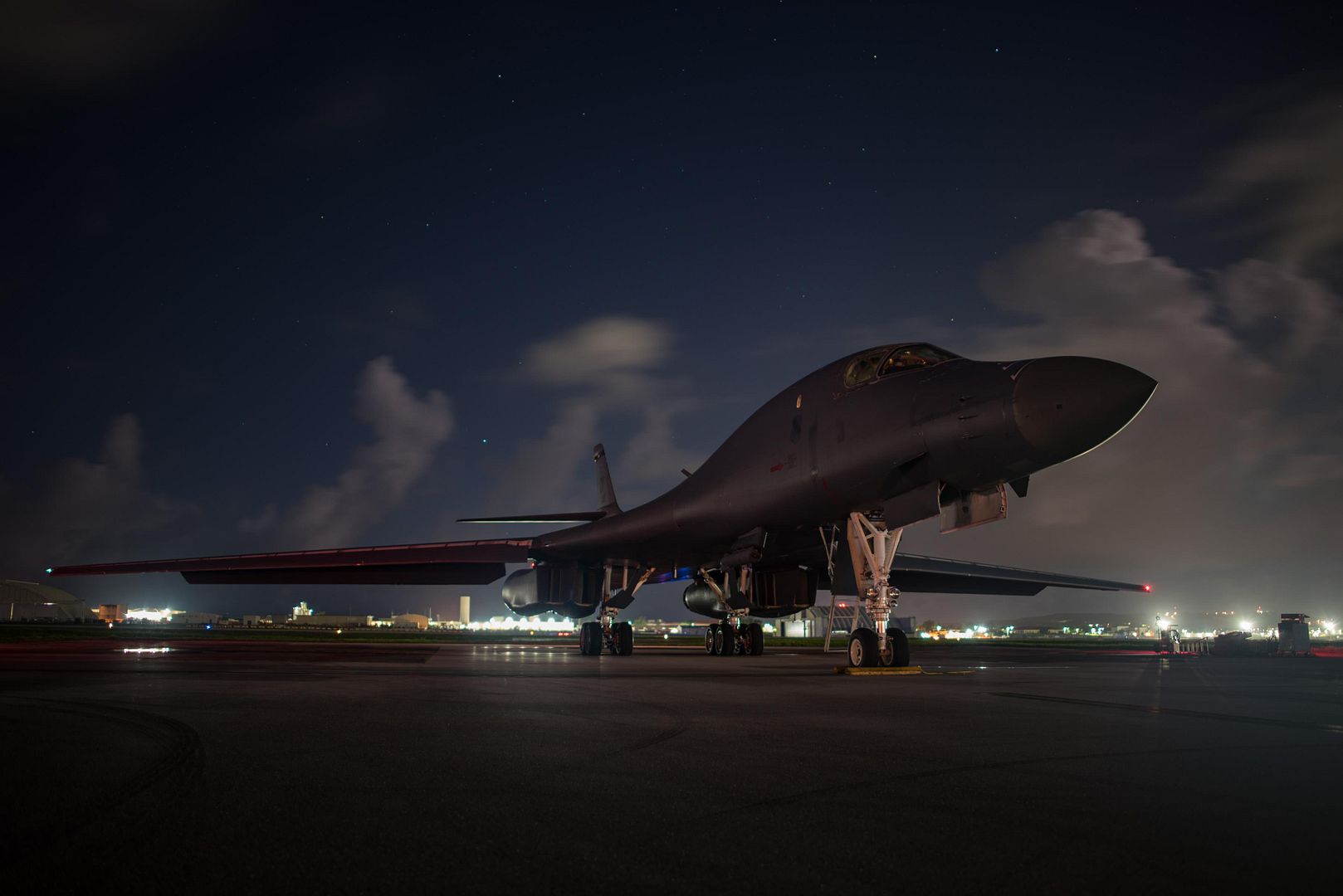
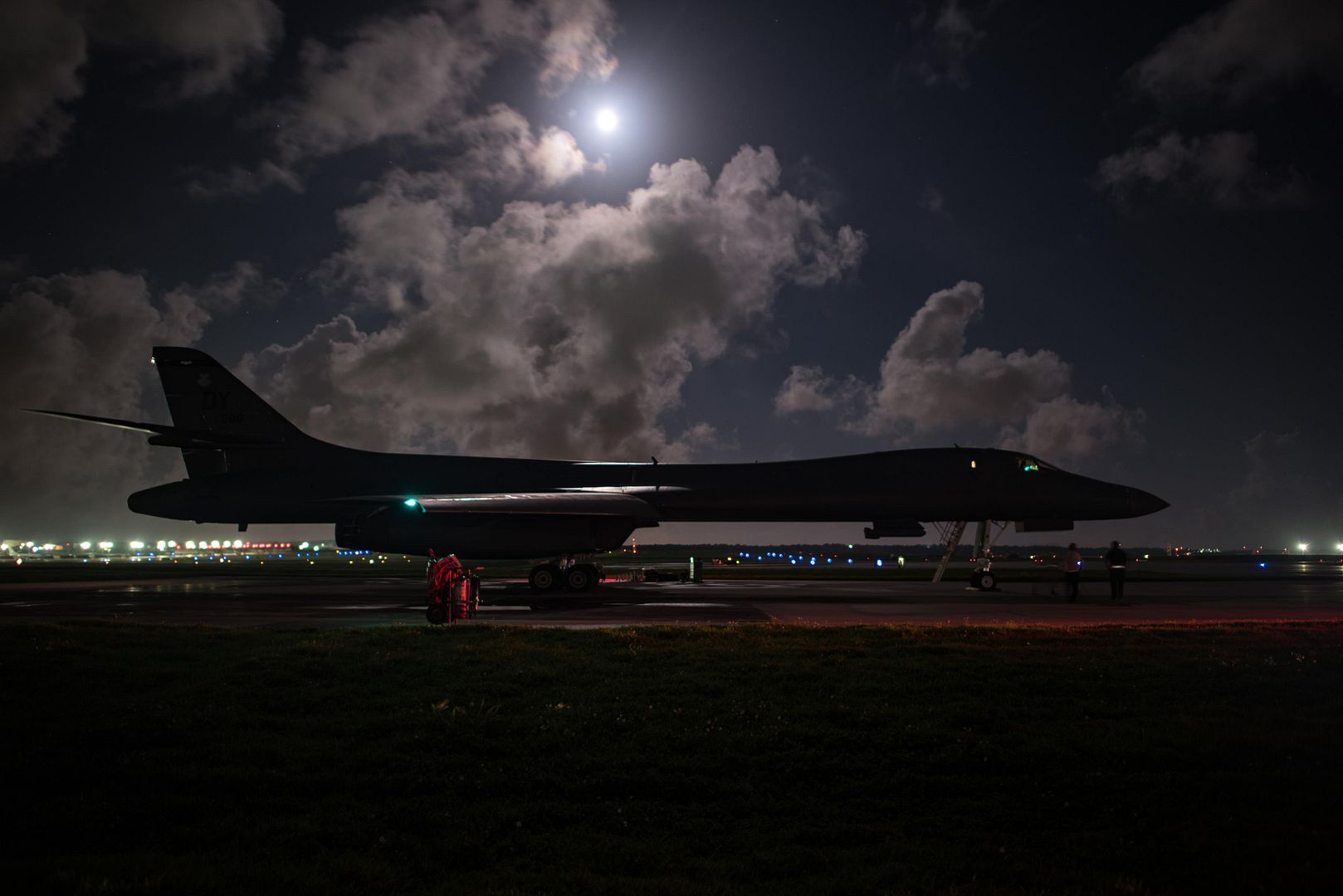
The A350-1000 test aircraft, MSN065, successfully completed the hot weather tests at the Al Ain International airport.
The tests which took place from 4 to 7 July, involved the aircraft undergo extreme weather conditions at temperatures above 40 degrees Celsius. The objective of the tests is to check systems behaviour with a focus on the cabin, including cooling performance on ground. The aircraft successfully cleared all the set parameters demonstrating its maturity and readiness to operate in scorching weather conditions.
Airbus has been using the Al Ain International Airport as its base for hot weather testing for a number of years now.
The A350-1000 is the new member of the A350 XWB family, Airbus? all-new mid-size long-range aircraft family, together with the A330neo, offering unprecedented levels of operating efficiency, low noise and true long-range capability. The A350-1000 features a modified wing trailing-edge, new six-wheel main landing gears and more powerful Rolls-Royce Trent XWB-97 engines.
The A350-1000 embodies all of the fuel efficiency and ?Airspace? cabin comfort of the original A350-900 ? but with extra size perfectly tailored for customers on some of their busiest long-haul routes.
Scheduled to enter into service in the fourth quarter of 2017, the aircraft currently has a total of 211 confirmed orders from 12 global customers.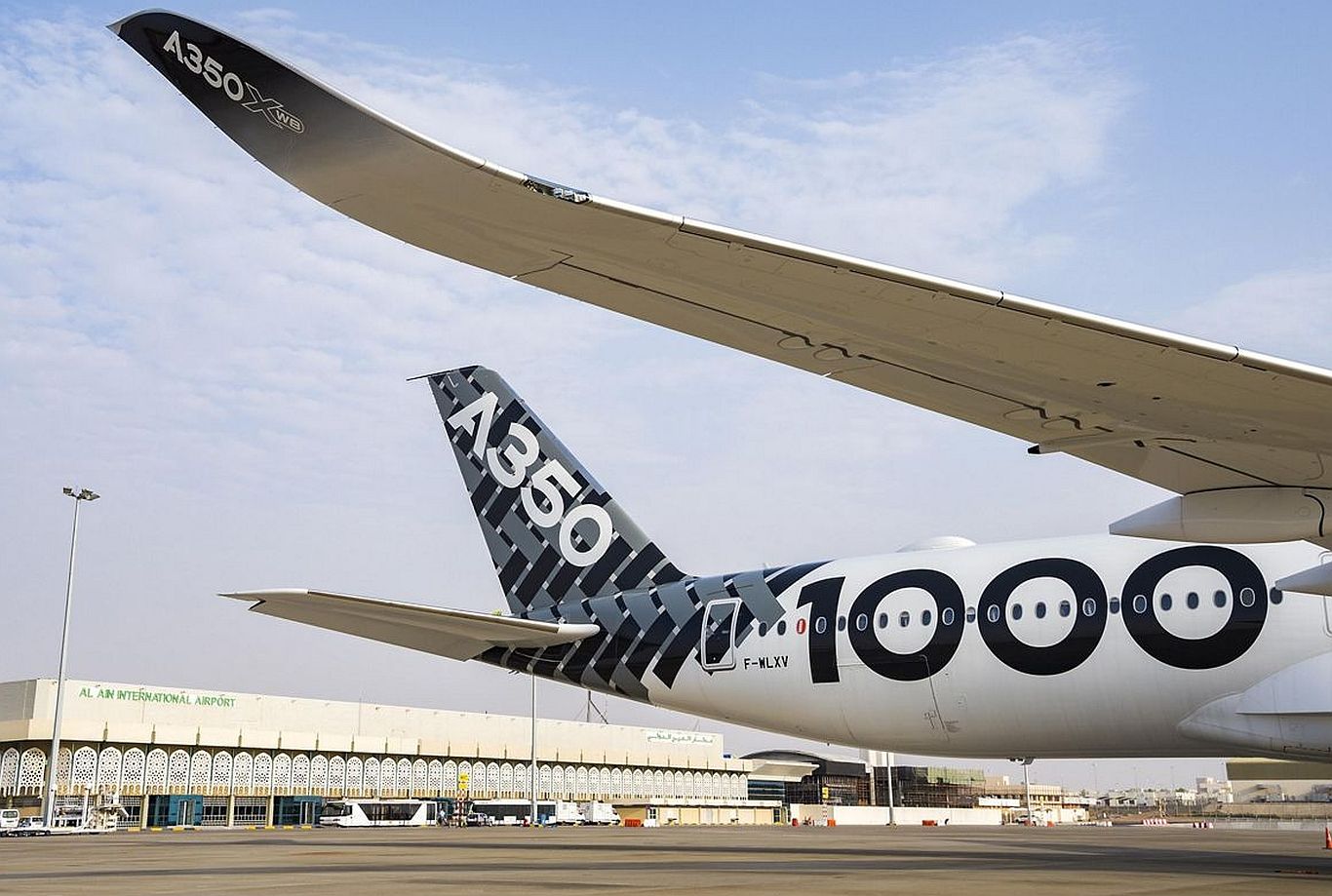
French air force; issued July 6, 2017
Taking off from Cognac air base, the MQ-9 Reaper unmanned aircraft n? 612 made its first flight over national territory on Tuesday July 4, 2017. During 5 hours and 10 minutes, one of Drone Squadron 1/33 "Belfort?s" unmanned aircraft flew around the airspace north of the base, where it has been stationed for just a few weeks.
The main objective was to test the operation of the aircraft and of its two operator cabins (calibration of emergency parameters, verification of satellite links, etc.) and to extend LRE (Launch and Recovery Element) qualifications to land the Reaper.
These objectives were attained, and the "Belfort" squadron will now be able to operate the Reaper over metropolitan France on a daily basis, and thus giving the Air Force the increased autonomy of being able to train its own crews. By 2019, the Drone Squadron 1/33 will have twelve aircraft, operated by 30 crews.
Including Reaper No. 612, six aircraft are now operational at 1/33 "Belfort". The other five aircraft in the fleet are positioned at the expeditionary air base in Niamey, Niger. They provide intelligence and support capabilities to Operation Barkhane, but also to the Special Forces. Since their involvement in the Sub-Saharan Band began in January 2014, they have already completed over 15,000 flying hours.
The next few days will be busy for Reaper crews stationed in Cognac. Numerous missions are already noted in their shelves, starting with their participation in the particular air security system (DPSA) of the 14 July military parade in Paris.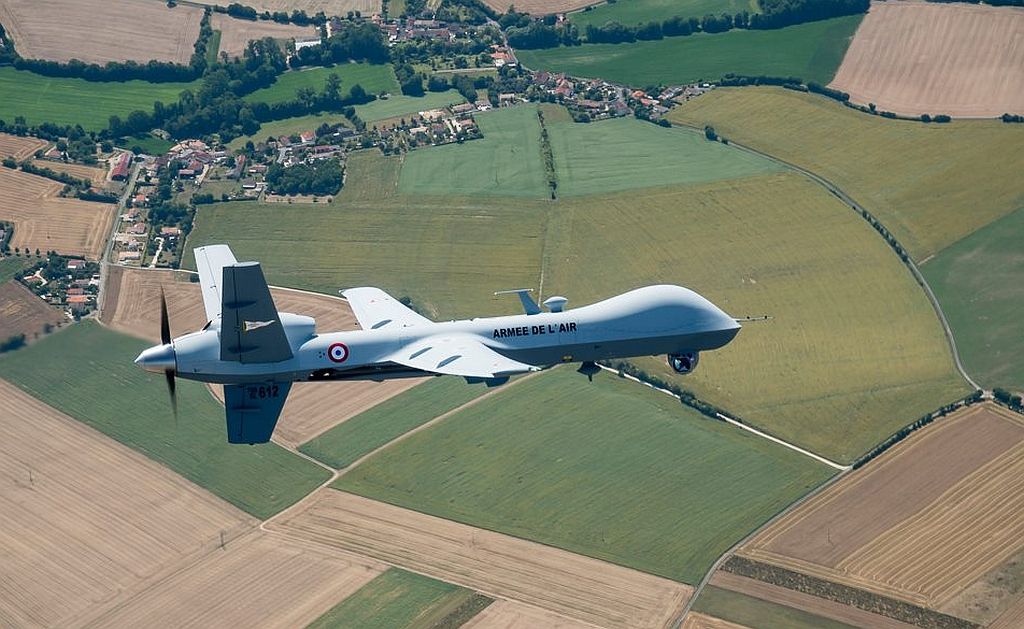
-
 Main AdminMaj. Alex Turner, Thunderbird #5, and Maj. Whit Collins, Thunderbird #6, fly over England July 10, 2017. The U.S. Air Force Thunderbirds flew over several bases and landmarks in preparation for the 2017 Royal International Air Tattoo being held at Royal Air Force Fairford, England. The U.S. Air Force is celebrating its 70th Anniversary. (U.S. Air Force Photo by Tech. Sgt. Christopher Boitz)
Main AdminMaj. Alex Turner, Thunderbird #5, and Maj. Whit Collins, Thunderbird #6, fly over England July 10, 2017. The U.S. Air Force Thunderbirds flew over several bases and landmarks in preparation for the 2017 Royal International Air Tattoo being held at Royal Air Force Fairford, England. The U.S. Air Force is celebrating its 70th Anniversary. (U.S. Air Force Photo by Tech. Sgt. Christopher Boitz)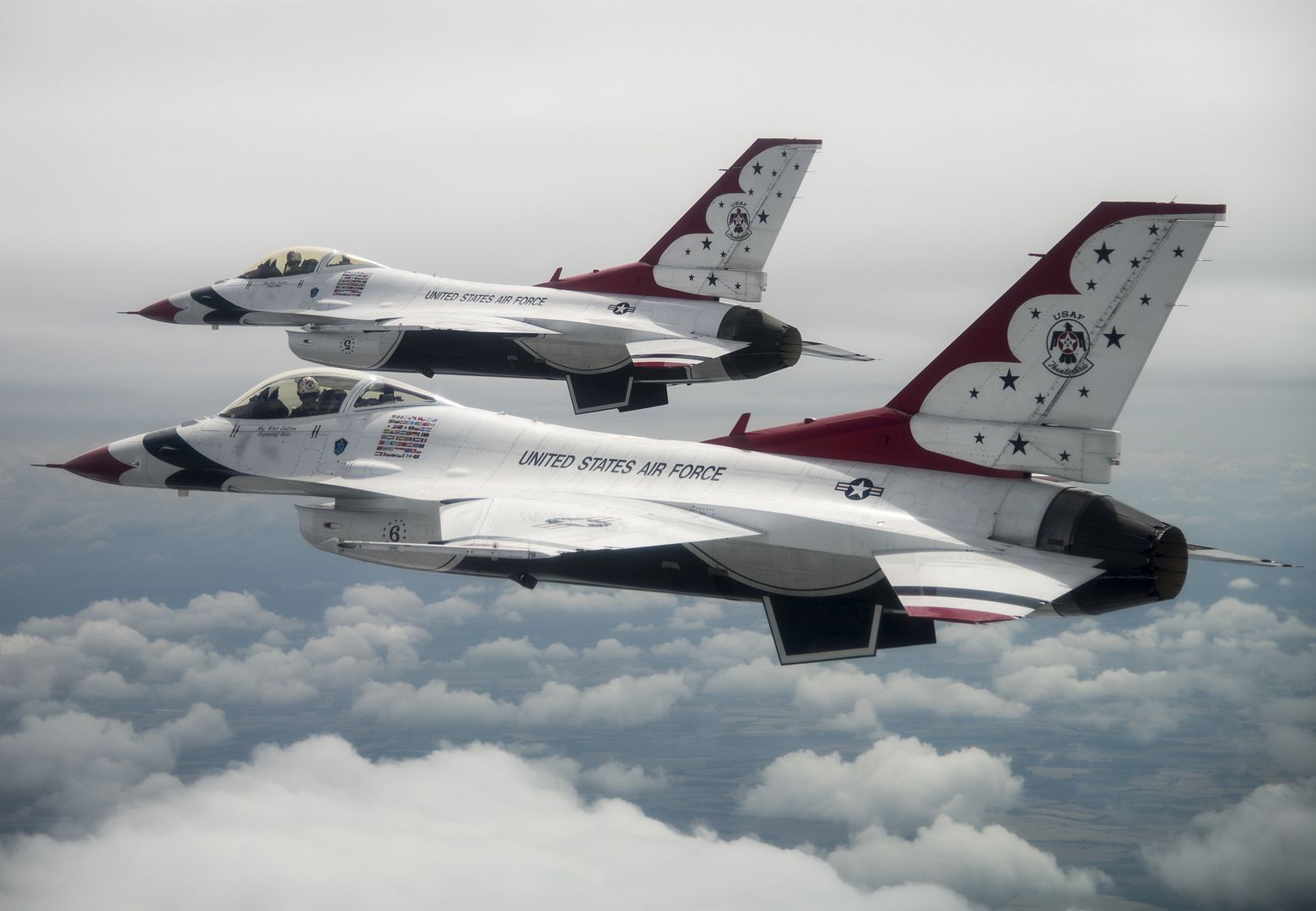
The U.S. Air Force Thunderbirds fly over Loch Ness, Scotland July 10, 2017. The U.S. Air Force Thunderbirds flew over several bases and landmarks in preparation for the 2017 Royal International Air Tattoo being held at RAF Fairford, England. The U.S. Air Force is celebrating its 70th Anniversary. (U.S. Air Force Photo by Tech. Sgt. Christopher Boitz)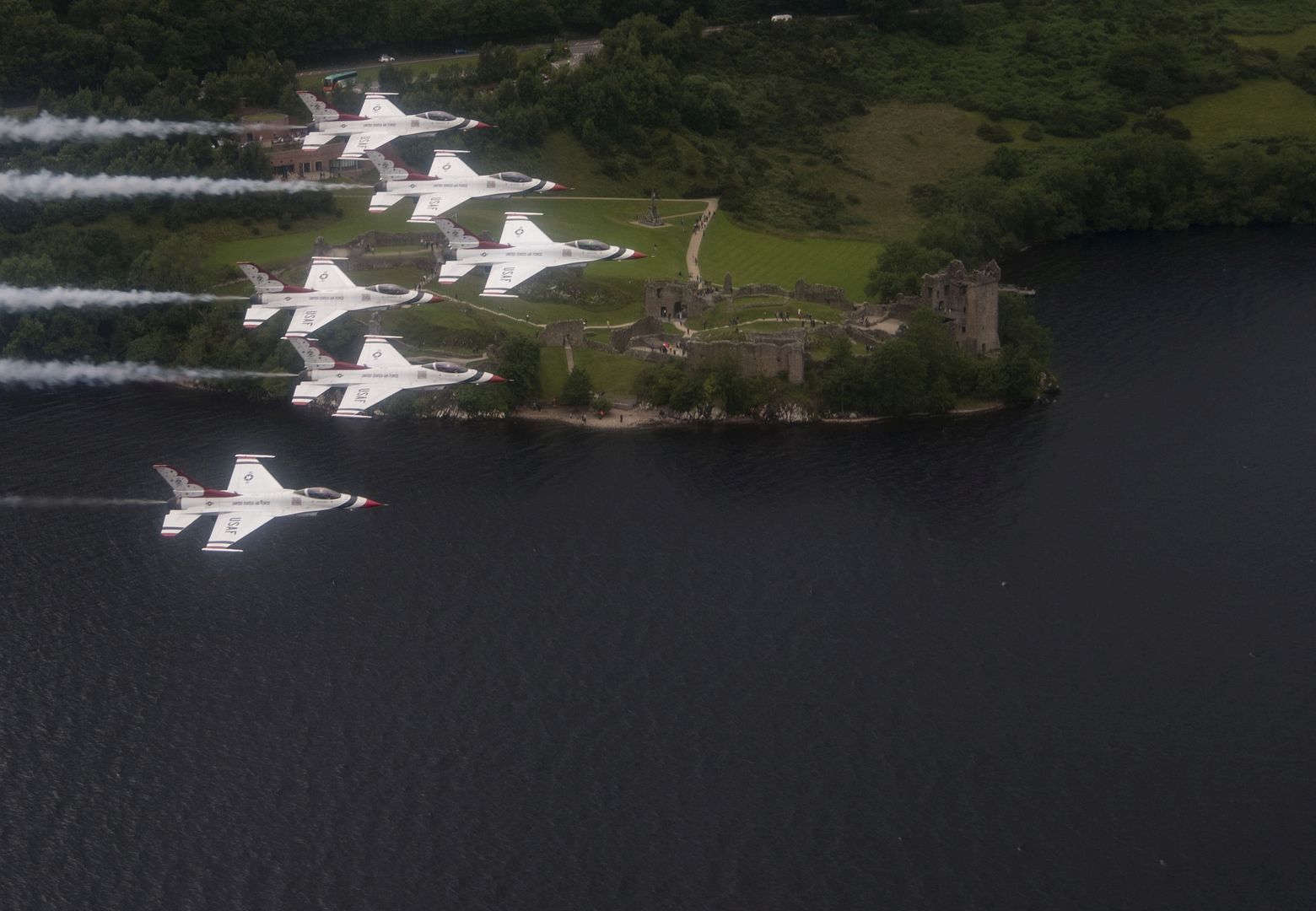
The U.S. Air Force Thunderbirds fly over Royal Air Force Duxford, England, July 10, 2017. The U.S. Air Force Thunderbirds flew over several bases and landmarks in preparation for the 2017 Royal International Air Tattoo being held at Royal Air Force Fairford, England. The U.S. Air Force is celebrating its 70th Anniversary. (U.S. Air Force Photo by Tech. Sgt. Christopher Boitz)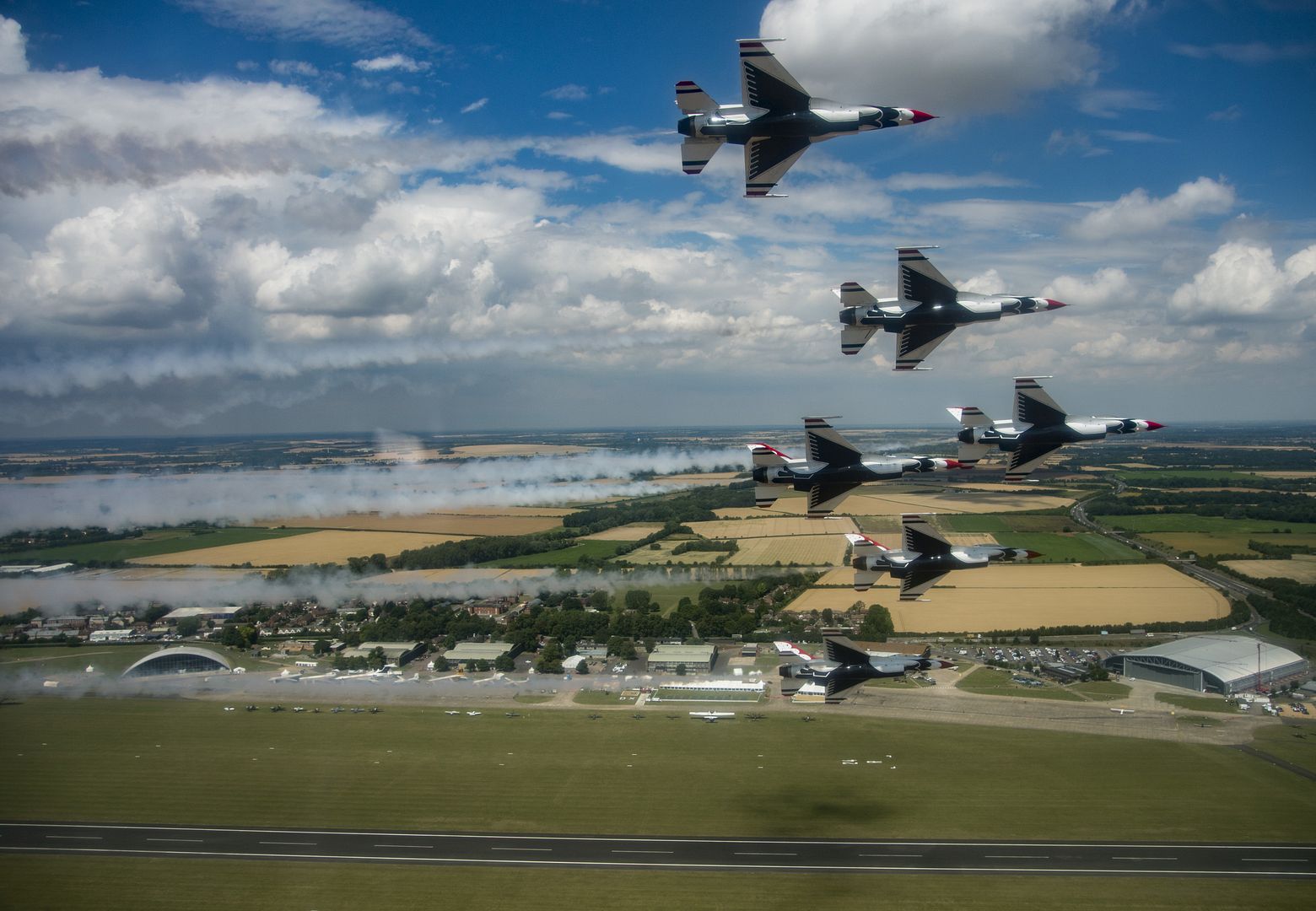
A U.S. Air Force A-10 Thunderbolt II departs after receiving fuel from a 340th Expeditionary Air Refueling Squadron KC-135 Stratotanker during a flight in support of Operation Inherent Resolve, July 6, 2017. The A-10 employs a wide variety of conventional munitions in support of OIR and the destruction of ISIS. (U.S. Air Force photo's by Staff Sgt. Trevor T. McBride)
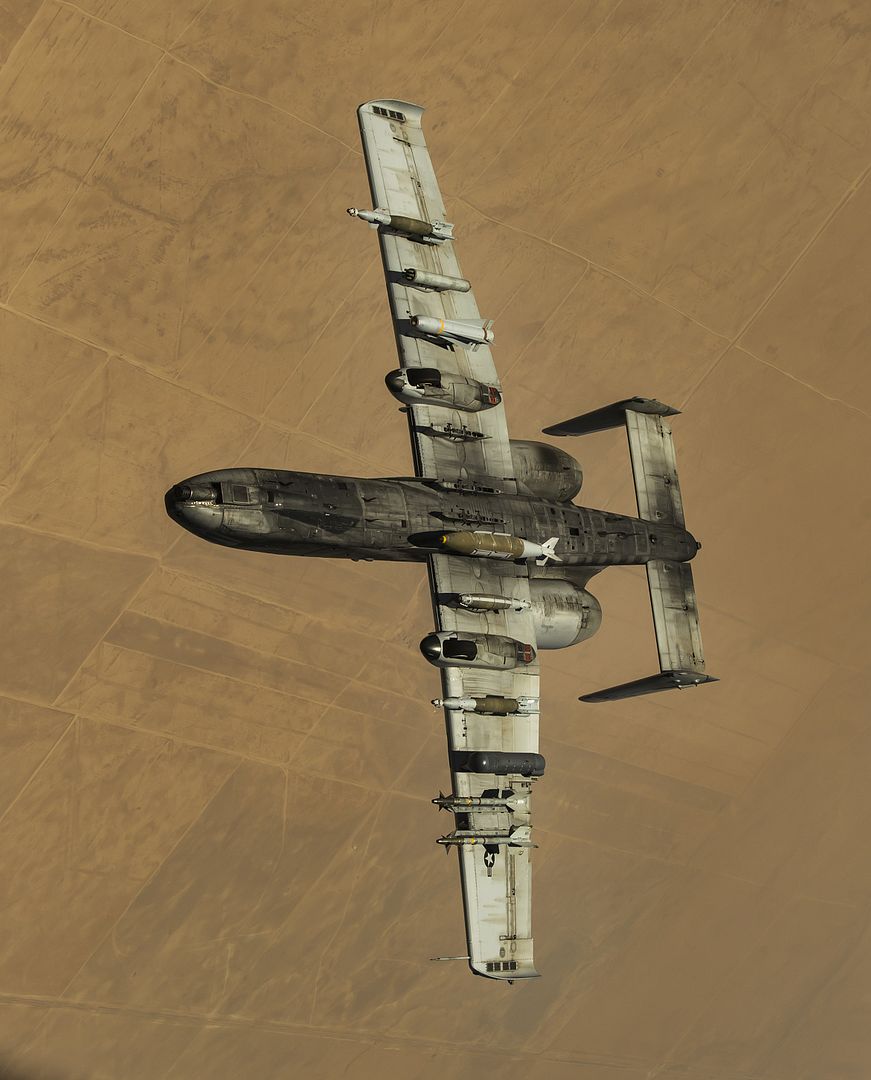
A U.S. Air National Guard C130J aircraft equipped with the MAFFS (Modular Airborne Fire Fighting System) departs the 146th Airlift Wing Port Hueneme California to assist with the containment of the Garza Wildfire blazing near Fresno, California. July 10, 2017. (U.S. Air National Guard photo by: Staff Sgt. Nieko Carzis.)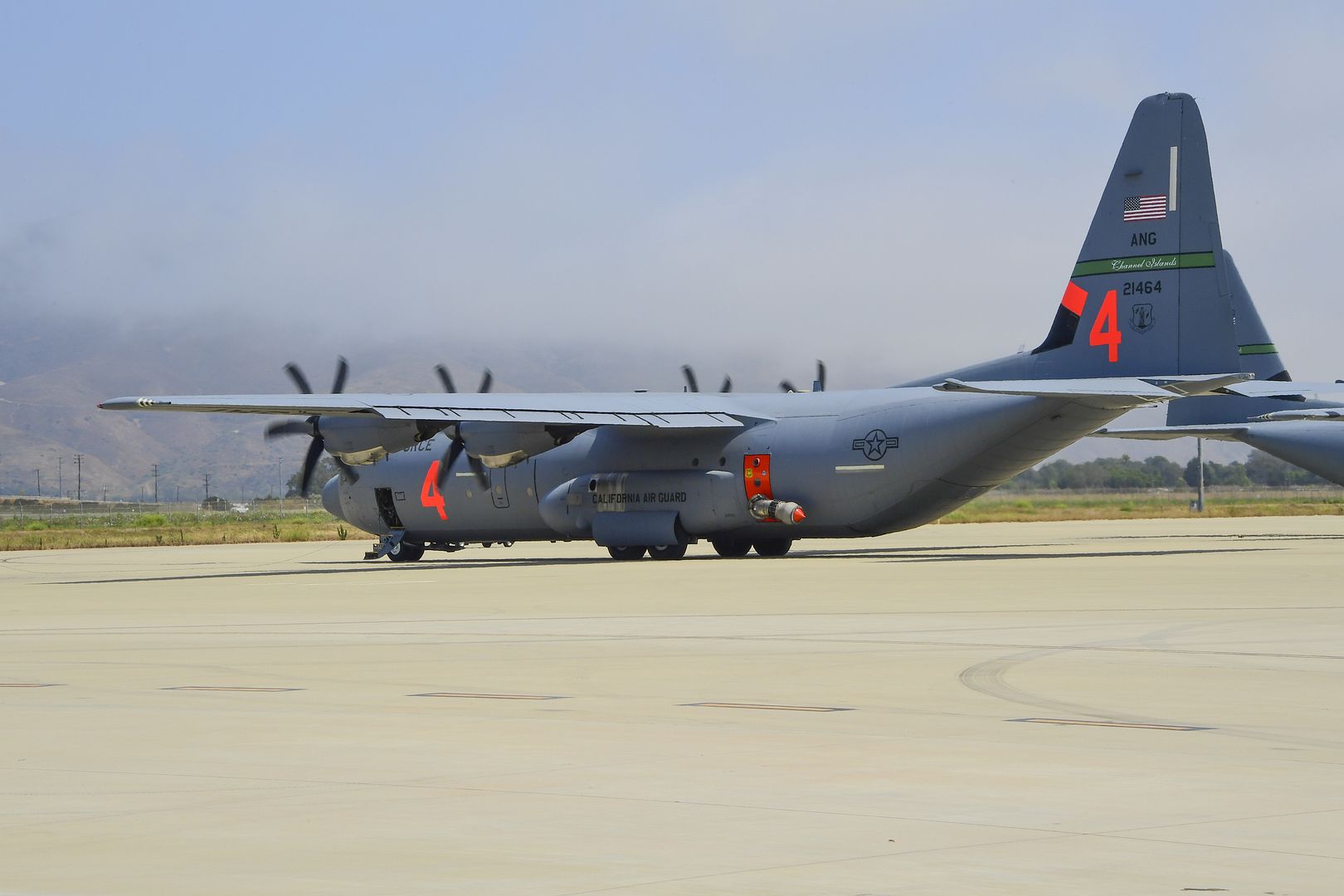
Japan Air Self-Defense Force (JASDF) pilots taxi an F-4 Phantom II at JASDF Hyakuri Air Base, Japan July 7, 2017. Marine Fighter Attack Squadron (VMFA) 232 is conducting exercises with the JASDF as part of the Aviation Training Relocation Program. The ATR is designed to increase operational readiness and bilateral interoperability between U.S. and Japanese forces. Throughout the exercise, VMFA-232 plans to enhance proficiency in dissimilar basic fighter maneuvers, section engaged maneuvers, active air defense and air interdiction, as well as conduct fighter attack instructor work-ups, and weapons and tactics instructor prerequisites. (U.S. Marine Corps photo by Lance Cpl. Mason Roy)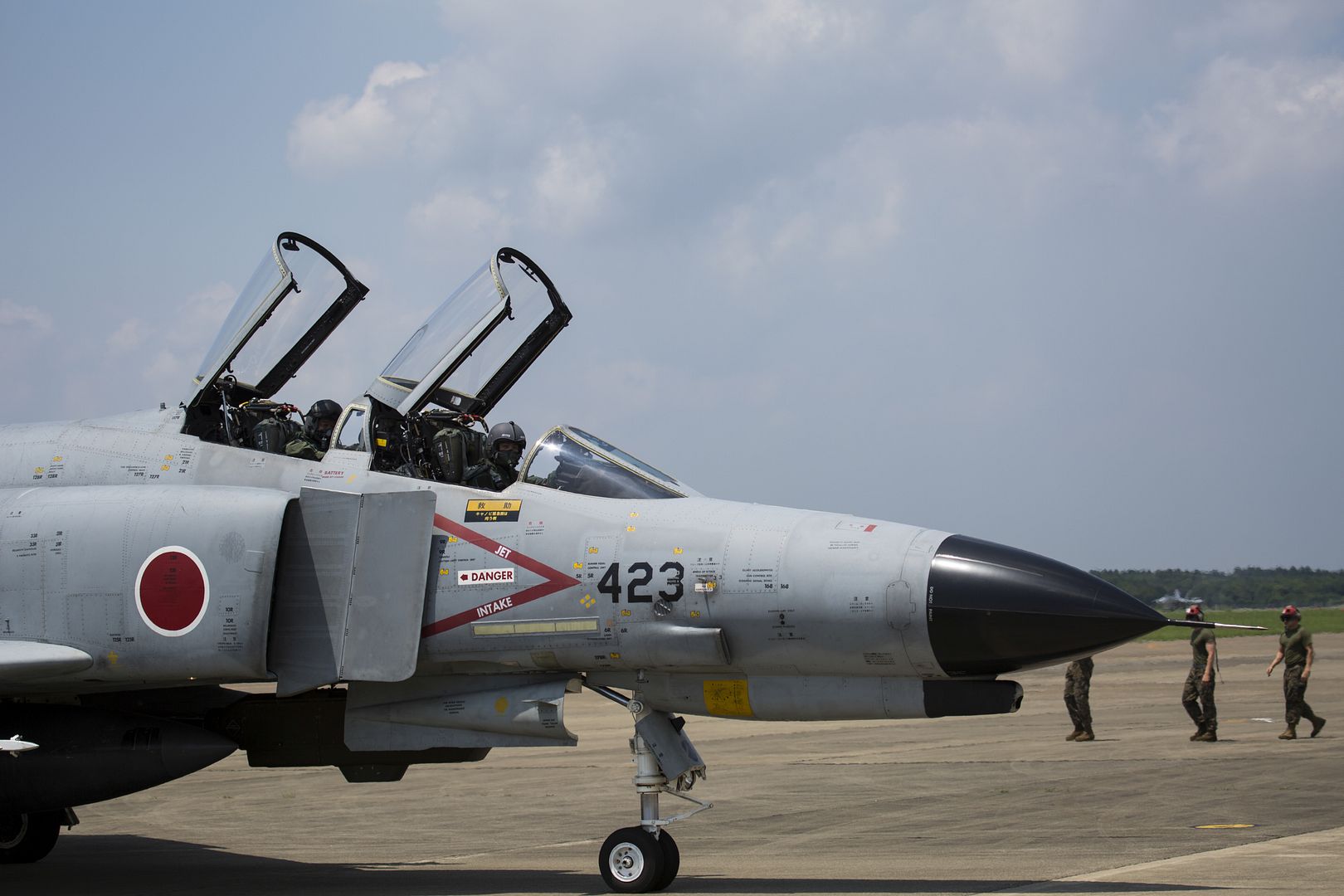
Four F-35B Lightning IIs with Marine Fighter Attack Squadron (VMFA) 211 ?Wake Island Avengers,? 3rd Marine Aircraft Wing, wait to take off on the first day of Red Flag 17-3 at Nellis Air Force Base, Nev., July 10. Red Flag 17-3 is a realistic combat training exercise involving the U.S. Air Force, Army, Navy and Marine Corps and this iteration is the first to have both the Air Force?s F-35A Lightning II and the Marine Corps? F-35B Lightning II, which is capable of short takeoff vertical landing (STOVL). (U.S. Marine Corps photo by Sgt. Lillian Stephens/Released)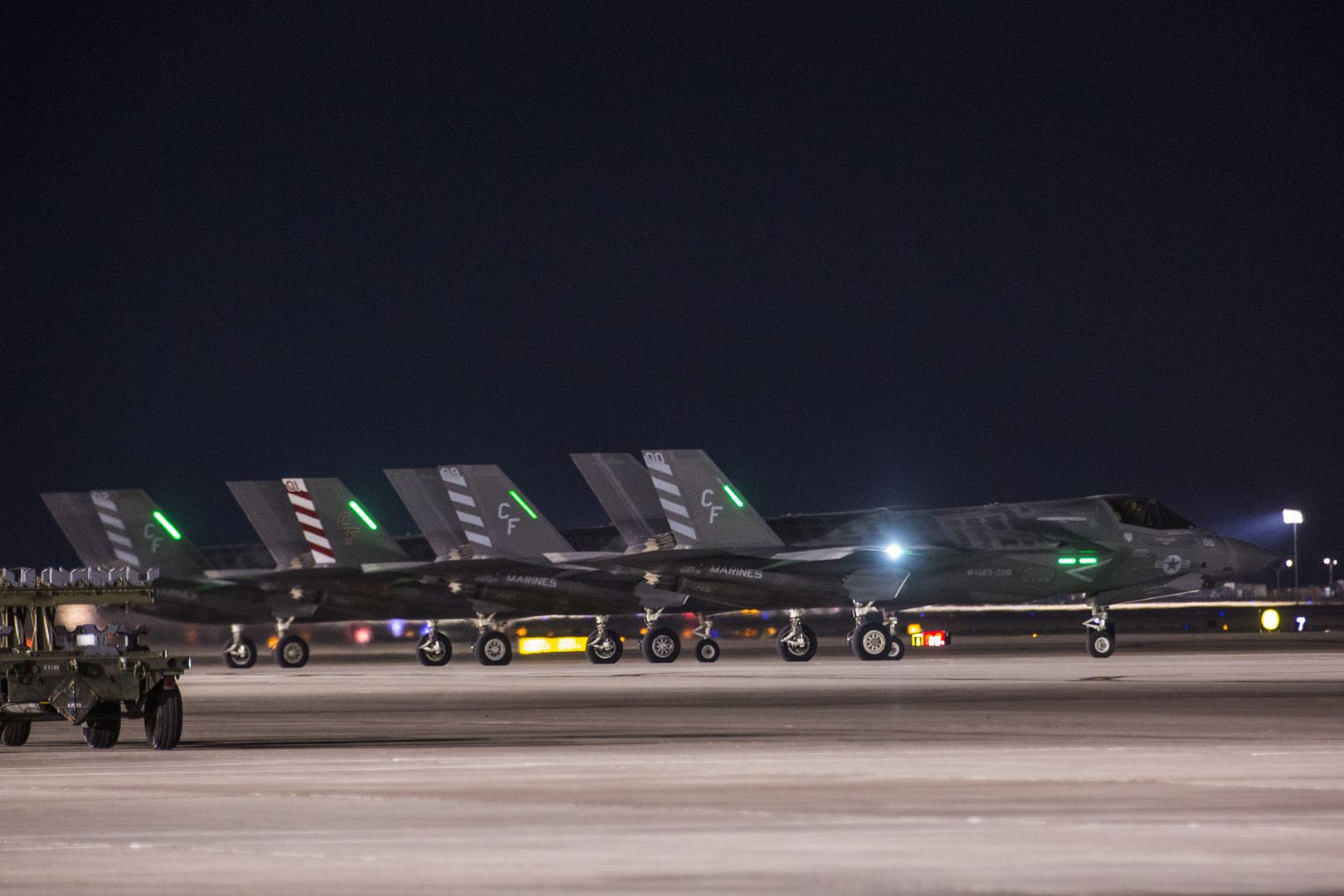
U.S. Air Force F-16 Fighting Falcon aircraft assigned to the 480th Fighter Squadron, Spangdahlem Air Base, Germany, arrive at RAF Lakenheath, England, July 10, 2017. Airmen assigned to the 52nd Fighter Wing will train alongside 48th Fighter Wing Airmen and British Allies during a flying training deployment, which is scheduled to last several weeks. (U.S. Air Force photo by Tech. Sgt. Matthew Plew)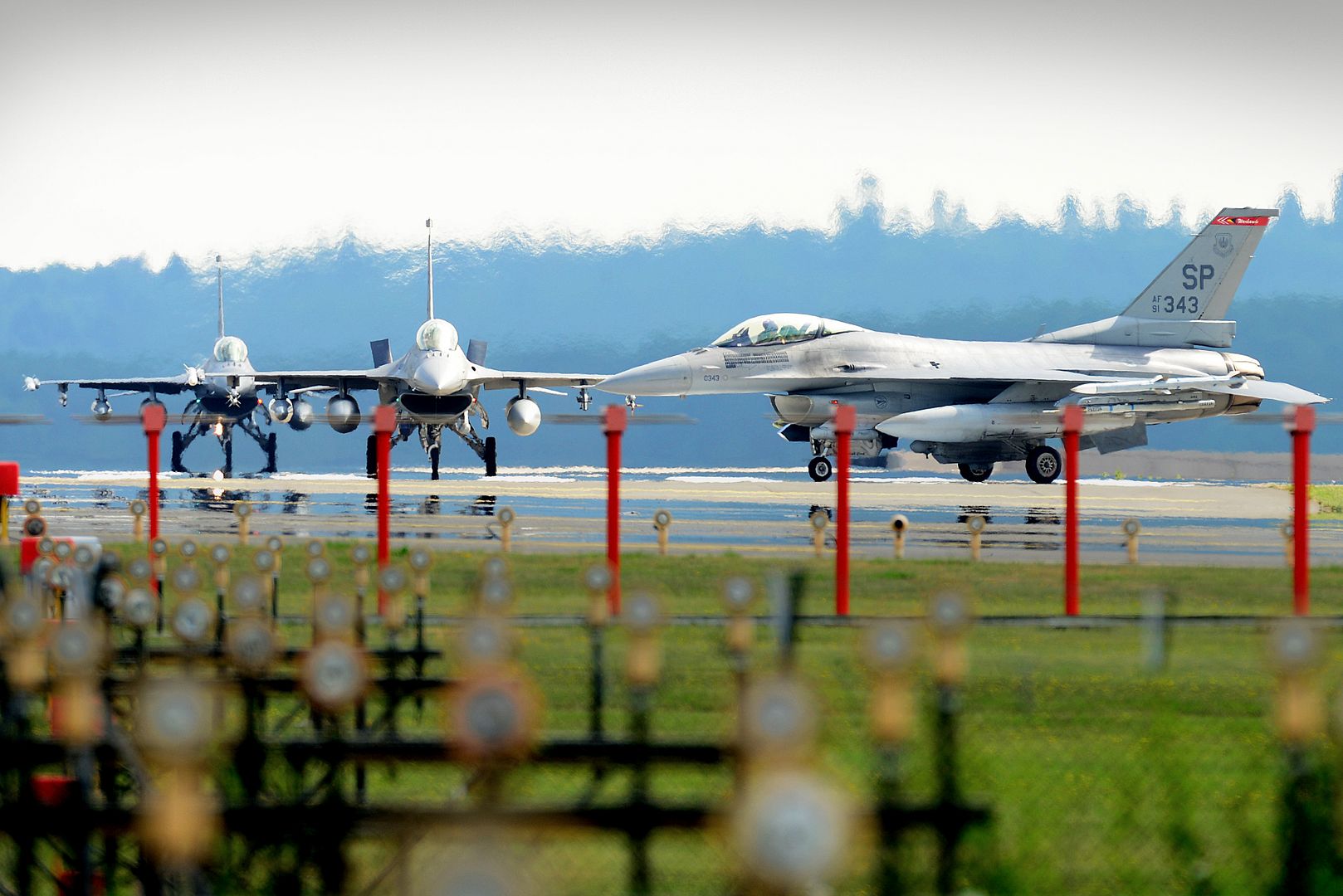
-
 Main AdminAn F-16 Fighting Falcon assigned to 310th Fighter Squadron prepares to land at Luke Air Force Base, Ariz., July 7, 2017. More than 25 nations across the globe fly the F-16 in defense of their nations. (U.S. Air Force photo by Airman 1st Class Caleb Worpel)
Main AdminAn F-16 Fighting Falcon assigned to 310th Fighter Squadron prepares to land at Luke Air Force Base, Ariz., July 7, 2017. More than 25 nations across the globe fly the F-16 in defense of their nations. (U.S. Air Force photo by Airman 1st Class Caleb Worpel)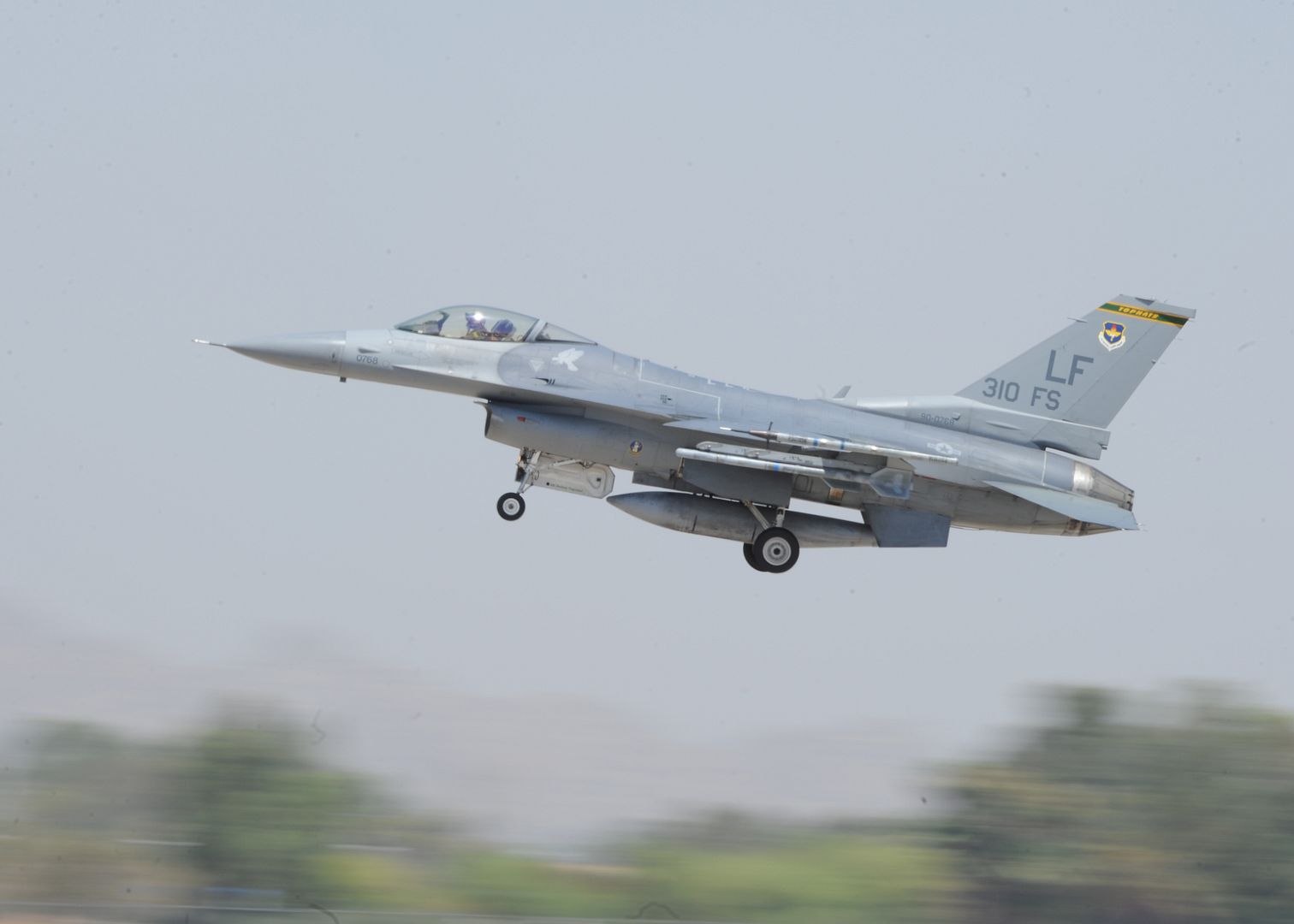
An F-16 Fighting Falcon assigned to 310th Fighter Squadron touches down at Luke Air Force Base, Ariz., July 7, 2017. To date, more than 4,500 F-16s have been built with over 2,200 produced for the U.S. Air Force. With plans to keep the F-16 in service until 2025, the F-16 remains the Air Forces most numerous multi-role fighter aircraft. (U.S. Air Force photo by Airman 1st Class Caleb Worpel)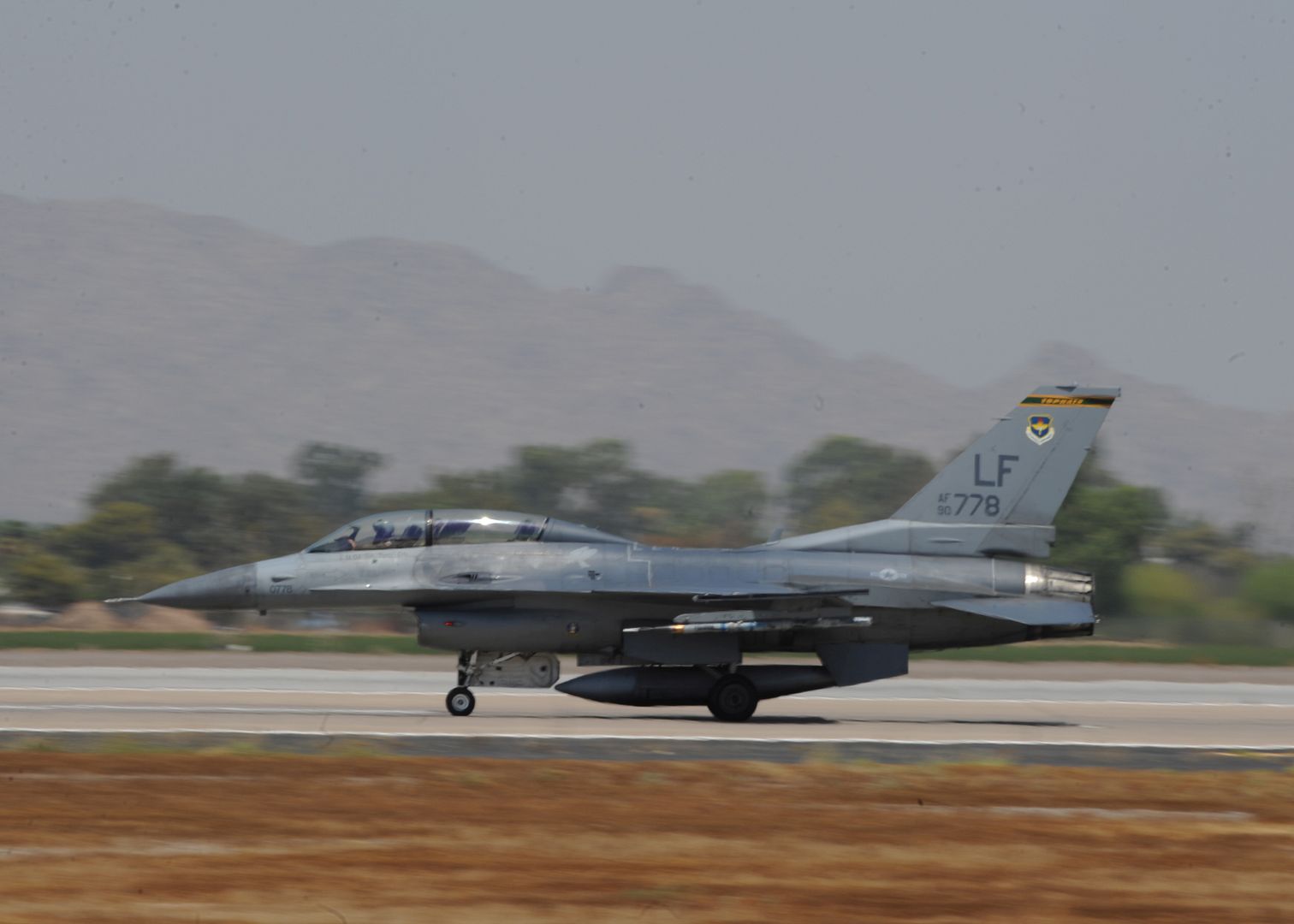
ATLANTIC OCEAN (July 11, 2017) An EA-18G Growler flies over the amphibious assault ship USS Wasp (LHD 1). Wasp is currently underway acquiring certifications in preparation for their upcoming homeport shift to Sasebo, Japan where they are slated to relieve the USS Bonhomme Richard (LHD 6) in the 7th Fleet area of operations. (U.S. Navy photo by Mass Communication Specialist 2nd Class Rawad Madanat/Released)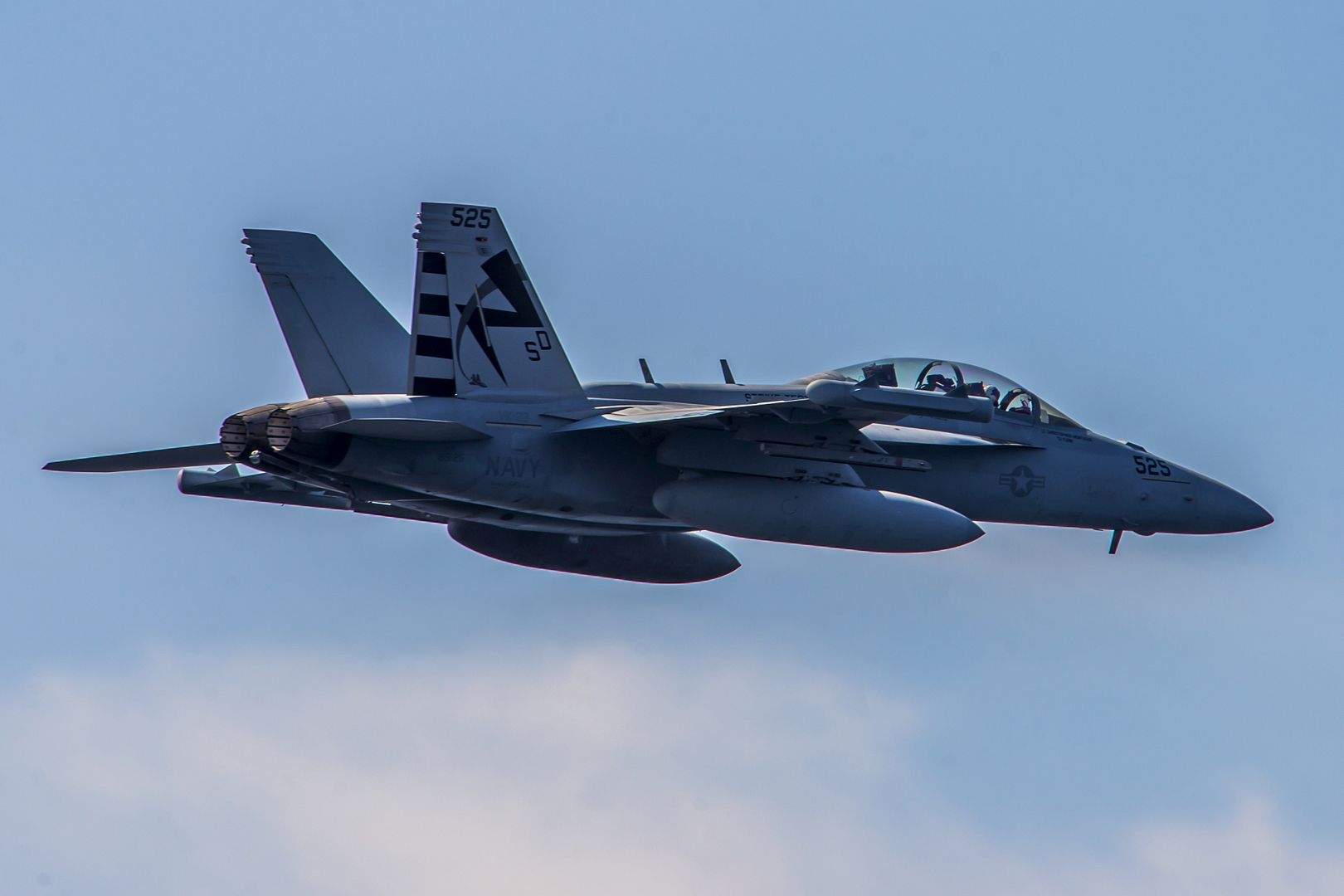
CORAL SEA (July 8, 2017) An F/A-18E Super Hornet, from the "Royal Maces" of Strike Fighter Squadron (VFA) 27, lands on the flight deck of the Navy's forward-deployed aircraft carrier, USS Ronald Reagan (CVN 76), during Talisman Saber 2017. Talisman Saber is a realistic and challenging exercise that brings service members closer and improves both U.S. and Australia's ability to work bilaterally and multilaterally, and prepares them to be poised to provide security regionally and globally. (U.S. Navy photo by Mass Communication Specialist 2nd Class Kenneth Abbate/Released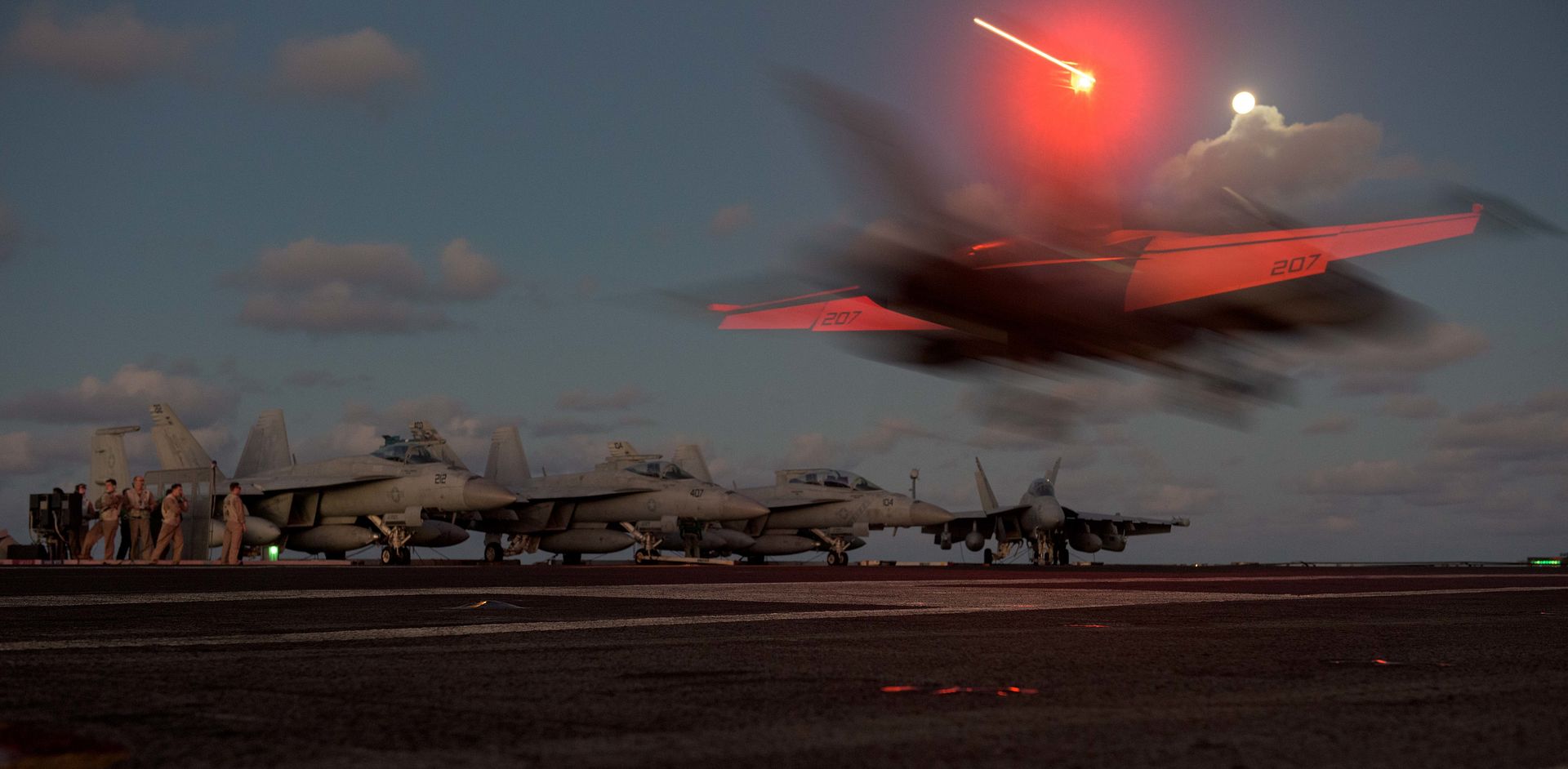
CORAL SEA (July 8, 2017) An EA-18G Growler, from the "Shadowhawks" of Electronic Attack Squadron (VAQ) 141, lands on the flight deck of the Navy's forward-deployed aircraft carrier, USS Ronald Reagan (CVN 76), during Talisman Saber 2017. Talisman Saber is a realistic and challenging exercise that brings service members closer and improves both U.S. and Australia's ability to work bilaterally and multilaterally, and prepares them to be poised to provide security regionally and globally. (U.S. Navy photo by Mass Communication Specialist 2nd Class Kenneth Abbate/Released)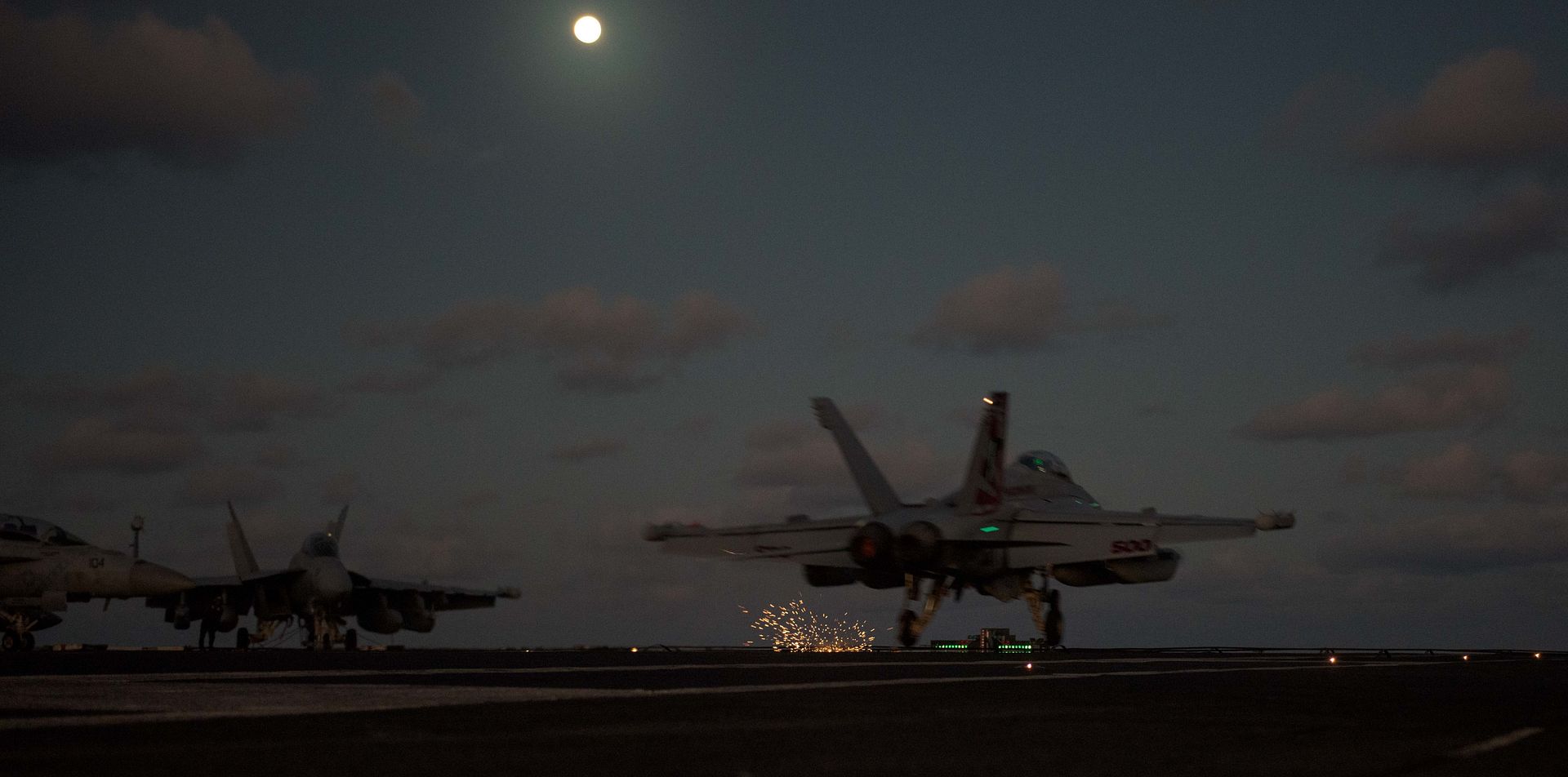
CORAL SEA (July 8, 2017) An F/A-18E Super Hornet, from the "Eagles" of Strike Fighter Squadron (VFA) 115, prepares to land on the flight deck of the Navy's forward-deployed aircraft carrier, USS Ronald Reagan (CVN 76), during Talisman Saber 2017. Talisman Saber is a realistic and challenging exercise that brings service members closer and improves both U.S. and Australia's ability to work bilaterally and multilaterally, and prepares them to be poised to provide security regionally and globally. (U.S. Navy photo by Mass Communication Specialist 2nd Class Kenneth Abbate/Released)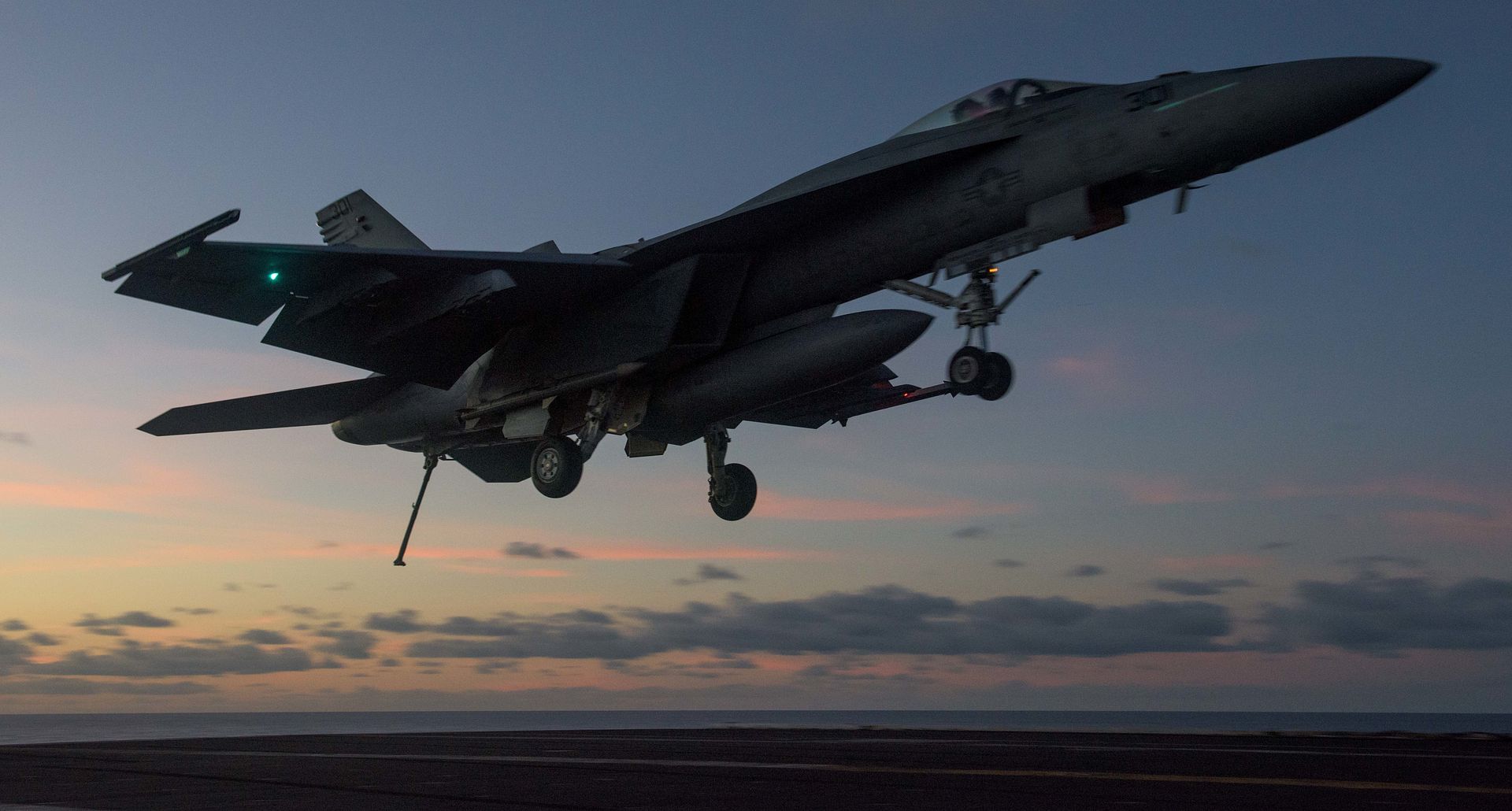
U.S. Air Force loadmasters from the 8th Expeditionary Air Mobility Squadron load a Qatar Emiri Air Force C-17 Globemaster in preparation for an upcoming mission in support of Operation Inherent Resolve at Al Udeid Air Base, Qatar. The mission, on July 9, 2017, was the culmination of a strong partnership and years of training among Coalition forces.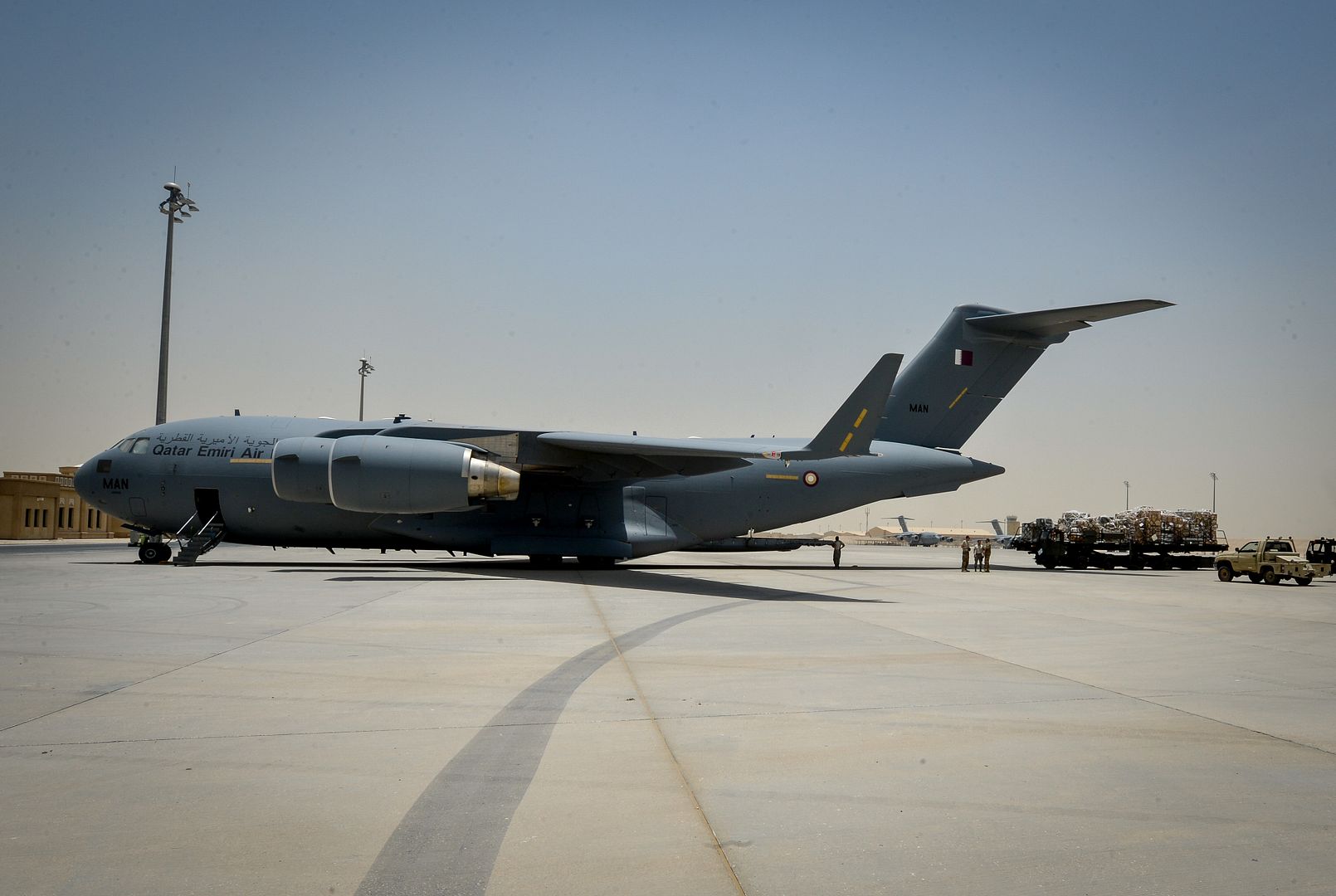
The U.S. Air Force Thunderbirds receive aerial refueling from a U.S. Air Force KC-135 Stratotanker assigned to the 100th Air Refueling Wing, Royal Air Force Mildenhall, England en route to the practice fly by of Bastille Day in Paris, France, July 11, 2017. (U.S. Air Force Photo by Tech. Sgt. Christopher Boitz)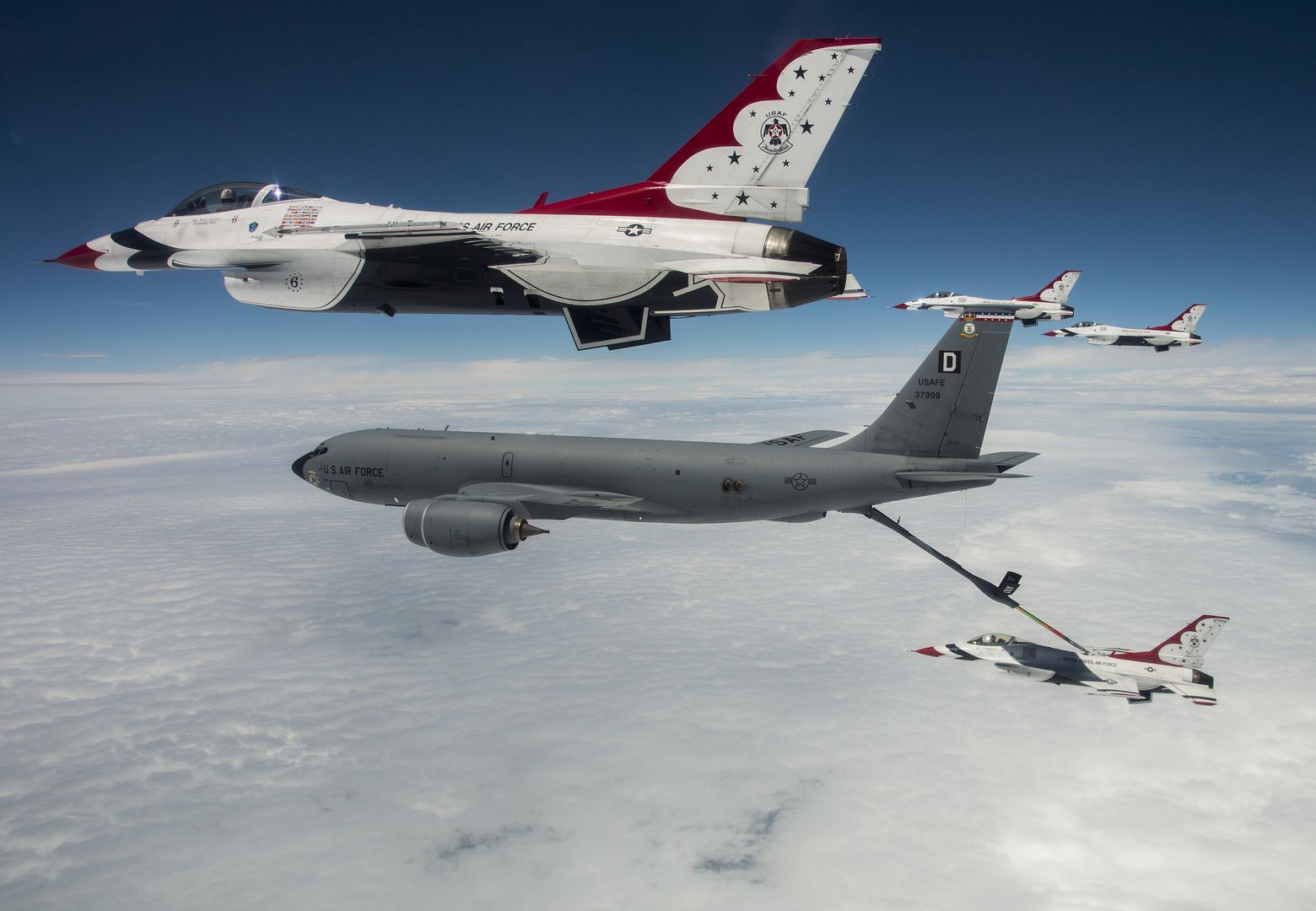
The U.S. Air Force Thunderbirds fly by the Eiffel Tower during a practice procession in Paris, France, July 11, 2017. The Thunderbirds, along with more than 90 aircraft, will be in attendance to help France celebrate the 2017 Bastille Day festivities. (U.S. Air Force Photo by Tech. Sgt. Christopher Boitz)
The U.S. Air Force Thunderbirds fly by Mont Saint-Michel, Normandy, France, July 11, 2017. The Thunderbirds were participating flew over several historic sites during a practice fly by of Paris, France for Bastille Day. (U.S. Air Force Photo by Tech. Sgt. Christopher Boitz)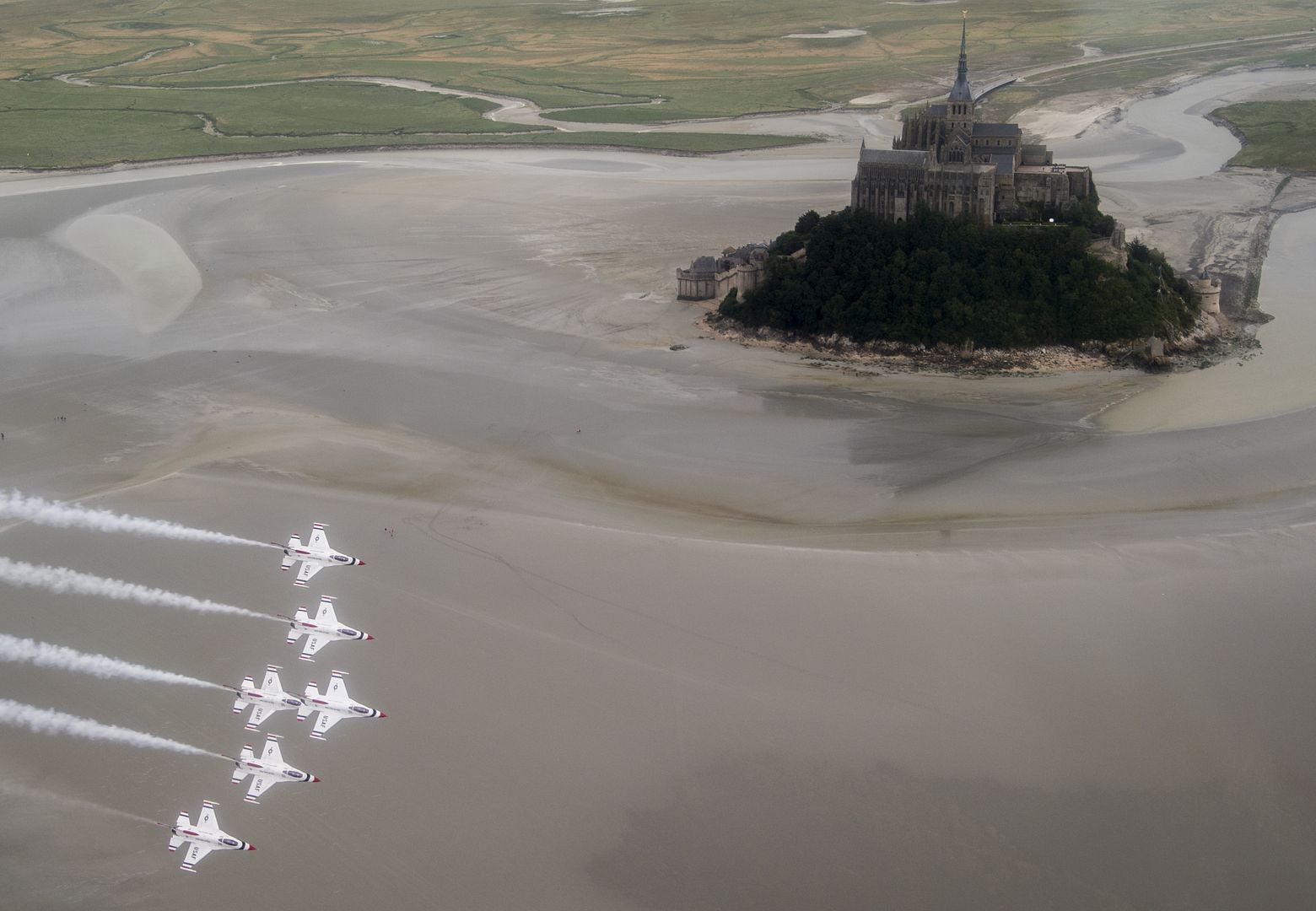
11th July
Ten Airbus A321LR aircraft will be joining the fleet of Canadian airline Air Transat, making it the first North American operator of the longest-range single-aisle aircraft in the world. Air Transat will lease the aircraft through a deal with AerCap, and plans entry into service starting in 2019.
The A321LR builds on the success of the A321neo, which has captured over 80 percent of the market share with more than 1,400 orders to date. The LR option extends the aircraft?s range to up to 4,000 nautical miles and brings with it a 30-percent reduction in operating cost compared to its nearest competitor.
?This is an ideal aircraft for the North American market, and particularly for a carrier like Air Transat,? said John Leahy, Airbus Chief Operating Officer-Customers. ?It gives operators a highly efficient and affordable modern option for their transatlantic routes, and we look forward to other North American carriers following Air Transat?s example.?
The A321LR enables airlines to access new long-haul markets that were previously inaccessible with current single-aisle aircraft. With 206 passengers in a typical two-class layout, the A321LR offers the possibility for each passenger to carry up to three bags.
The A320neo family incorporates the very latest technologies, including new-generation engines and Sharklets, which together deliver at least 15 percent fuel savings at delivery and 20 percent by 2020, as well as a 50-percent noise reduction. With more than 5,100 orders received from over 90 customers since its launch in 2010, the A320neo family has captured some 60 percent share of the market.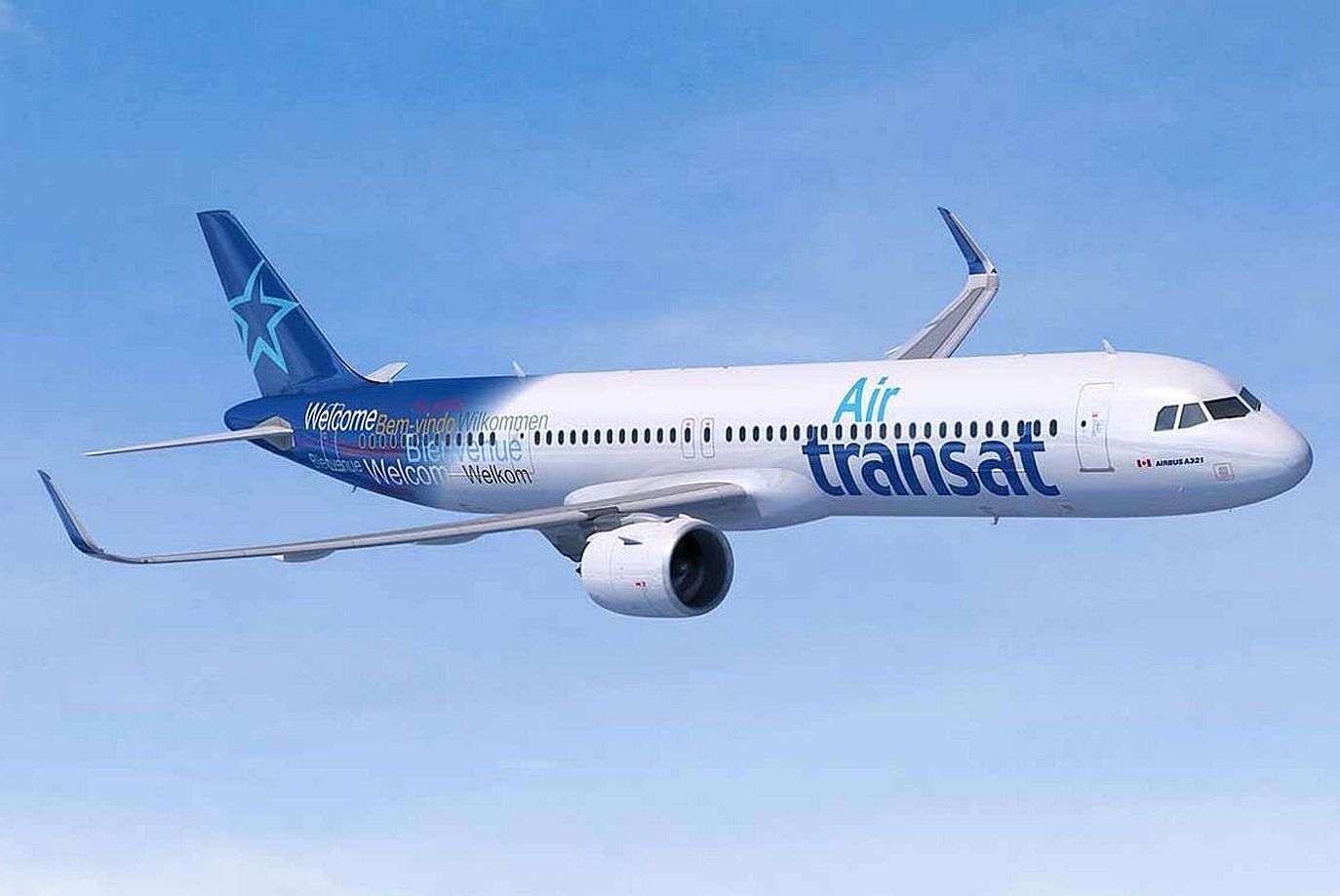
-
 Main AdminATLANTIC OCEAN (July 12, 2017) Sailors perform a chock and chain evolution on an F-35B aboard the amphibious assault ship USS Wasp (LHD 1). Wasp is currently underway acquiring certifications in preparation for their upcoming homeport shift to Sasebo, Japan where they are slated to relieve the USS Bonhomme Richard (LHD 6) in the 7th Fleet area of operations. (U.S. Navy photo by Mass Communication Specialist 3rd Class Sean Galbreath/Released)
Main AdminATLANTIC OCEAN (July 12, 2017) Sailors perform a chock and chain evolution on an F-35B aboard the amphibious assault ship USS Wasp (LHD 1). Wasp is currently underway acquiring certifications in preparation for their upcoming homeport shift to Sasebo, Japan where they are slated to relieve the USS Bonhomme Richard (LHD 6) in the 7th Fleet area of operations. (U.S. Navy photo by Mass Communication Specialist 3rd Class Sean Galbreath/Released)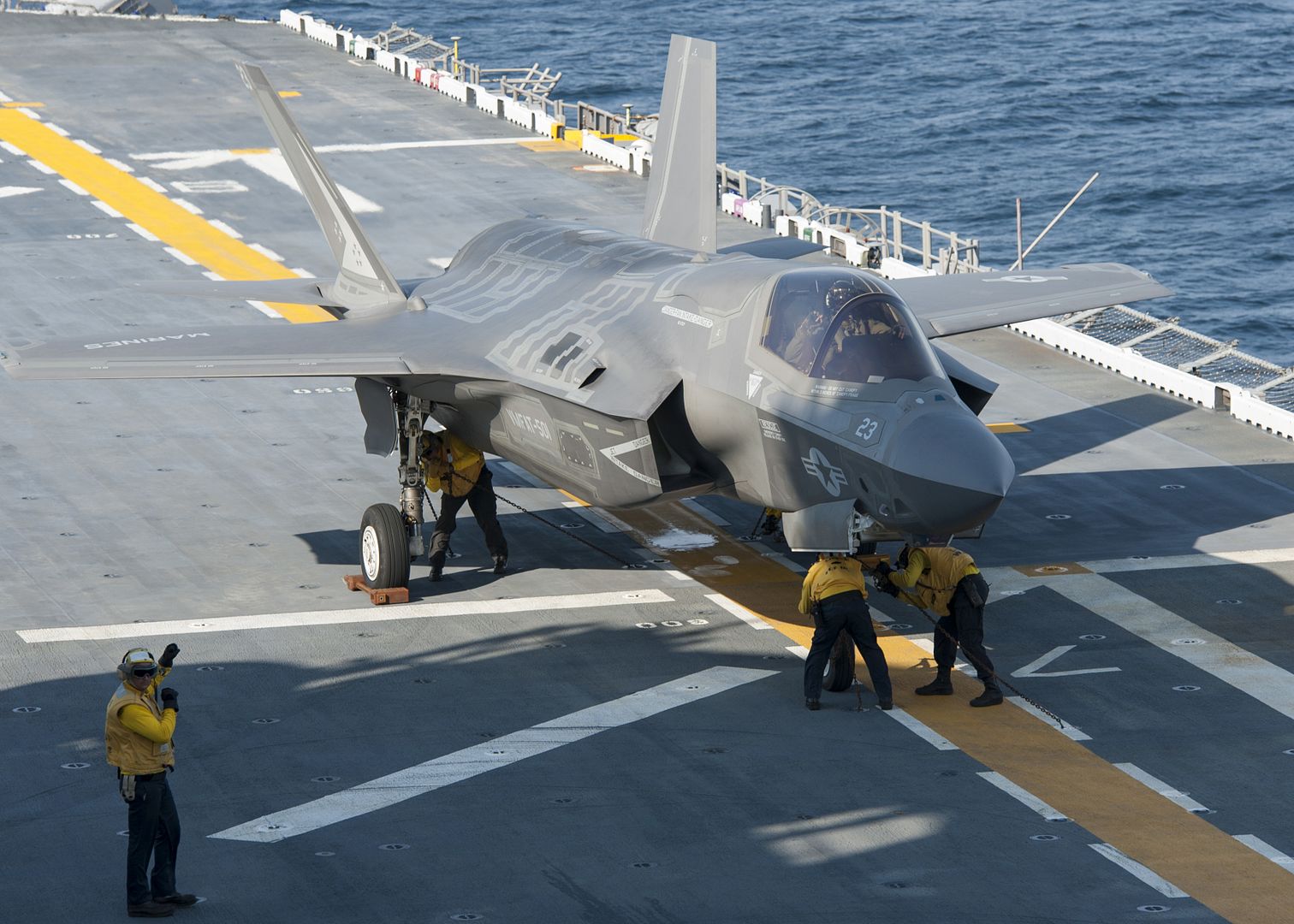
ATLANTIC OCEAN (July 12, 2017) An F-35B lands on the flight deck aboard the amphibious assault ship USS Wasp (LHD 1). Wasp is currently underway acquiring certifications in preparation for their upcoming homeport shift to Sasebo, Japan where they are slated to relieve the USS Bonhomme Richard (LHD 6) in the 7th Fleet area of operations. (U.S. Navy photo's by Mass Communication Specialist 3rd Class Sean Galbreath/Released)
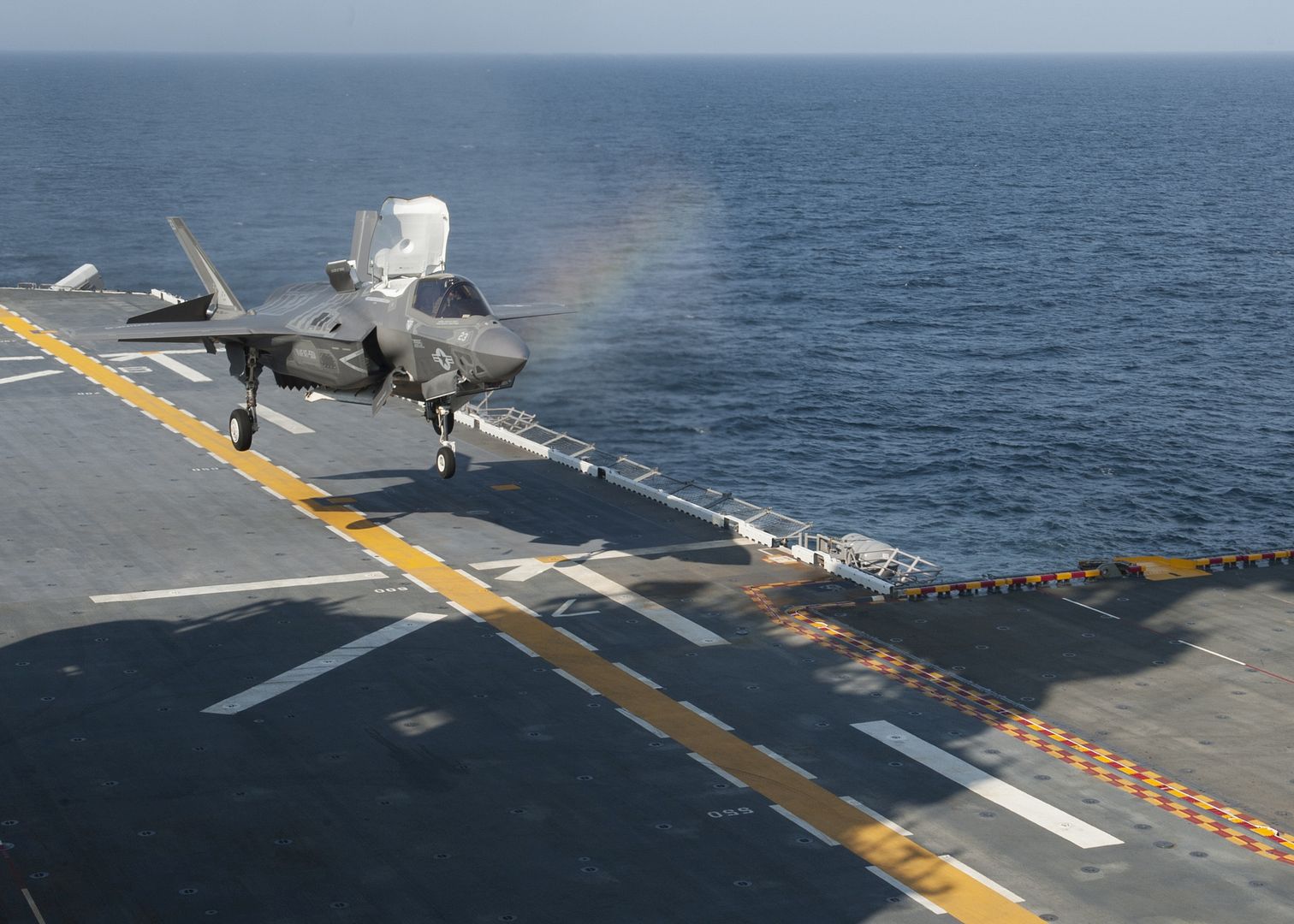
CORAL SEA (July 12, 2017) A CH-53E Super Stallion helicopter, assigned to Marine Medium Tiltrotor Squadron (VMM) 265 (Reinforced) and embarked aboard the amphibious assault USS Bonhomme Richard (LHD 6), offloads Marines, assigned to the 31st Marine Expeditionary Unit (MEU), during a ground assault training exercise as a part of Talisman Saber 17. Bonhomme Richard, part of a combined U.S.-Australia-New Zealand expeditionary strike group, is undergoing a series of scenarios that will increase naval proficiencies in operating against blue-water adversarial threats and in its primary mission of launching Marine forces ashore in the littorals. Talisman Saber is a biennial U.S.-Australia bilateral exercise held off the coast of Australia meant to achieve interoperability and strengthen the U.S.-Australia alliance. (U.S. Navy photo by Mass Communication Specialist 3rd Class Sarah Myers/Released)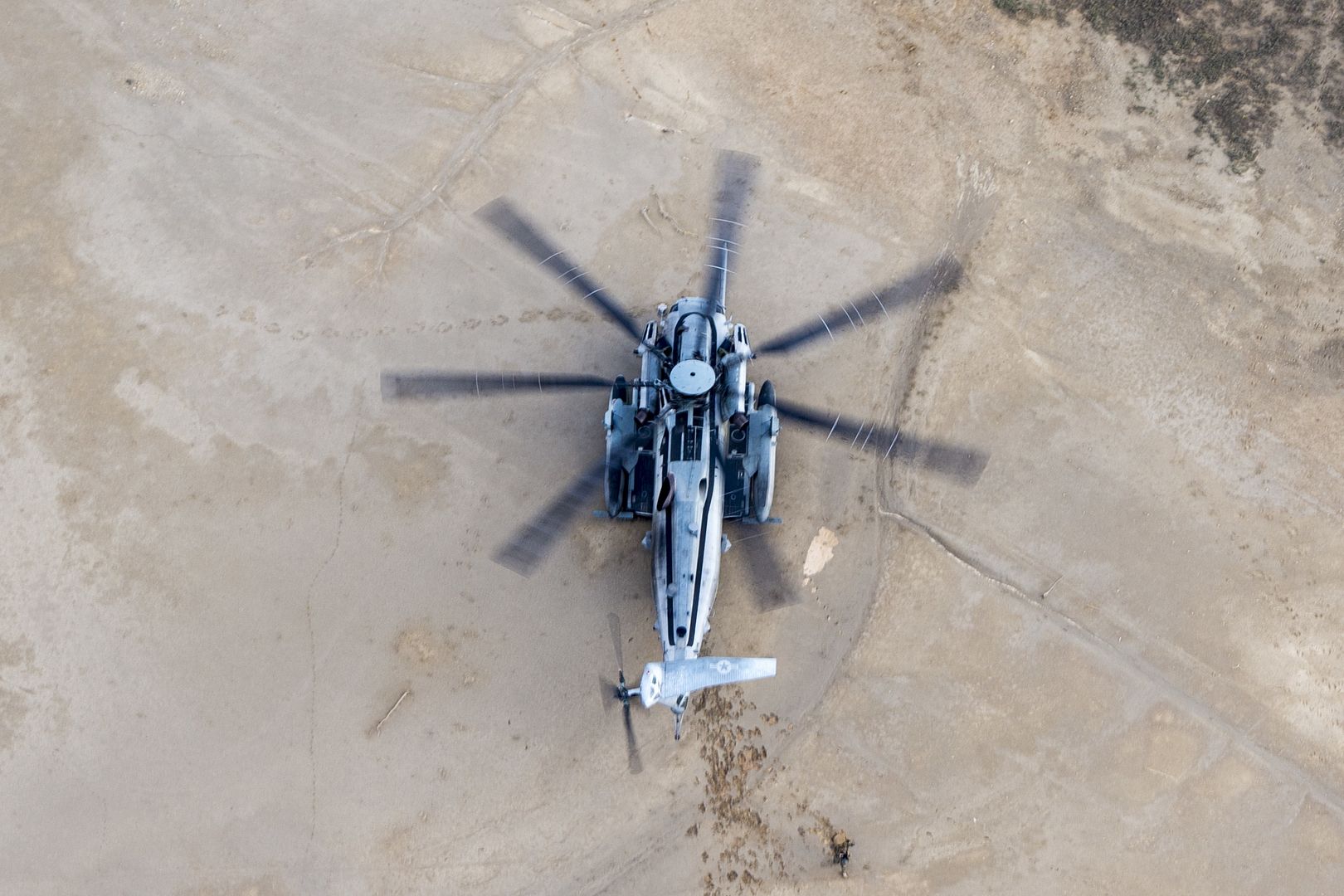
An MV-22B Osprey tiltrotor aircraft sits on the flight deck of the USS Bonhomme Richard (LHD 6) during Exercise Talisman Saber 17 while underway in the Pacific Ocean, June 10, 2017. The MV-22 belongs to Marine Medium Tiltrotor Squadron 265 (Reinforced), part of the Aviation Combat Element of the 31st Marine Expeditionary Unit. Talisman Saber is a biennial exercise designed to improve the interoperability between Australian and U.S. forces. The 31st MEU is taking part in Talisman Saber while deployed on a regularly-scheduled patrol of the Indo-Asia-Pacific region. (U.S. Marine Corps photo by Lance Cpl. Amy Phan/Released)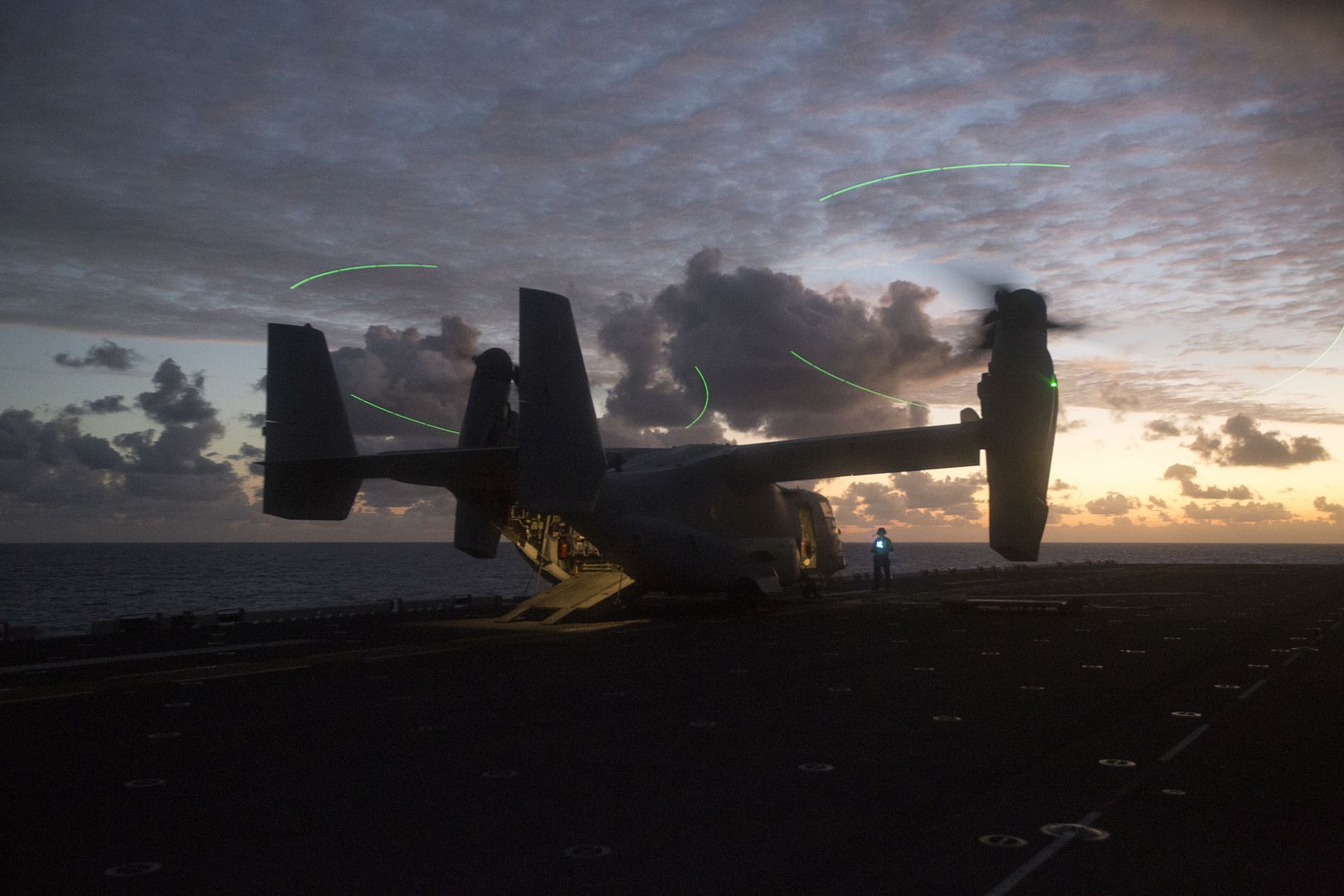
A CH-53E Super Stallion heavy-lift helicopter with Marine Medium Tiltrotor Squadron 265 (Reinforced) flies over the Pacific Ocean during helocast training as part of Talisman Saber 2017, July 11, 2017. VMM-265 is part of the Aviation Combat Element of the 31st Marine Expeditionary Unit. Talisman Saber is a biennial exercise designed to improve the interoperability between Australian and U.S. forces. The 31st MEU is taking part in Talisman Saber 17 while deployed on a regularly-scheduled patrol of the Indo-Asia-Pacific region.
(U.S. Marine Corps photo by Lance Cpl. Garett Burns/Released)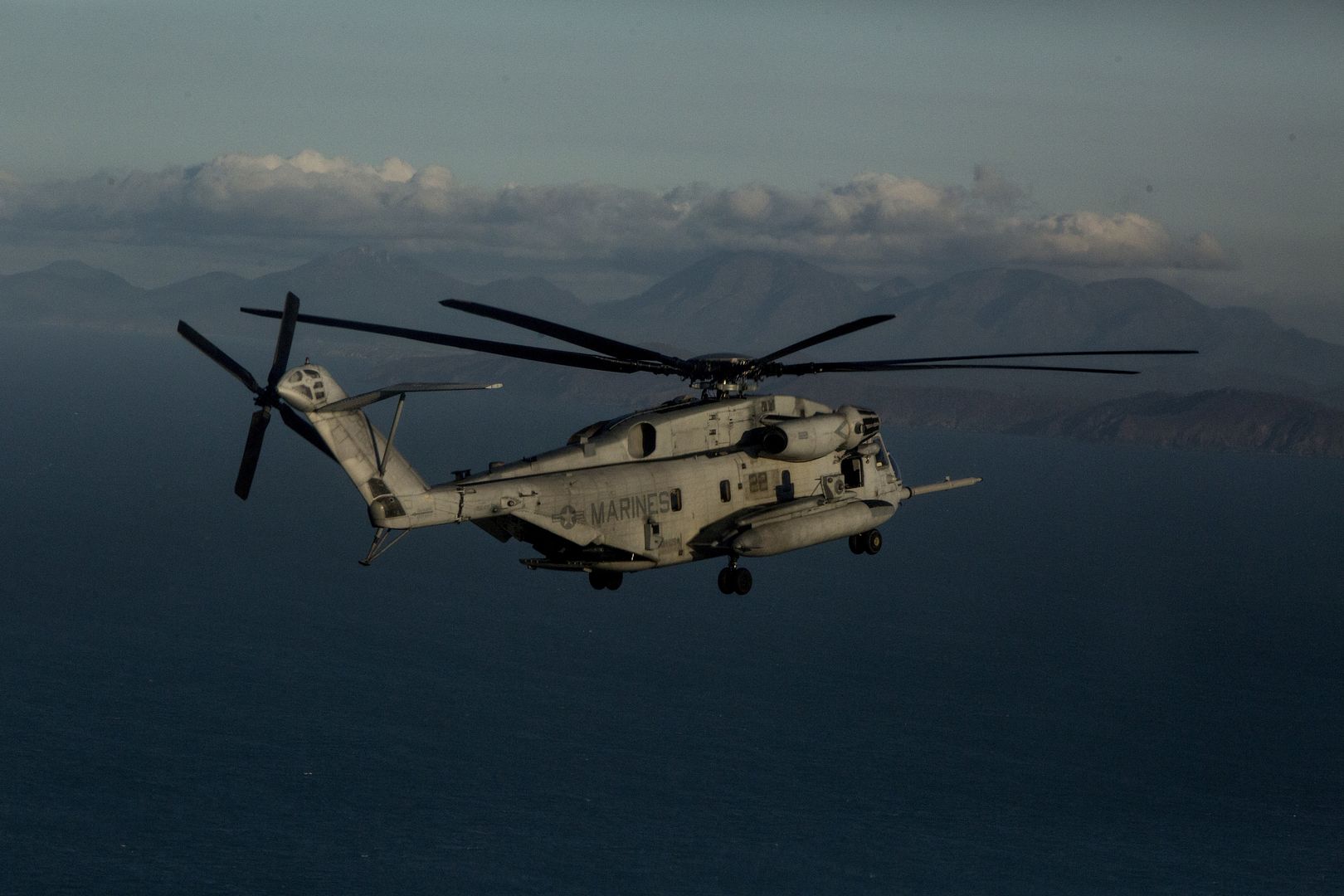
A U.S. Air Force Thunderbird flies in formation while waiting to be refueled by a U.S. Air Force KC-135 Stratotanker assigned to the 100th Air Refueling Wing, over France, July 11, 2017. The Thunderbirds performed practice flyovers in Paris to hone their skills in preparation for their Bastille Day flyover July 14. (U.S. Air Force photo by Airman 1st Class Benjamin Cooper)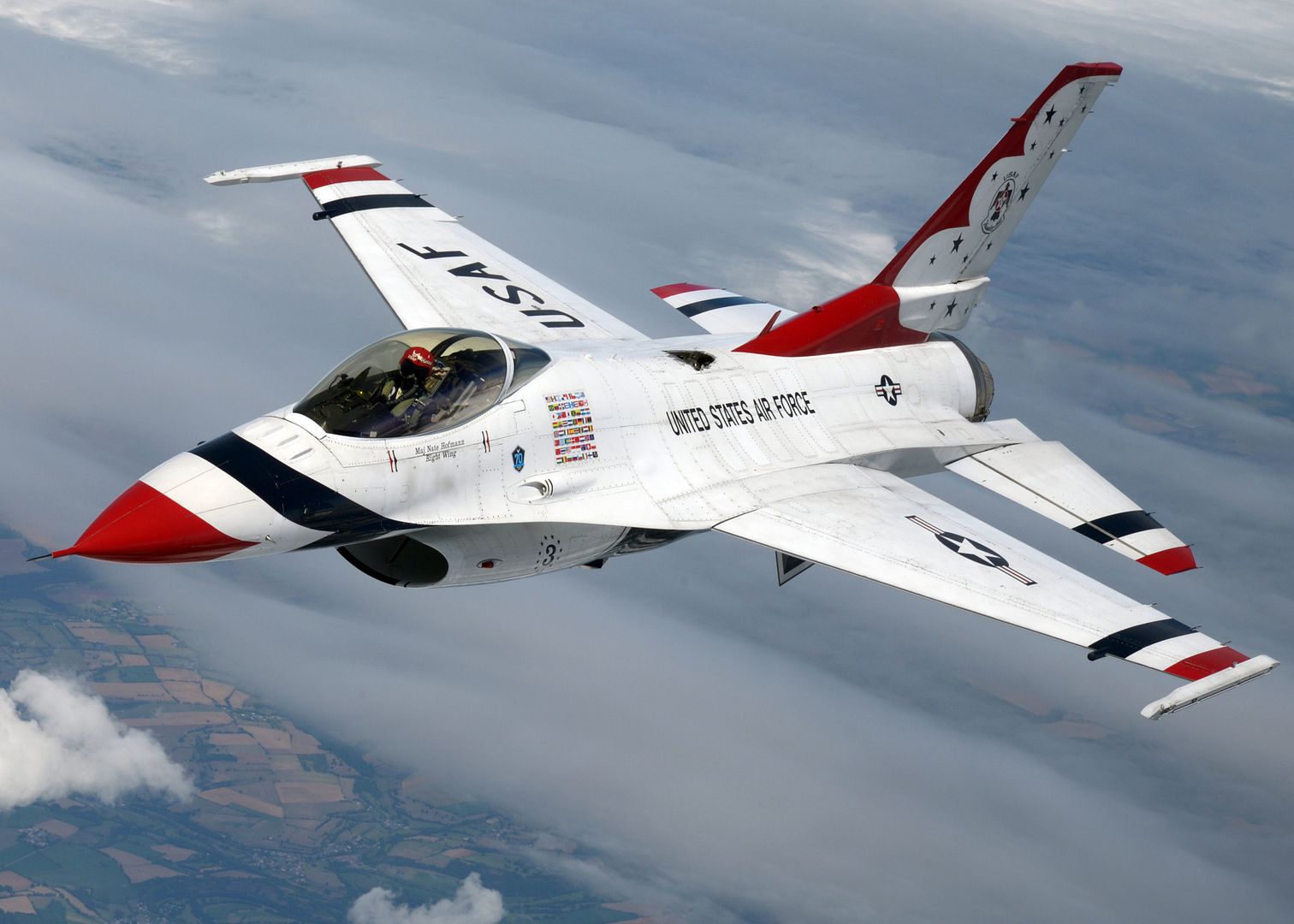
United States Navy EA-18G Growler from VAQ-132 "Scorpion" Squadron conducts Air to Air refuelling operations with an RAAF KC-30 Multi Role Tanker Transport aircraft from No 33 Squadron. RAAF Base Amberley is the main operating base for RAAF and United States aircraft activities during Talisman Saber 2017. (Royal Australian Air Force photo's by Sgt. Peter Borys)
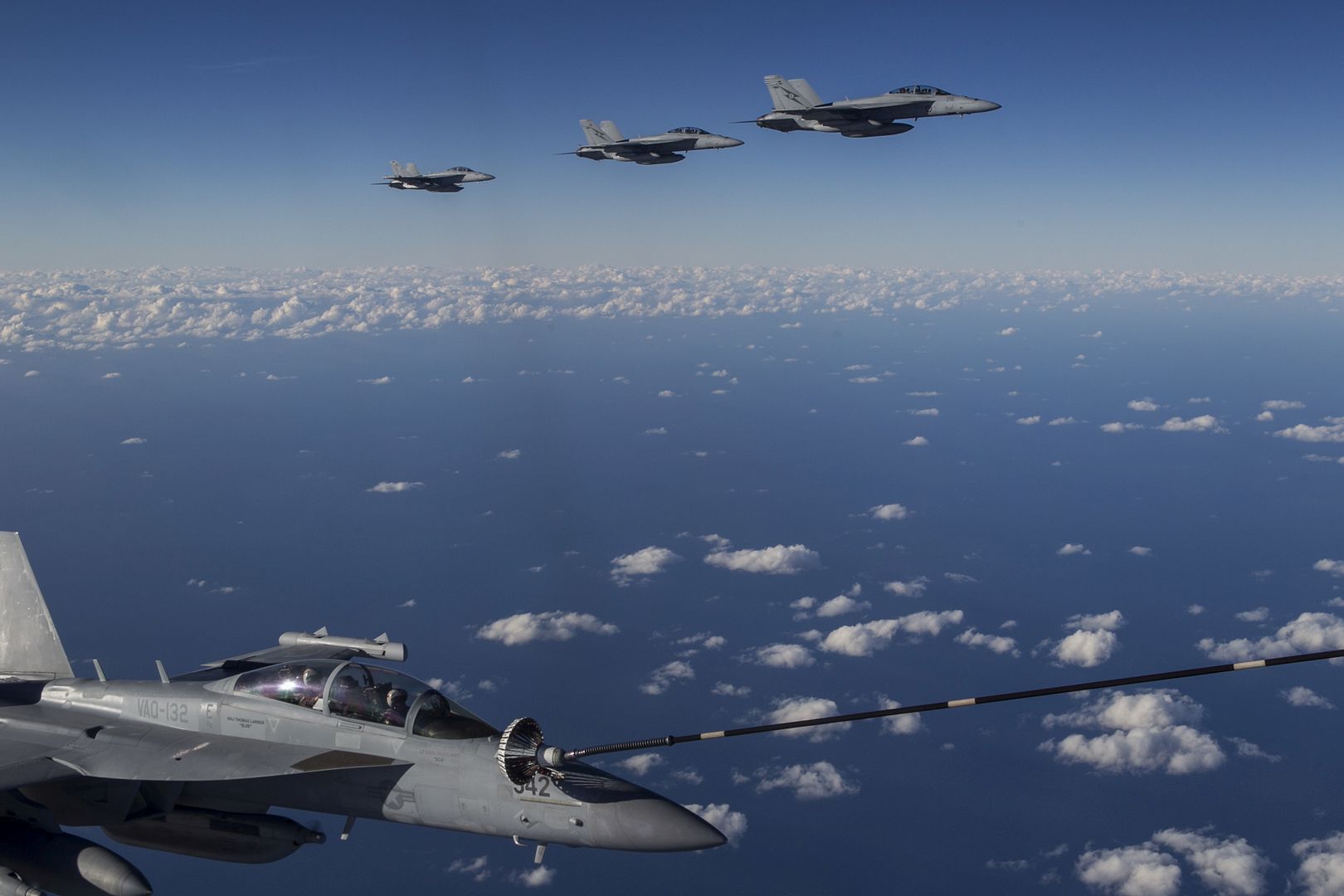
JULY 13
The Defence Secretary, the Rt Hon Sir Michael Fallon, announced today the numbers of the UK?s two new Maritime Patrol Aircraft squadrons.
Nine new P-8A Poseidon aircraft will be operated by number 120 Squadron and number 201 Squadron from RAF Lossiemouth in Moray.
The Chief of the Air Staff, Air Chief Marshal Sir Stephen Hillier said: ?Today is an important milestone in the P-8A Poseidon programme which will bring to the Royal Air Force an unrivalled maritime patrol capability. The advanced state-of-the-art sensors aboard the P-8A will provide global protection to UK, NATO and our Allies? submarines and warships, and enhance and complement the UK?s standing search and rescue responsibilities.
?It is also a great pleasure to welcome back 120 and 201 Squadrons. Both have long and distinguished records serving in the maritime role and together they will help forge the next generation Royal Air Force.?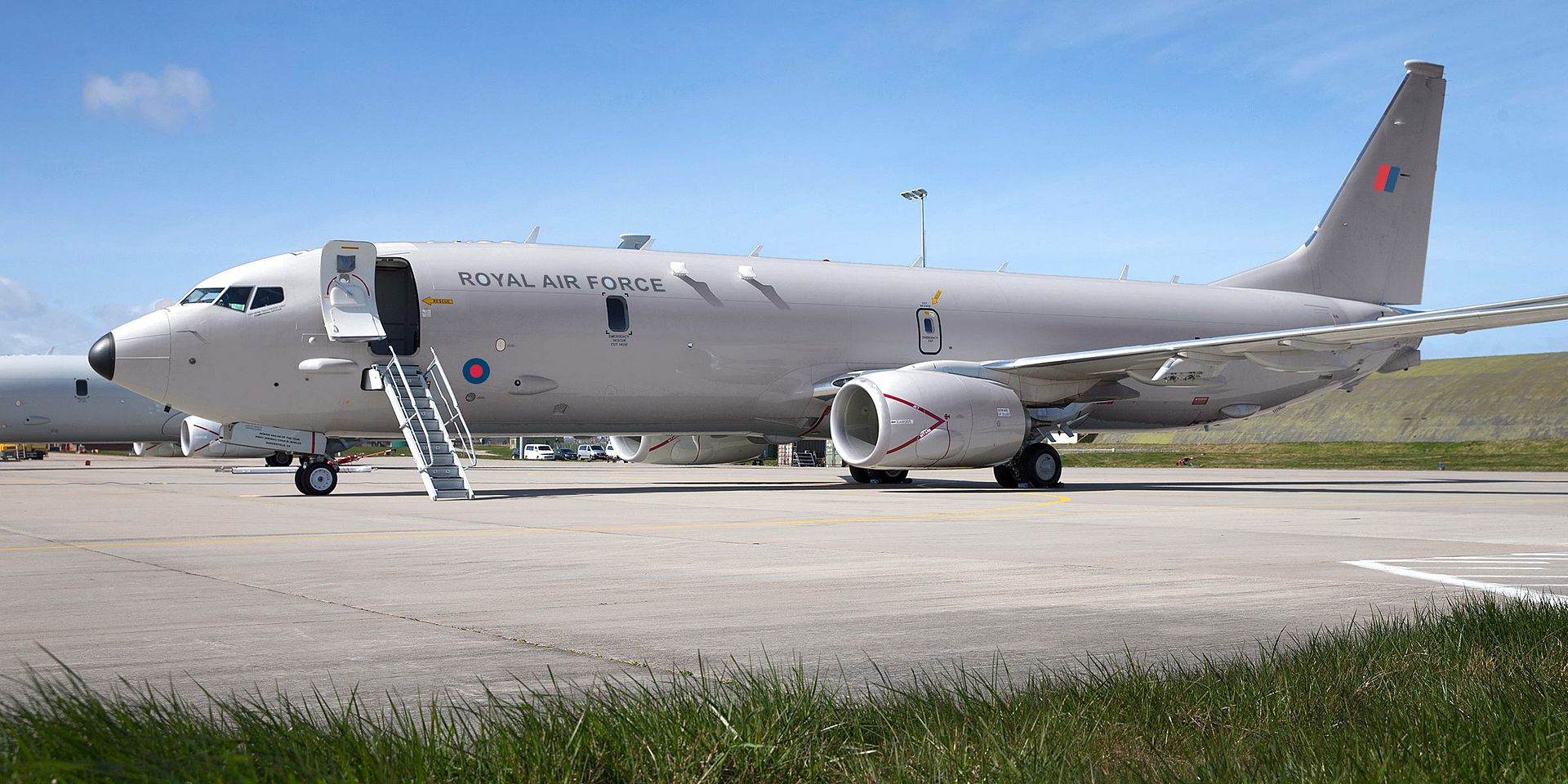
Post a reply
- Go to Previous topic
- Go to Next topic
- Go to Welcome
- Go to Introduce Yourself
- Go to General Discussion
- Go to Screenshots, Images and Videos
- Go to Off topic
- Go to Works in Progress
- Go to Skinning Tips / Tutorials
- Go to Skin Requests
- Go to IJAAF Library
- Go to Luftwaffe Library
- Go to RAF Library
- Go to USAAF / USN Library
- Go to Misc Library
- Go to The Ops Room
- Go to Made in Germany
- Go to Campaigns and Missions
- Go to Works in Progress
- Go to Juri's Air-Raid Shelter
- Go to Campaigns and Missions
- Go to Works in Progress
- Go to Skinpacks
- Go to External Projects Discussion
- Go to Books & Resources
